Quick filters:
Anglo saxon era Stock Photos and Images
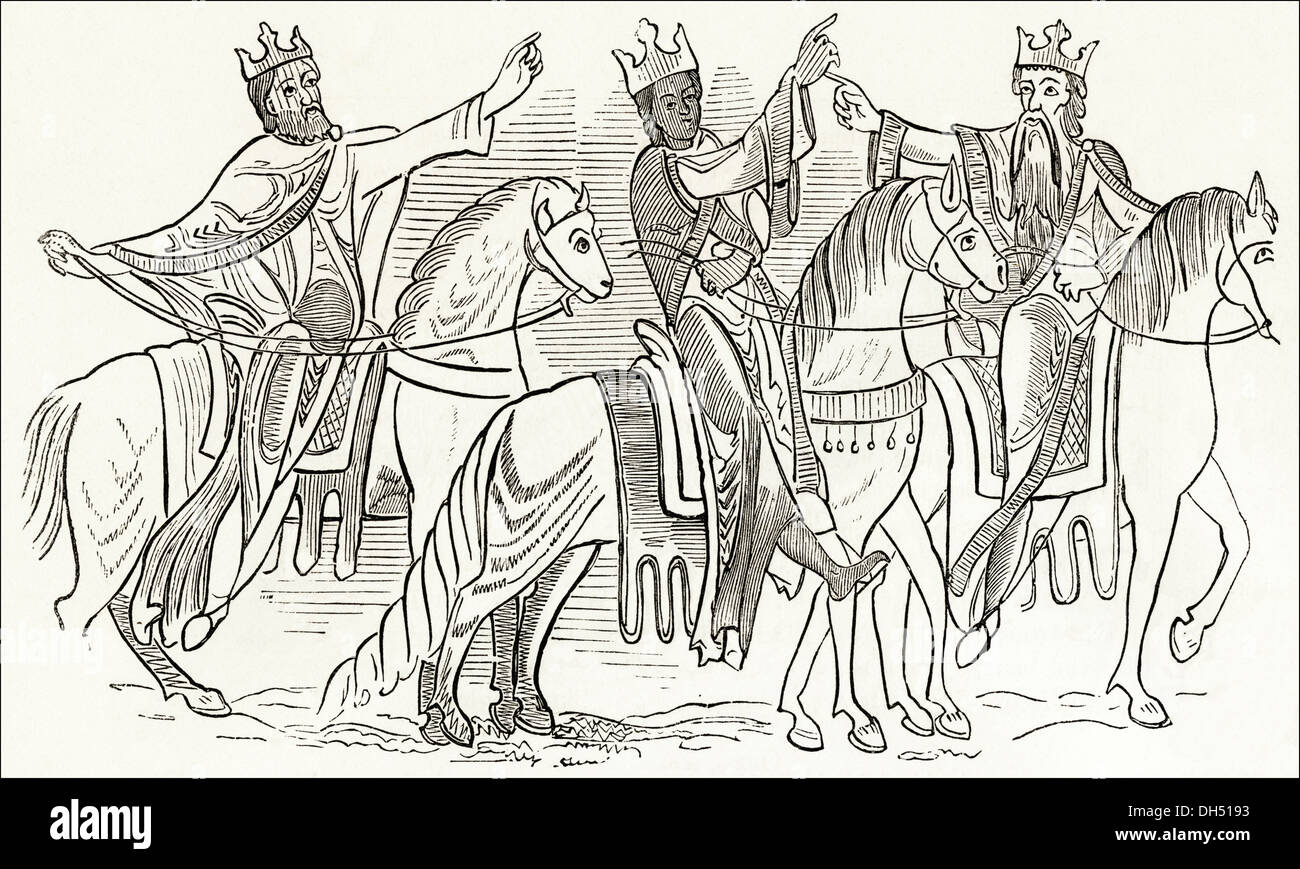 Anglo Saxon Britain. Royal costume & harness for horses in Anglo-Saxon Britain. Victorian woodcut circa 1845. Stock Photohttps://www.alamy.com/image-license-details/?v=1https://www.alamy.com/anglo-saxon-britain-royal-costume-harness-for-horses-in-anglo-saxon-image62191055.html
Anglo Saxon Britain. Royal costume & harness for horses in Anglo-Saxon Britain. Victorian woodcut circa 1845. Stock Photohttps://www.alamy.com/image-license-details/?v=1https://www.alamy.com/anglo-saxon-britain-royal-costume-harness-for-horses-in-anglo-saxon-image62191055.htmlRMDH5193–Anglo Saxon Britain. Royal costume & harness for horses in Anglo-Saxon Britain. Victorian woodcut circa 1845.
 The saints and missionaries of the Anglo-Saxon era - First (and second) series (1897) Stock Photohttps://www.alamy.com/image-license-details/?v=1https://www.alamy.com/stock-photo-the-saints-and-missionaries-of-the-anglo-saxon-era-first-and-second-101810843.html
The saints and missionaries of the Anglo-Saxon era - First (and second) series (1897) Stock Photohttps://www.alamy.com/image-license-details/?v=1https://www.alamy.com/stock-photo-the-saints-and-missionaries-of-the-anglo-saxon-era-first-and-second-101810843.htmlRFFWHTNF–The saints and missionaries of the Anglo-Saxon era - First (and second) series (1897)
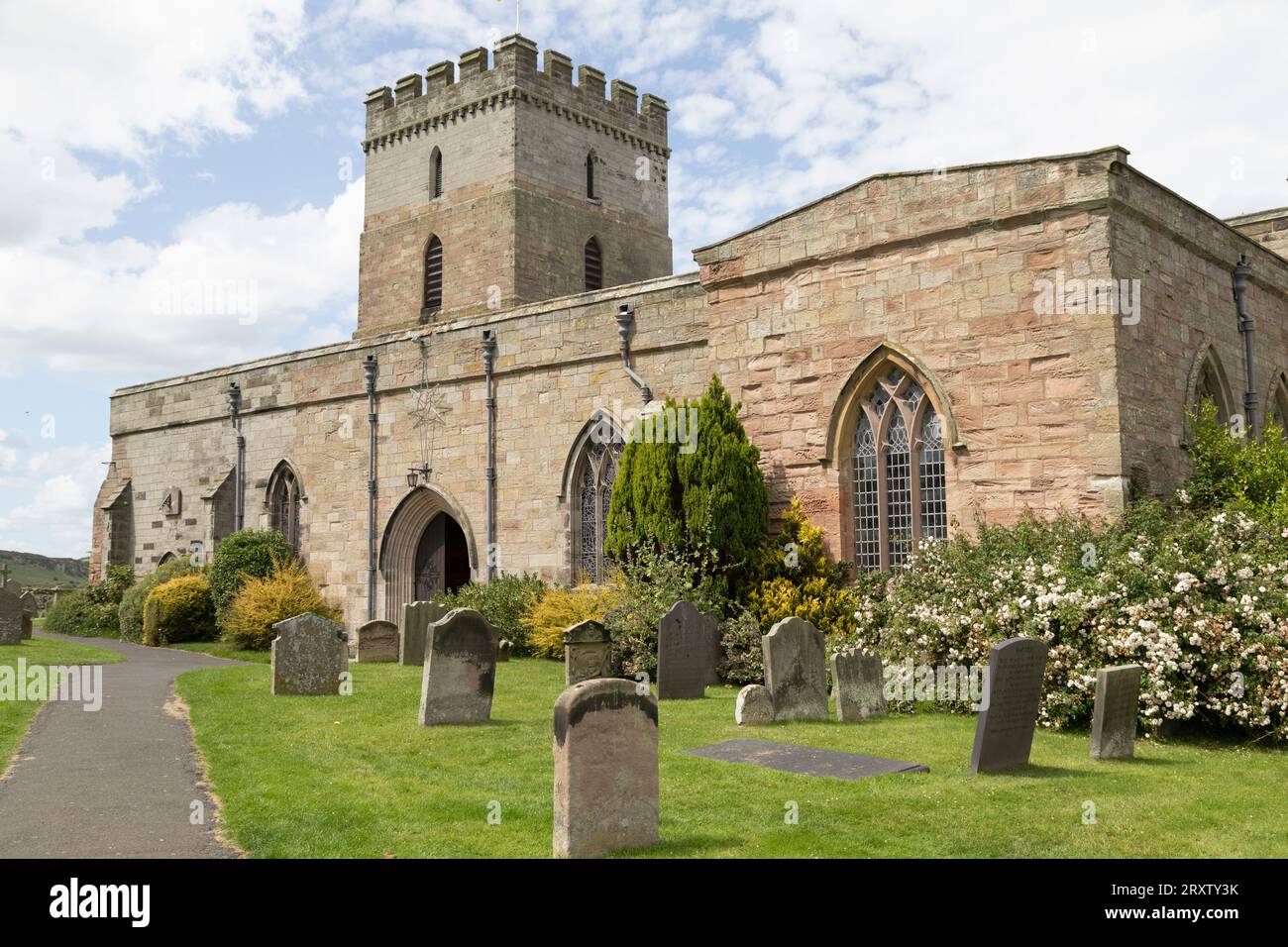 St. Aidan's Church, a 12th century place of worship, a key location in spreading Christianity during the Anglo-Saxon era, and its churchyard Stock Photohttps://www.alamy.com/image-license-details/?v=1https://www.alamy.com/st-aidans-church-a-12th-century-place-of-worship-a-key-location-in-spreading-christianity-during-the-anglo-saxon-era-and-its-churchyard-image567260951.html
St. Aidan's Church, a 12th century place of worship, a key location in spreading Christianity during the Anglo-Saxon era, and its churchyard Stock Photohttps://www.alamy.com/image-license-details/?v=1https://www.alamy.com/st-aidans-church-a-12th-century-place-of-worship-a-key-location-in-spreading-christianity-during-the-anglo-saxon-era-and-its-churchyard-image567260951.htmlRF2RXTY3K–St. Aidan's Church, a 12th century place of worship, a key location in spreading Christianity during the Anglo-Saxon era, and its churchyard
 In AD 948 Abbot Wulsin (or Ulsinus) of St Alban's Abbey founded a church on each of the three main roads into the town of St Albans to serve pilgrims coming to venerate the Abbey's shrine of Saint Alban. St Michael's Church dates from the late Anglo-Saxon era although there may have been an earlier building on the present site. Hertfordshire, England. Stock Photohttps://www.alamy.com/image-license-details/?v=1https://www.alamy.com/stock-image-in-ad-948-abbot-wulsin-or-ulsinus-of-st-albans-abbey-founded-a-church-165170877.html
In AD 948 Abbot Wulsin (or Ulsinus) of St Alban's Abbey founded a church on each of the three main roads into the town of St Albans to serve pilgrims coming to venerate the Abbey's shrine of Saint Alban. St Michael's Church dates from the late Anglo-Saxon era although there may have been an earlier building on the present site. Hertfordshire, England. Stock Photohttps://www.alamy.com/image-license-details/?v=1https://www.alamy.com/stock-image-in-ad-948-abbot-wulsin-or-ulsinus-of-st-albans-abbey-founded-a-church-165170877.htmlRMKGM53W–In AD 948 Abbot Wulsin (or Ulsinus) of St Alban's Abbey founded a church on each of the three main roads into the town of St Albans to serve pilgrims coming to venerate the Abbey's shrine of Saint Alban. St Michael's Church dates from the late Anglo-Saxon era although there may have been an earlier building on the present site. Hertfordshire, England.
 Map of London in the Anglo-Saxon era, circa 1000 AD. Walled town with Palace of King Athelstan, churches, gates (Creple, New, Lud, Doe, Bischops, Eald, Billingsgate), surrounded by fields, wells, and Roman burial grounds on the River Thames. City of London in the time of the Saxon Dynasty about the year 1000. Compiled from the most authentic documents, public and private. Handcoloured copperplate engraving published by William Darton, 58 Holborn Hill, London. circa 1810. Stock Photohttps://www.alamy.com/image-license-details/?v=1https://www.alamy.com/map-of-london-in-the-anglo-saxon-era-circa-1000-ad-walled-town-with-palace-of-king-athelstan-churches-gates-creple-new-lud-doe-bischops-eald-billingsgate-surrounded-by-fields-wells-and-roman-burial-grounds-on-the-river-thames-city-of-london-in-the-time-of-the-saxon-dynasty-about-the-year-1000-compiled-from-the-most-authentic-documents-public-and-private-handcoloured-copperplate-engraving-published-by-william-darton-58-holborn-hill-london-circa-1810-image571826541.html
Map of London in the Anglo-Saxon era, circa 1000 AD. Walled town with Palace of King Athelstan, churches, gates (Creple, New, Lud, Doe, Bischops, Eald, Billingsgate), surrounded by fields, wells, and Roman burial grounds on the River Thames. City of London in the time of the Saxon Dynasty about the year 1000. Compiled from the most authentic documents, public and private. Handcoloured copperplate engraving published by William Darton, 58 Holborn Hill, London. circa 1810. Stock Photohttps://www.alamy.com/image-license-details/?v=1https://www.alamy.com/map-of-london-in-the-anglo-saxon-era-circa-1000-ad-walled-town-with-palace-of-king-athelstan-churches-gates-creple-new-lud-doe-bischops-eald-billingsgate-surrounded-by-fields-wells-and-roman-burial-grounds-on-the-river-thames-city-of-london-in-the-time-of-the-saxon-dynasty-about-the-year-1000-compiled-from-the-most-authentic-documents-public-and-private-handcoloured-copperplate-engraving-published-by-william-darton-58-holborn-hill-london-circa-1810-image571826541.htmlRM2T68XGD–Map of London in the Anglo-Saxon era, circa 1000 AD. Walled town with Palace of King Athelstan, churches, gates (Creple, New, Lud, Doe, Bischops, Eald, Billingsgate), surrounded by fields, wells, and Roman burial grounds on the River Thames. City of London in the time of the Saxon Dynasty about the year 1000. Compiled from the most authentic documents, public and private. Handcoloured copperplate engraving published by William Darton, 58 Holborn Hill, London. circa 1810.
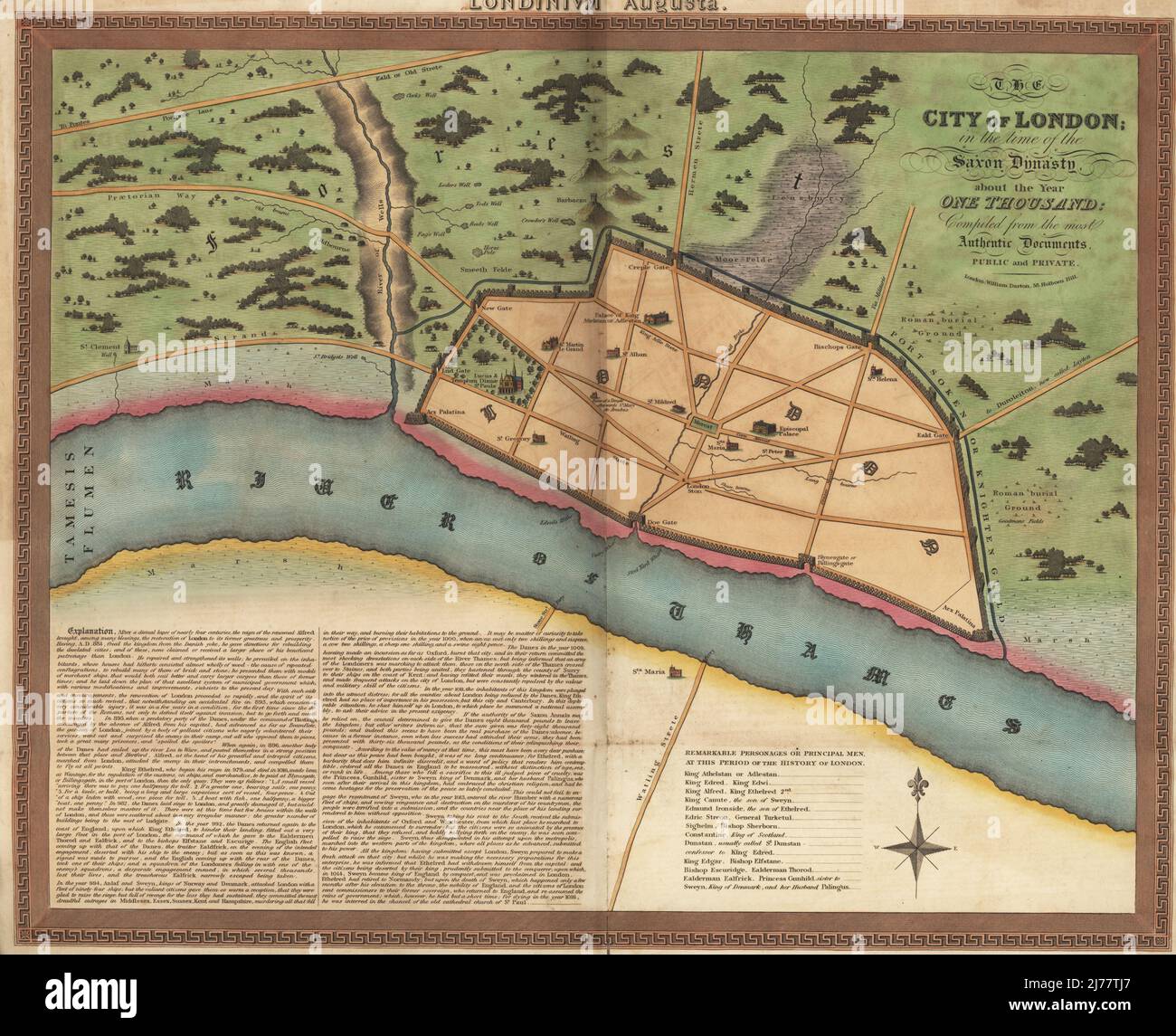 Map of London in the Anglo-Saxon era, circa 1000 AD. Walled town with Palace of King Athelstan, churches, gates (Creple, New, Lud, Doe, Bischops, Eald, Billingsgate), surrounded by fields, wells, and Roman burial grounds on the River Thames. City of London in the time of the Saxon Dynasty about the year 1000. Compiled from the most authentic documents, public and private. Handcoloured copperplate engraving published by William Darton, 58 Holborn Hill, London. circa 1810. Stock Photohttps://www.alamy.com/image-license-details/?v=1https://www.alamy.com/map-of-london-in-the-anglo-saxon-era-circa-1000-ad-walled-town-with-palace-of-king-athelstan-churches-gates-creple-new-lud-doe-bischops-eald-billingsgate-surrounded-by-fields-wells-and-roman-burial-grounds-on-the-river-thames-city-of-london-in-the-time-of-the-saxon-dynasty-about-the-year-1000-compiled-from-the-most-authentic-documents-public-and-private-handcoloured-copperplate-engraving-published-by-william-darton-58-holborn-hill-london-circa-1810-image469155519.html
Map of London in the Anglo-Saxon era, circa 1000 AD. Walled town with Palace of King Athelstan, churches, gates (Creple, New, Lud, Doe, Bischops, Eald, Billingsgate), surrounded by fields, wells, and Roman burial grounds on the River Thames. City of London in the time of the Saxon Dynasty about the year 1000. Compiled from the most authentic documents, public and private. Handcoloured copperplate engraving published by William Darton, 58 Holborn Hill, London. circa 1810. Stock Photohttps://www.alamy.com/image-license-details/?v=1https://www.alamy.com/map-of-london-in-the-anglo-saxon-era-circa-1000-ad-walled-town-with-palace-of-king-athelstan-churches-gates-creple-new-lud-doe-bischops-eald-billingsgate-surrounded-by-fields-wells-and-roman-burial-grounds-on-the-river-thames-city-of-london-in-the-time-of-the-saxon-dynasty-about-the-year-1000-compiled-from-the-most-authentic-documents-public-and-private-handcoloured-copperplate-engraving-published-by-william-darton-58-holborn-hill-london-circa-1810-image469155519.htmlRM2J77TJ7–Map of London in the Anglo-Saxon era, circa 1000 AD. Walled town with Palace of King Athelstan, churches, gates (Creple, New, Lud, Doe, Bischops, Eald, Billingsgate), surrounded by fields, wells, and Roman burial grounds on the River Thames. City of London in the time of the Saxon Dynasty about the year 1000. Compiled from the most authentic documents, public and private. Handcoloured copperplate engraving published by William Darton, 58 Holborn Hill, London. circa 1810.
 An Anglo-Saxon era stone cross in Eyam village - head piece Stock Photohttps://www.alamy.com/image-license-details/?v=1https://www.alamy.com/an-anglo-saxon-era-stone-cross-in-eyam-village-head-piece-image430610755.html
An Anglo-Saxon era stone cross in Eyam village - head piece Stock Photohttps://www.alamy.com/image-license-details/?v=1https://www.alamy.com/an-anglo-saxon-era-stone-cross-in-eyam-village-head-piece-image430610755.htmlRM2G0G0BF–An Anglo-Saxon era stone cross in Eyam village - head piece
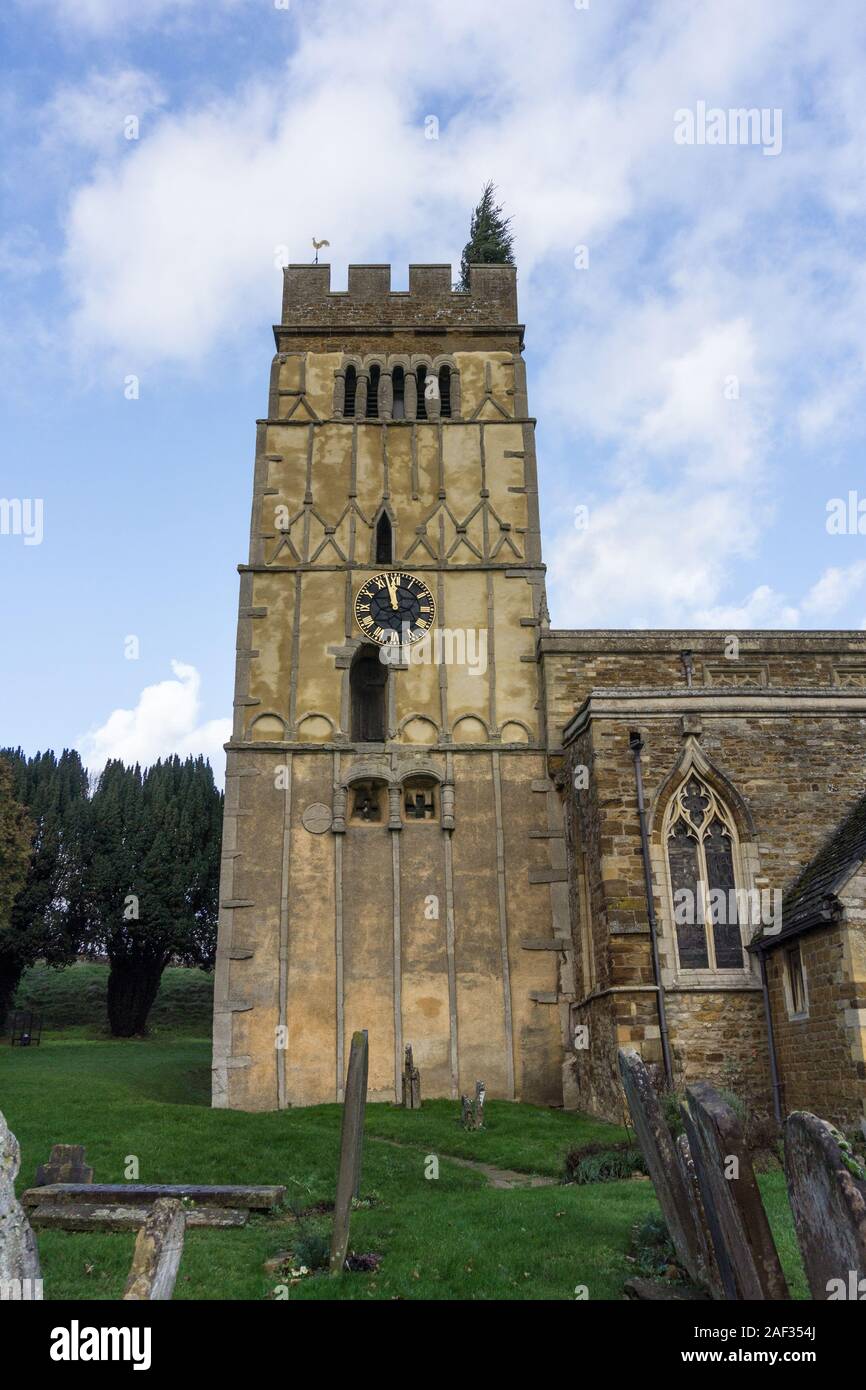 All Saints church in the village of Earls Barton, Northamptonshire, UK; earliest parts date from the Anglo-Saxon era. Stock Photohttps://www.alamy.com/image-license-details/?v=1https://www.alamy.com/all-saints-church-in-the-village-of-earls-barton-northamptonshire-uk-earliest-parts-date-from-the-anglo-saxon-era-image336286738.html
All Saints church in the village of Earls Barton, Northamptonshire, UK; earliest parts date from the Anglo-Saxon era. Stock Photohttps://www.alamy.com/image-license-details/?v=1https://www.alamy.com/all-saints-church-in-the-village-of-earls-barton-northamptonshire-uk-earliest-parts-date-from-the-anglo-saxon-era-image336286738.htmlRF2AF354J–All Saints church in the village of Earls Barton, Northamptonshire, UK; earliest parts date from the Anglo-Saxon era.
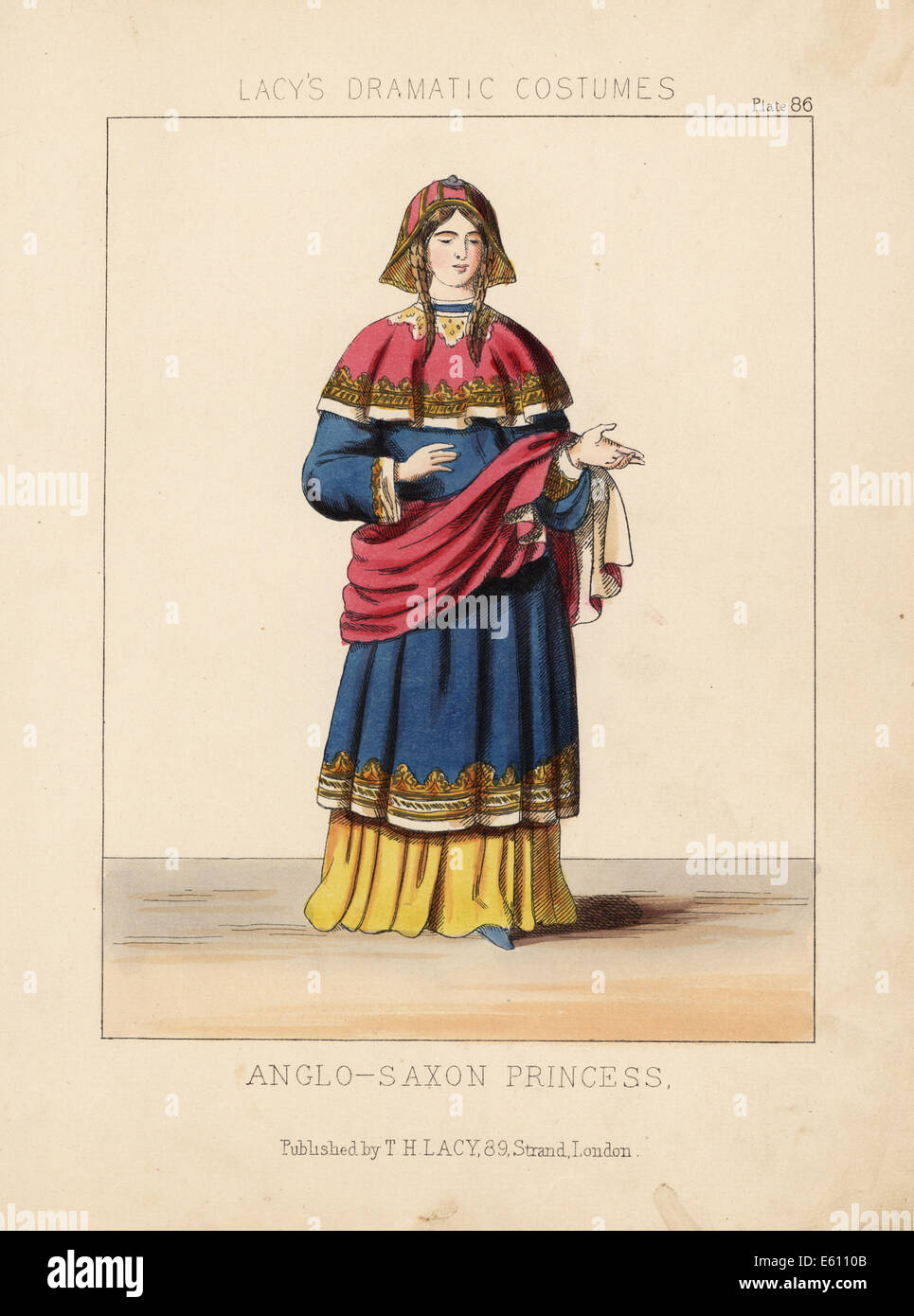 Costume of an Anglo-Saxon princess. Stock Photohttps://www.alamy.com/image-license-details/?v=1https://www.alamy.com/stock-photo-costume-of-an-anglo-saxon-princess-72552155.html
Costume of an Anglo-Saxon princess. Stock Photohttps://www.alamy.com/image-license-details/?v=1https://www.alamy.com/stock-photo-costume-of-an-anglo-saxon-princess-72552155.htmlRME6110B–Costume of an Anglo-Saxon princess.
 All Saints church in the village of Earls Barton, Northamptonshire, UK; earliest parts date from the Anglo-Saxon era. Stock Photohttps://www.alamy.com/image-license-details/?v=1https://www.alamy.com/all-saints-church-in-the-village-of-earls-barton-northamptonshire-uk-earliest-parts-date-from-the-anglo-saxon-era-image336099771.html
All Saints church in the village of Earls Barton, Northamptonshire, UK; earliest parts date from the Anglo-Saxon era. Stock Photohttps://www.alamy.com/image-license-details/?v=1https://www.alamy.com/all-saints-church-in-the-village-of-earls-barton-northamptonshire-uk-earliest-parts-date-from-the-anglo-saxon-era-image336099771.htmlRF2AEPJK7–All Saints church in the village of Earls Barton, Northamptonshire, UK; earliest parts date from the Anglo-Saxon era.
 Whitby Abbey North Yorkshire. The first monastery was founded in 657 AD by the Anglo-Saxon era King of Northumbria, Oswy (Oswiu) as Streoneshalh. Stock Photohttps://www.alamy.com/image-license-details/?v=1https://www.alamy.com/whitby-abbey-north-yorkshire-the-first-monastery-was-founded-in-657-ad-by-the-anglo-saxon-era-king-of-northumbria-oswy-oswiu-as-streoneshalh-image236665662.html
Whitby Abbey North Yorkshire. The first monastery was founded in 657 AD by the Anglo-Saxon era King of Northumbria, Oswy (Oswiu) as Streoneshalh. Stock Photohttps://www.alamy.com/image-license-details/?v=1https://www.alamy.com/whitby-abbey-north-yorkshire-the-first-monastery-was-founded-in-657-ad-by-the-anglo-saxon-era-king-of-northumbria-oswy-oswiu-as-streoneshalh-image236665662.htmlRMRN11D2–Whitby Abbey North Yorkshire. The first monastery was founded in 657 AD by the Anglo-Saxon era King of Northumbria, Oswy (Oswiu) as Streoneshalh.
 Examples of early illuminated writing Anglo Saxon & later Stock Photohttps://www.alamy.com/image-license-details/?v=1https://www.alamy.com/stock-photo-examples-of-early-illuminated-writing-anglo-saxon-later-142650848.html
Examples of early illuminated writing Anglo Saxon & later Stock Photohttps://www.alamy.com/image-license-details/?v=1https://www.alamy.com/stock-photo-examples-of-early-illuminated-writing-anglo-saxon-later-142650848.htmlRMJ828H4–Examples of early illuminated writing Anglo Saxon & later
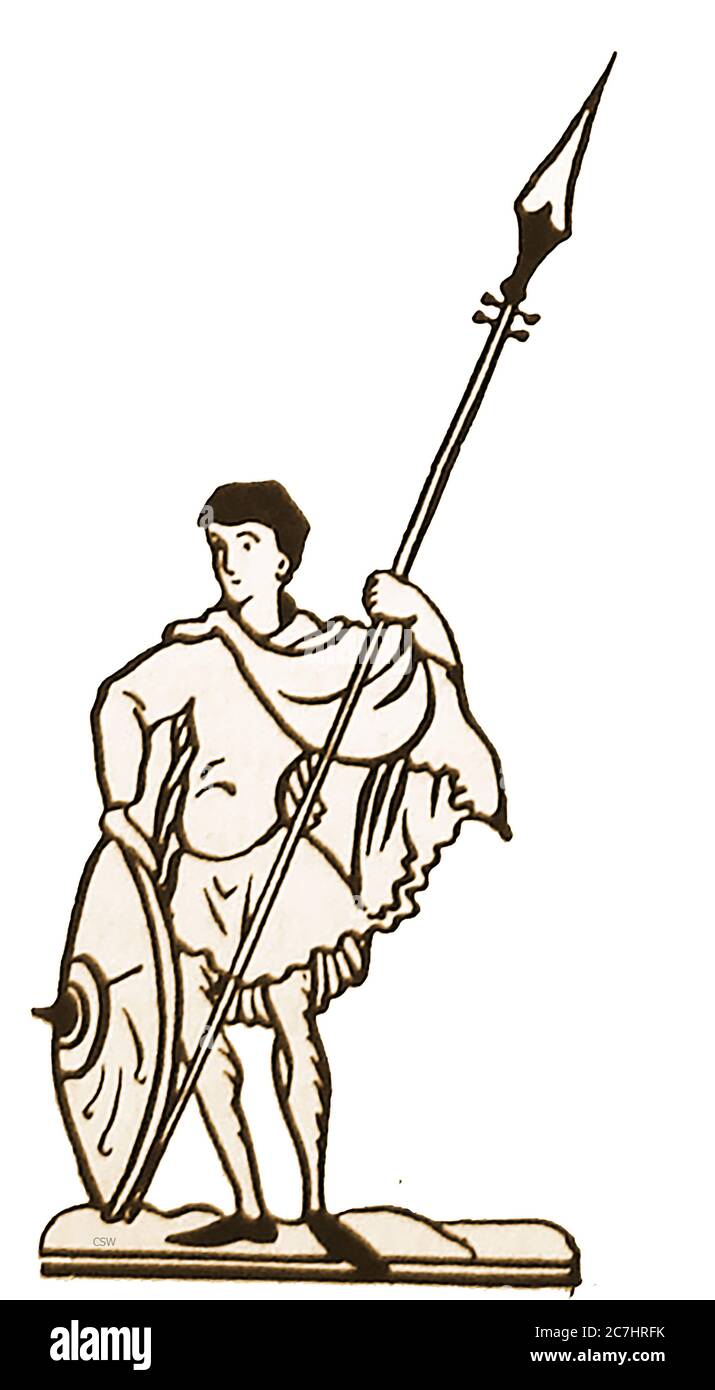 An old illustration showing an Anglo-Saxon soldier with his pike and shield. Between roughly 449 – 1066 AD, a mixture of Germanic tribes, local inhabitants ,Romano-British peoples and later Norse settlers led to the creation of the English nation. Anglo-Saxon warriors were in reality drawn from many races, or at least racial origins. As can be seen this soldier has no head gear (helmets were not regularly worn by ordinary Anglo-Saxon soldiers, at least until the 11th century AD.) Stock Photohttps://www.alamy.com/image-license-details/?v=1https://www.alamy.com/an-old-illustration-showing-an-anglo-saxon-soldier-with-his-pike-and-shield-between-roughly-449-1066-ad-a-mixture-of-germanic-tribes-local-inhabitants-romano-british-peoples-and-later-norse-settlers-led-to-the-creation-of-the-english-nation-anglo-saxon-warriors-were-in-reality-drawn-from-many-races-or-at-least-racial-origins-as-can-be-seen-this-soldier-has-no-head-gear-helmets-were-not-regularly-worn-by-ordinary-anglo-saxon-soldiers-at-least-until-the-11th-century-ad-image366111975.html
An old illustration showing an Anglo-Saxon soldier with his pike and shield. Between roughly 449 – 1066 AD, a mixture of Germanic tribes, local inhabitants ,Romano-British peoples and later Norse settlers led to the creation of the English nation. Anglo-Saxon warriors were in reality drawn from many races, or at least racial origins. As can be seen this soldier has no head gear (helmets were not regularly worn by ordinary Anglo-Saxon soldiers, at least until the 11th century AD.) Stock Photohttps://www.alamy.com/image-license-details/?v=1https://www.alamy.com/an-old-illustration-showing-an-anglo-saxon-soldier-with-his-pike-and-shield-between-roughly-449-1066-ad-a-mixture-of-germanic-tribes-local-inhabitants-romano-british-peoples-and-later-norse-settlers-led-to-the-creation-of-the-english-nation-anglo-saxon-warriors-were-in-reality-drawn-from-many-races-or-at-least-racial-origins-as-can-be-seen-this-soldier-has-no-head-gear-helmets-were-not-regularly-worn-by-ordinary-anglo-saxon-soldiers-at-least-until-the-11th-century-ad-image366111975.htmlRM2C7HRFK–An old illustration showing an Anglo-Saxon soldier with his pike and shield. Between roughly 449 – 1066 AD, a mixture of Germanic tribes, local inhabitants ,Romano-British peoples and later Norse settlers led to the creation of the English nation. Anglo-Saxon warriors were in reality drawn from many races, or at least racial origins. As can be seen this soldier has no head gear (helmets were not regularly worn by ordinary Anglo-Saxon soldiers, at least until the 11th century AD.)
 Athletics meeting at Queen's club, 22 July 1899. Oxford and Cambridge v. Harvard and Yale.universities. Punch Cartoon entitled the Anglo-Saxon race. Stock Photohttps://www.alamy.com/image-license-details/?v=1https://www.alamy.com/stock-image-athletics-meeting-at-queens-club-22-july-1899-oxford-and-cambridge-163138396.html
Athletics meeting at Queen's club, 22 July 1899. Oxford and Cambridge v. Harvard and Yale.universities. Punch Cartoon entitled the Anglo-Saxon race. Stock Photohttps://www.alamy.com/image-license-details/?v=1https://www.alamy.com/stock-image-athletics-meeting-at-queens-club-22-july-1899-oxford-and-cambridge-163138396.htmlRMKDBGK8–Athletics meeting at Queen's club, 22 July 1899. Oxford and Cambridge v. Harvard and Yale.universities. Punch Cartoon entitled the Anglo-Saxon race.
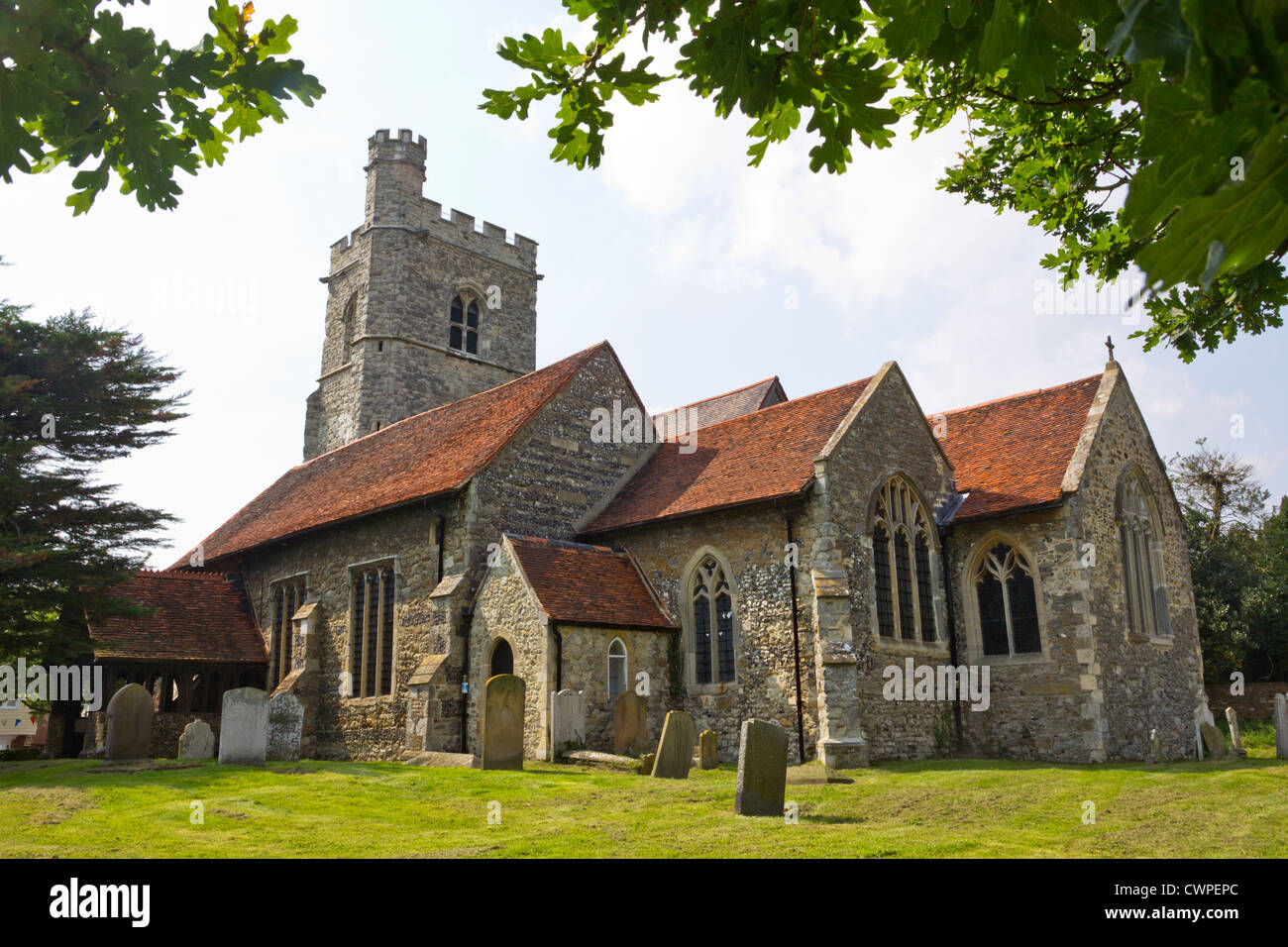 St.Michaels Fobbing Church, Essex, Anglo Saxon built Stock Photohttps://www.alamy.com/image-license-details/?v=1https://www.alamy.com/stock-photo-stmichaels-fobbing-church-essex-anglo-saxon-built-50281684.html
St.Michaels Fobbing Church, Essex, Anglo Saxon built Stock Photohttps://www.alamy.com/image-license-details/?v=1https://www.alamy.com/stock-photo-stmichaels-fobbing-church-essex-anglo-saxon-built-50281684.htmlRMCWPEPC–St.Michaels Fobbing Church, Essex, Anglo Saxon built
 (King) Edward the Confessor's Chapel in Westminster Abbey. His death in 1065 heralded the end of the Aglo-Saxon era in England. He was buried at the newly completed Westminster Abbey and his posthumous reputation came to be revered. Stock Photohttps://www.alamy.com/image-license-details/?v=1https://www.alamy.com/stock-image-king-edward-the-confessors-chapel-in-westminster-abbey-his-death-in-165453237.html
(King) Edward the Confessor's Chapel in Westminster Abbey. His death in 1065 heralded the end of the Aglo-Saxon era in England. He was buried at the newly completed Westminster Abbey and his posthumous reputation came to be revered. Stock Photohttps://www.alamy.com/image-license-details/?v=1https://www.alamy.com/stock-image-king-edward-the-confessors-chapel-in-westminster-abbey-his-death-in-165453237.htmlRMKH5185–(King) Edward the Confessor's Chapel in Westminster Abbey. His death in 1065 heralded the end of the Aglo-Saxon era in England. He was buried at the newly completed Westminster Abbey and his posthumous reputation came to be revered.
 king alfred orphan anglo saxon court woman child men soldier guard royal monarch England English regal judge decide choose Stock Photohttps://www.alamy.com/image-license-details/?v=1https://www.alamy.com/king-alfred-orphan-anglo-saxon-court-woman-child-men-soldier-guard-image6357504.html
king alfred orphan anglo saxon court woman child men soldier guard royal monarch England English regal judge decide choose Stock Photohttps://www.alamy.com/image-license-details/?v=1https://www.alamy.com/king-alfred-orphan-anglo-saxon-court-woman-child-men-soldier-guard-image6357504.htmlRMA4W6T1–king alfred orphan anglo saxon court woman child men soldier guard royal monarch England English regal judge decide choose
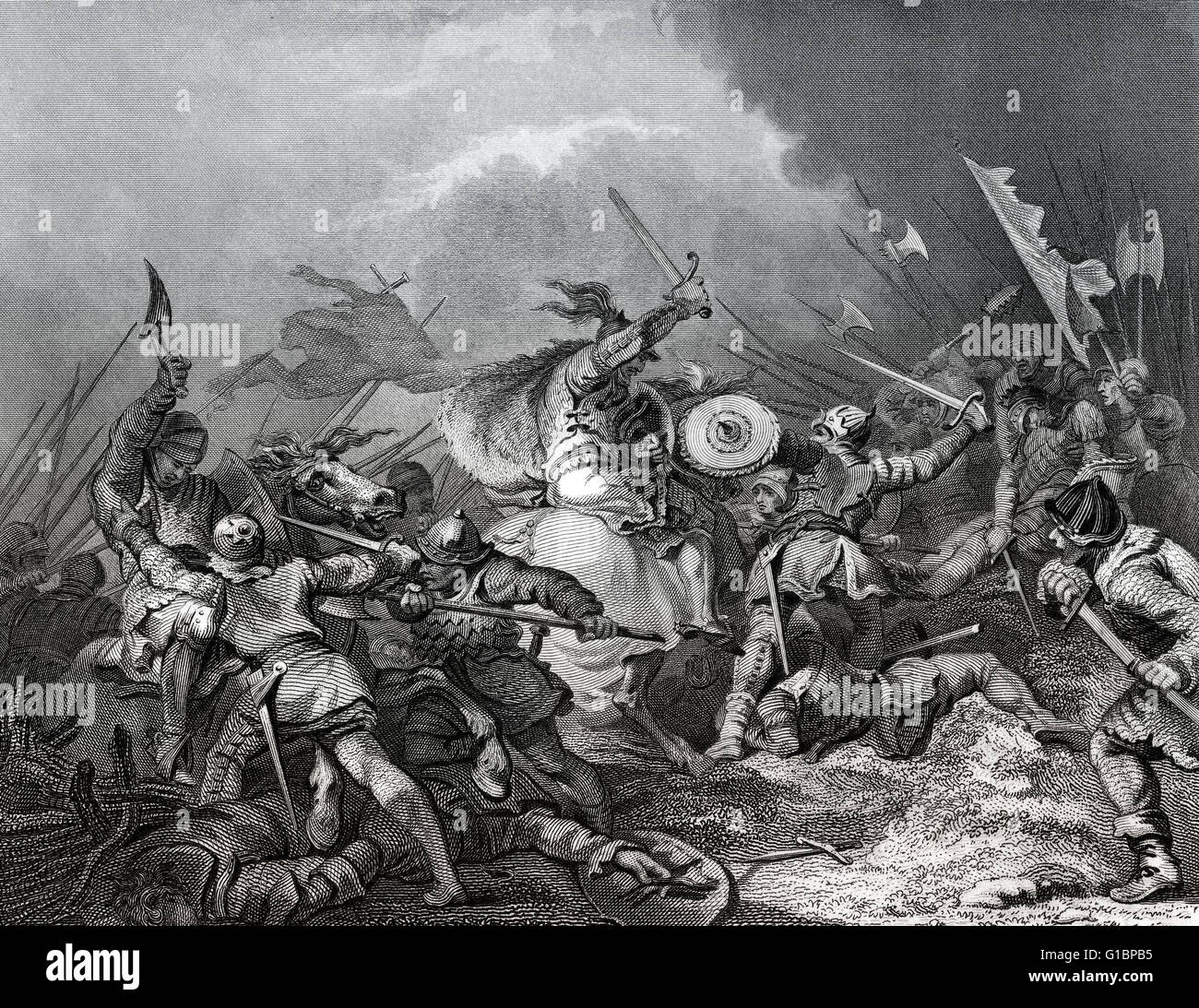 The Battle of Hastings, on 14 October 1066 Stock Photohttps://www.alamy.com/image-license-details/?v=1https://www.alamy.com/stock-photo-the-battle-of-hastings-on-14-october-1066-104135897.html
The Battle of Hastings, on 14 October 1066 Stock Photohttps://www.alamy.com/image-license-details/?v=1https://www.alamy.com/stock-photo-the-battle-of-hastings-on-14-october-1066-104135897.htmlRMG1BPB5–The Battle of Hastings, on 14 October 1066
 Anglo Saxon ship with sail from the era before the Norman invasion, 11th century. Handcoloured copperplate engraving from Robert von Spalart's 'Historical Picture of the Costumes of the Principal People of Antiquity and of the Middle Ages,' Chez Collignon, Metz, 1810. Stock Photohttps://www.alamy.com/image-license-details/?v=1https://www.alamy.com/anglo-saxon-ship-with-sail-from-the-era-before-the-norman-invasion-11th-century-handcoloured-copperplate-engraving-from-robert-von-spalarts-historical-picture-of-the-costumes-of-the-principal-people-of-antiquity-and-of-the-middle-ages-chez-collignon-metz-1810-image331563718.html
Anglo Saxon ship with sail from the era before the Norman invasion, 11th century. Handcoloured copperplate engraving from Robert von Spalart's 'Historical Picture of the Costumes of the Principal People of Antiquity and of the Middle Ages,' Chez Collignon, Metz, 1810. Stock Photohttps://www.alamy.com/image-license-details/?v=1https://www.alamy.com/anglo-saxon-ship-with-sail-from-the-era-before-the-norman-invasion-11th-century-handcoloured-copperplate-engraving-from-robert-von-spalarts-historical-picture-of-the-costumes-of-the-principal-people-of-antiquity-and-of-the-middle-ages-chez-collignon-metz-1810-image331563718.htmlRM2A7C0WA–Anglo Saxon ship with sail from the era before the Norman invasion, 11th century. Handcoloured copperplate engraving from Robert von Spalart's 'Historical Picture of the Costumes of the Principal People of Antiquity and of the Middle Ages,' Chez Collignon, Metz, 1810.
 Anglo Saxon Britain. Anglo-Saxon lantern. Victorian woodcut circa 1845. Stock Photohttps://www.alamy.com/image-license-details/?v=1https://www.alamy.com/anglo-saxon-britain-anglo-saxon-lantern-victorian-woodcut-circa-1845-image62248596.html
Anglo Saxon Britain. Anglo-Saxon lantern. Victorian woodcut circa 1845. Stock Photohttps://www.alamy.com/image-license-details/?v=1https://www.alamy.com/anglo-saxon-britain-anglo-saxon-lantern-victorian-woodcut-circa-1845-image62248596.htmlRMDH7JM4–Anglo Saxon Britain. Anglo-Saxon lantern. Victorian woodcut circa 1845.
 The saints and missionaries of the Anglo-Saxon era - First (and second) series (1897) Stock Photohttps://www.alamy.com/image-license-details/?v=1https://www.alamy.com/stock-photo-the-saints-and-missionaries-of-the-anglo-saxon-era-first-and-second-101810844.html
The saints and missionaries of the Anglo-Saxon era - First (and second) series (1897) Stock Photohttps://www.alamy.com/image-license-details/?v=1https://www.alamy.com/stock-photo-the-saints-and-missionaries-of-the-anglo-saxon-era-first-and-second-101810844.htmlRFFWHTNG–The saints and missionaries of the Anglo-Saxon era - First (and second) series (1897)
 Surrey, England. A vintage postcard entitled “The Coronation Stone, Kingston-on-Thames”. Depicts The Coronation Stone, which is an ancient sarsen stone block believed to have been the site of the coronation of seven Anglo-Saxon kings. Stock Photohttps://www.alamy.com/image-license-details/?v=1https://www.alamy.com/surrey-england-a-vintage-postcard-entitled-the-coronation-stone-kingston-on-thames-depicts-the-coronation-stone-which-is-an-ancient-sarsen-stone-block-believed-to-have-been-the-site-of-the-coronation-of-seven-anglo-saxon-kings-image544186445.html
Surrey, England. A vintage postcard entitled “The Coronation Stone, Kingston-on-Thames”. Depicts The Coronation Stone, which is an ancient sarsen stone block believed to have been the site of the coronation of seven Anglo-Saxon kings. Stock Photohttps://www.alamy.com/image-license-details/?v=1https://www.alamy.com/surrey-england-a-vintage-postcard-entitled-the-coronation-stone-kingston-on-thames-depicts-the-coronation-stone-which-is-an-ancient-sarsen-stone-block-believed-to-have-been-the-site-of-the-coronation-of-seven-anglo-saxon-kings-image544186445.htmlRM2PH9RA5–Surrey, England. A vintage postcard entitled “The Coronation Stone, Kingston-on-Thames”. Depicts The Coronation Stone, which is an ancient sarsen stone block believed to have been the site of the coronation of seven Anglo-Saxon kings.
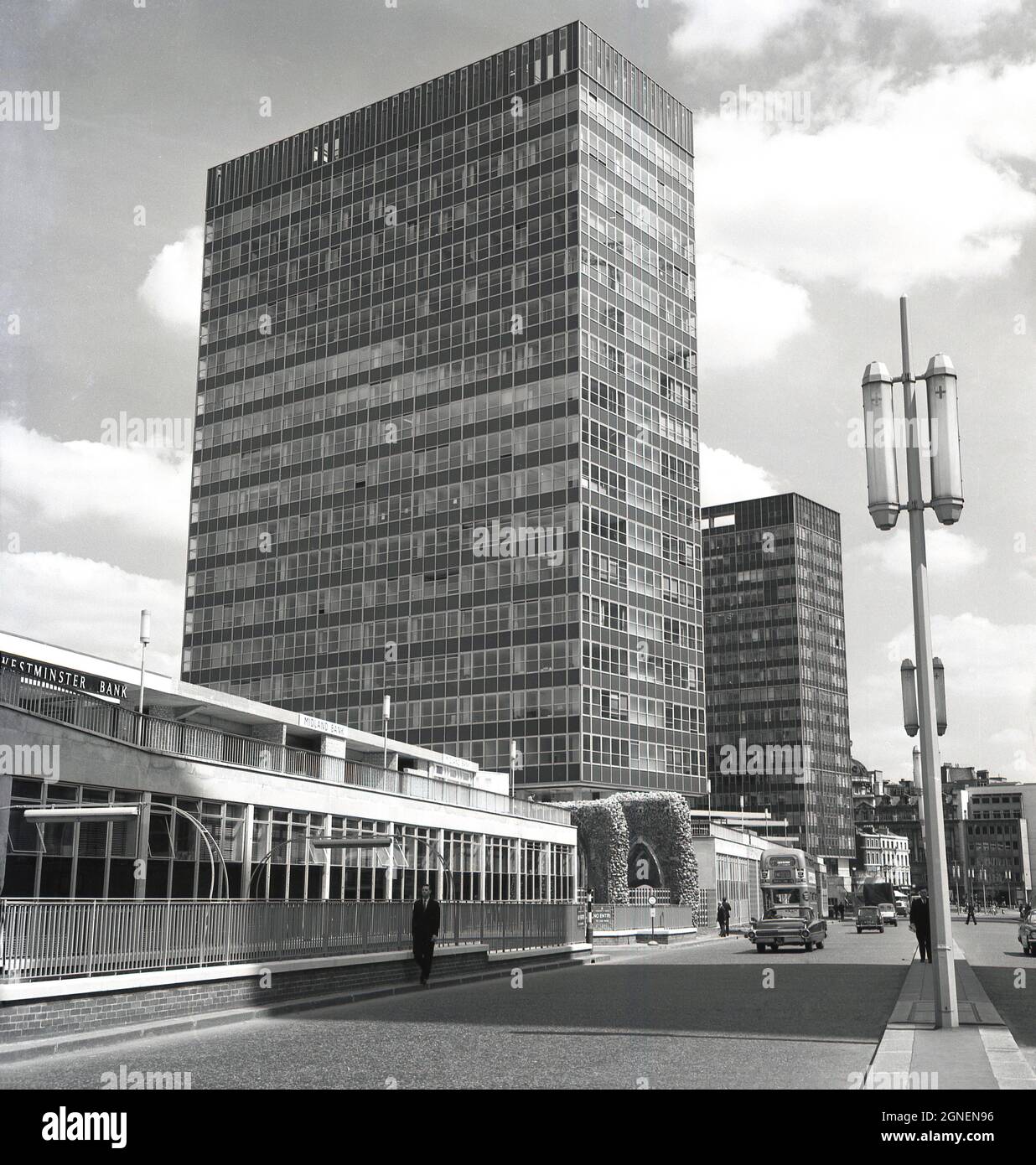 1960s, historical, modern, high-rise office buildings of the era in the city of London by the remains of London Wall, near Tower Hill, England, UK. The names of two leading banks, Midland Bank and Westminster Bank can be seen on the walkway on the lower story building beside the ancient wall, which was built by the Romans around their city of Londinium to protect it from Anglo Saxon raiders. Stock Photohttps://www.alamy.com/image-license-details/?v=1https://www.alamy.com/1960s-historical-modern-high-rise-office-buildings-of-the-era-in-the-city-of-london-by-the-remains-of-london-wall-near-tower-hill-england-uk-the-names-of-two-leading-banks-midland-bank-and-westminster-bank-can-be-seen-on-the-walkway-on-the-lower-story-building-beside-the-ancient-wall-which-was-built-by-the-romans-around-their-city-of-londinium-to-protect-it-from-anglo-saxon-raiders-image443491026.html
1960s, historical, modern, high-rise office buildings of the era in the city of London by the remains of London Wall, near Tower Hill, England, UK. The names of two leading banks, Midland Bank and Westminster Bank can be seen on the walkway on the lower story building beside the ancient wall, which was built by the Romans around their city of Londinium to protect it from Anglo Saxon raiders. Stock Photohttps://www.alamy.com/image-license-details/?v=1https://www.alamy.com/1960s-historical-modern-high-rise-office-buildings-of-the-era-in-the-city-of-london-by-the-remains-of-london-wall-near-tower-hill-england-uk-the-names-of-two-leading-banks-midland-bank-and-westminster-bank-can-be-seen-on-the-walkway-on-the-lower-story-building-beside-the-ancient-wall-which-was-built-by-the-romans-around-their-city-of-londinium-to-protect-it-from-anglo-saxon-raiders-image443491026.htmlRM2GNEN96–1960s, historical, modern, high-rise office buildings of the era in the city of London by the remains of London Wall, near Tower Hill, England, UK. The names of two leading banks, Midland Bank and Westminster Bank can be seen on the walkway on the lower story building beside the ancient wall, which was built by the Romans around their city of Londinium to protect it from Anglo Saxon raiders.
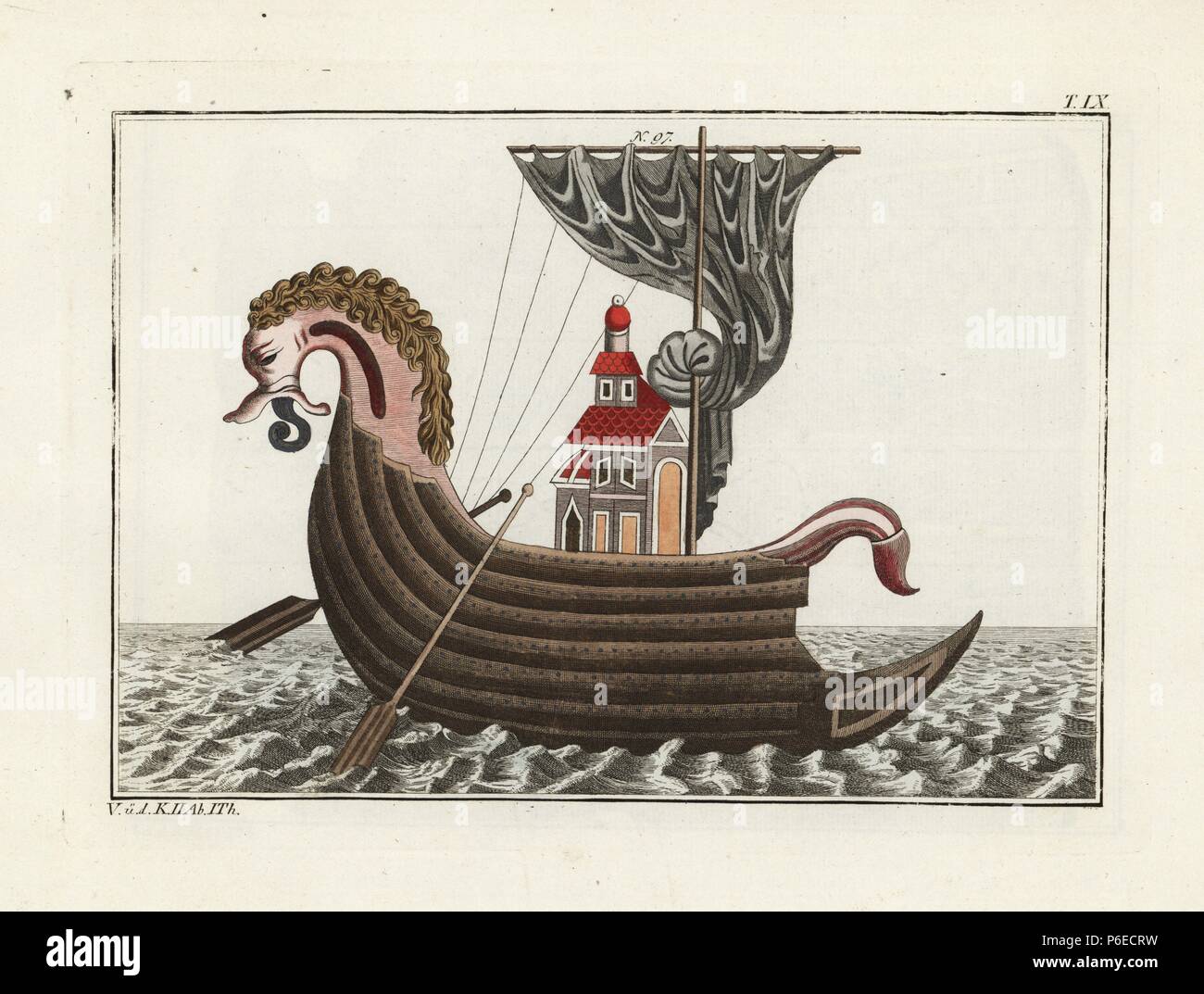 Anglo Saxon ship with sail from the era before the Norman invasion, 11th century. Handcoloured copperplate engraving from Robert von Spalart's 'Historical Picture of the Costumes of the Principal People of Antiquity and of the Middle Ages,' Chez Collignon, Metz, 1810. Stock Photohttps://www.alamy.com/image-license-details/?v=1https://www.alamy.com/anglo-saxon-ship-with-sail-from-the-era-before-the-norman-invasion-11th-century-handcoloured-copperplate-engraving-from-robert-von-spalarts-historical-picture-of-the-costumes-of-the-principal-people-of-antiquity-and-of-the-middle-ages-chez-collignon-metz-1810-image210529757.html
Anglo Saxon ship with sail from the era before the Norman invasion, 11th century. Handcoloured copperplate engraving from Robert von Spalart's 'Historical Picture of the Costumes of the Principal People of Antiquity and of the Middle Ages,' Chez Collignon, Metz, 1810. Stock Photohttps://www.alamy.com/image-license-details/?v=1https://www.alamy.com/anglo-saxon-ship-with-sail-from-the-era-before-the-norman-invasion-11th-century-handcoloured-copperplate-engraving-from-robert-von-spalarts-historical-picture-of-the-costumes-of-the-principal-people-of-antiquity-and-of-the-middle-ages-chez-collignon-metz-1810-image210529757.htmlRMP6ECRW–Anglo Saxon ship with sail from the era before the Norman invasion, 11th century. Handcoloured copperplate engraving from Robert von Spalart's 'Historical Picture of the Costumes of the Principal People of Antiquity and of the Middle Ages,' Chez Collignon, Metz, 1810.
 South Doorway, St John the Baptist Church, Inglesham Stock Photohttps://www.alamy.com/image-license-details/?v=1https://www.alamy.com/south-doorway-st-john-the-baptist-church-inglesham-image445352555.html
South Doorway, St John the Baptist Church, Inglesham Stock Photohttps://www.alamy.com/image-license-details/?v=1https://www.alamy.com/south-doorway-st-john-the-baptist-church-inglesham-image445352555.htmlRF2GTFFMB–South Doorway, St John the Baptist Church, Inglesham
 An Anglo-Saxon era stone cross in Eyam village - East face Stock Photohttps://www.alamy.com/image-license-details/?v=1https://www.alamy.com/an-anglo-saxon-era-stone-cross-in-eyam-village-east-face-image430610778.html
An Anglo-Saxon era stone cross in Eyam village - East face Stock Photohttps://www.alamy.com/image-license-details/?v=1https://www.alamy.com/an-anglo-saxon-era-stone-cross-in-eyam-village-east-face-image430610778.htmlRM2G0G0CA–An Anglo-Saxon era stone cross in Eyam village - East face
![. The saints and missionaries of the Anglo-Saxon era : First [and second] series. Stock Photo . The saints and missionaries of the Anglo-Saxon era : First [and second] series. Stock Photo](https://c8.alamy.com/comp/2AGAHDB/the-saints-and-missionaries-of-the-anglo-saxon-era-first-and-second-series-2AGAHDB.jpg) . The saints and missionaries of the Anglo-Saxon era : First [and second] series. Stock Photohttps://www.alamy.com/image-license-details/?v=1https://www.alamy.com/the-saints-and-missionaries-of-the-anglo-saxon-era-first-and-second-series-image337064711.html
. The saints and missionaries of the Anglo-Saxon era : First [and second] series. Stock Photohttps://www.alamy.com/image-license-details/?v=1https://www.alamy.com/the-saints-and-missionaries-of-the-anglo-saxon-era-first-and-second-series-image337064711.htmlRM2AGAHDB–. The saints and missionaries of the Anglo-Saxon era : First [and second] series.
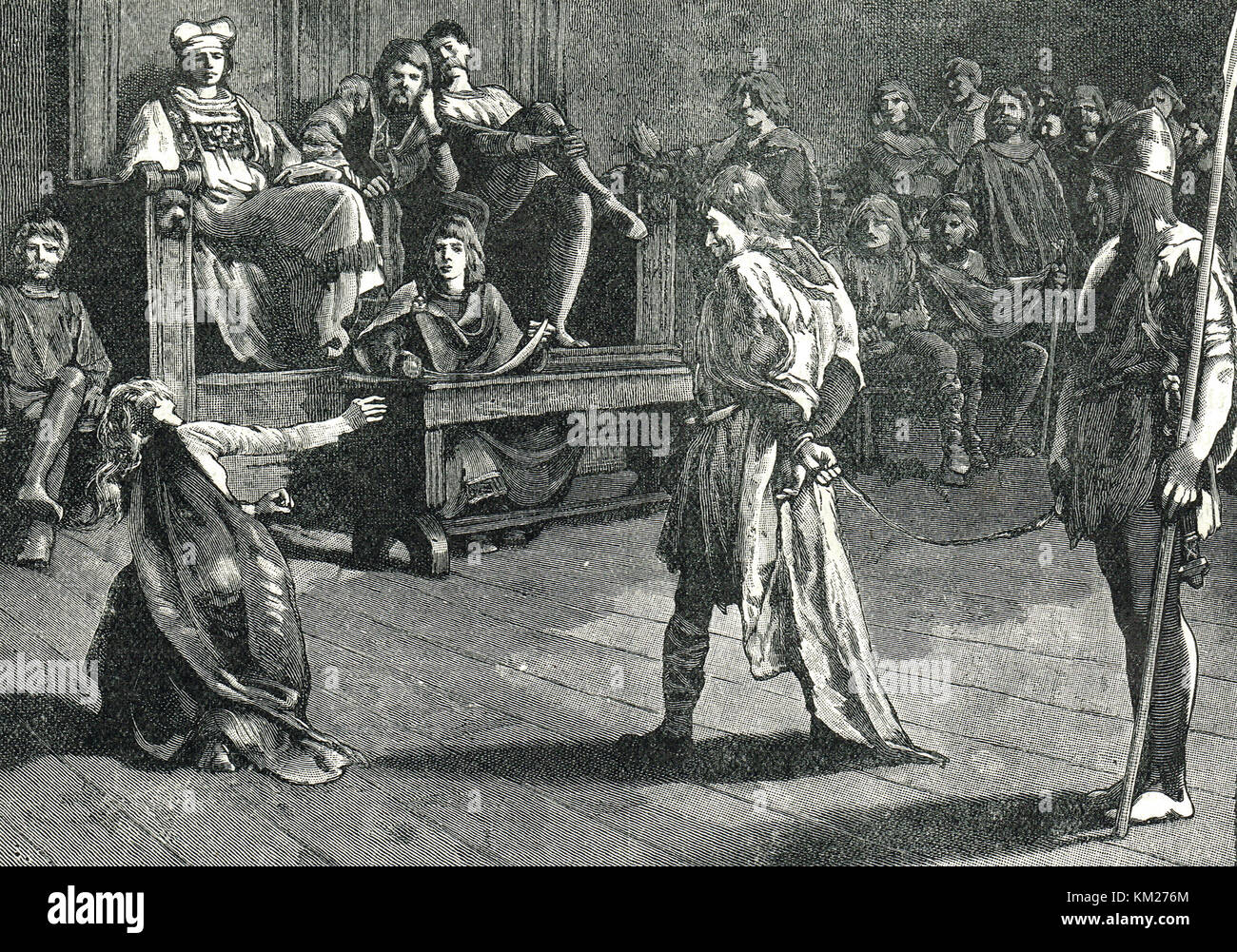 Meeting of the Shire Moot, 9th Century Stock Photohttps://www.alamy.com/image-license-details/?v=1https://www.alamy.com/stock-image-meeting-of-the-shire-moot-9th-century-167236012.html
Meeting of the Shire Moot, 9th Century Stock Photohttps://www.alamy.com/image-license-details/?v=1https://www.alamy.com/stock-image-meeting-of-the-shire-moot-9th-century-167236012.htmlRMKM276M–Meeting of the Shire Moot, 9th Century
 Anglo-Saxon chief. The Costume of the original inhabitants of the Bri. R. Havell: London, 1815. Anglo-Saxon military chief, trumpeter and warriors. Anno 975. Image taken from The Costume of the original inhabitants of the British Islands from the earliest periods to the sixth century, to which is added that of theGothic nations on the Western Coasts of the Baltic, the ancestors of the Anglo-saxons and Anglo-Danes.. Originally published/produced in R. Havell: London, 1815. . Source: 141.h.13.(2),. Language: English. Stock Photohttps://www.alamy.com/image-license-details/?v=1https://www.alamy.com/anglo-saxon-chief-the-costume-of-the-original-inhabitants-of-the-bri-r-havell-london-1815-anglo-saxon-military-chief-trumpeter-and-warriors-anno-975-image-taken-from-the-costume-of-the-original-inhabitants-of-the-british-islands-from-the-earliest-periods-to-the-sixth-century-to-which-is-added-that-of-thegothic-nations-on-the-western-coasts-of-the-baltic-the-ancestors-of-the-anglo-saxons-and-anglo-danes-originally-publishedproduced-in-r-havell-london-1815-source-141h132-language-english-image226951819.html
Anglo-Saxon chief. The Costume of the original inhabitants of the Bri. R. Havell: London, 1815. Anglo-Saxon military chief, trumpeter and warriors. Anno 975. Image taken from The Costume of the original inhabitants of the British Islands from the earliest periods to the sixth century, to which is added that of theGothic nations on the Western Coasts of the Baltic, the ancestors of the Anglo-saxons and Anglo-Danes.. Originally published/produced in R. Havell: London, 1815. . Source: 141.h.13.(2),. Language: English. Stock Photohttps://www.alamy.com/image-license-details/?v=1https://www.alamy.com/anglo-saxon-chief-the-costume-of-the-original-inhabitants-of-the-bri-r-havell-london-1815-anglo-saxon-military-chief-trumpeter-and-warriors-anno-975-image-taken-from-the-costume-of-the-original-inhabitants-of-the-british-islands-from-the-earliest-periods-to-the-sixth-century-to-which-is-added-that-of-thegothic-nations-on-the-western-coasts-of-the-baltic-the-ancestors-of-the-anglo-saxons-and-anglo-danes-originally-publishedproduced-in-r-havell-london-1815-source-141h132-language-english-image226951819.htmlRMR56FA3–Anglo-Saxon chief. The Costume of the original inhabitants of the Bri. R. Havell: London, 1815. Anglo-Saxon military chief, trumpeter and warriors. Anno 975. Image taken from The Costume of the original inhabitants of the British Islands from the earliest periods to the sixth century, to which is added that of theGothic nations on the Western Coasts of the Baltic, the ancestors of the Anglo-saxons and Anglo-Danes.. Originally published/produced in R. Havell: London, 1815. . Source: 141.h.13.(2),. Language: English.
 Young girls on a Victorian May day, 1886 Stock Photohttps://www.alamy.com/image-license-details/?v=1https://www.alamy.com/stock-image-young-girls-on-a-victorian-may-day-1886-160298149.html
Young girls on a Victorian May day, 1886 Stock Photohttps://www.alamy.com/image-license-details/?v=1https://www.alamy.com/stock-image-young-girls-on-a-victorian-may-day-1886-160298149.htmlRMK8P5WW–Young girls on a Victorian May day, 1886
 Bamburgh Castle an historical castle location in the north of england dating back to abglo-saxon era Stock Photohttps://www.alamy.com/image-license-details/?v=1https://www.alamy.com/bamburgh-castle-an-historical-castle-location-in-the-north-of-england-dating-back-to-abglo-saxon-era-image343173438.html
Bamburgh Castle an historical castle location in the north of england dating back to abglo-saxon era Stock Photohttps://www.alamy.com/image-license-details/?v=1https://www.alamy.com/bamburgh-castle-an-historical-castle-location-in-the-north-of-england-dating-back-to-abglo-saxon-era-image343173438.htmlRF2AX8W66–Bamburgh Castle an historical castle location in the north of england dating back to abglo-saxon era
 Saint Helen's Wharf is a noted beauty spot on the River Thames, just upstream of the medieval bridge at Abingdon-on-Thames. Its noted Saxon-era Saint Helens Church, and even earlier Christian places of worship have been at this location at the confluence of the Thames and Ock rivers since around 700 BCE, This is the beautiful wooden and iron door on the south side of the church. Stock Photohttps://www.alamy.com/image-license-details/?v=1https://www.alamy.com/saint-helens-wharf-is-a-noted-beauty-spot-on-the-river-thames-just-upstream-of-the-medieval-bridge-at-abingdon-on-thames-its-noted-saxon-era-saint-helens-church-and-even-earlier-christian-places-of-worship-have-been-at-this-location-at-the-confluence-of-the-thames-and-ock-rivers-since-around-700-bce-this-is-the-beautiful-wooden-and-iron-door-on-the-south-side-of-the-church-image617135551.html
Saint Helen's Wharf is a noted beauty spot on the River Thames, just upstream of the medieval bridge at Abingdon-on-Thames. Its noted Saxon-era Saint Helens Church, and even earlier Christian places of worship have been at this location at the confluence of the Thames and Ock rivers since around 700 BCE, This is the beautiful wooden and iron door on the south side of the church. Stock Photohttps://www.alamy.com/image-license-details/?v=1https://www.alamy.com/saint-helens-wharf-is-a-noted-beauty-spot-on-the-river-thames-just-upstream-of-the-medieval-bridge-at-abingdon-on-thames-its-noted-saxon-era-saint-helens-church-and-even-earlier-christian-places-of-worship-have-been-at-this-location-at-the-confluence-of-the-thames-and-ock-rivers-since-around-700-bce-this-is-the-beautiful-wooden-and-iron-door-on-the-south-side-of-the-church-image617135551.htmlRM2XT0XKB–Saint Helen's Wharf is a noted beauty spot on the River Thames, just upstream of the medieval bridge at Abingdon-on-Thames. Its noted Saxon-era Saint Helens Church, and even earlier Christian places of worship have been at this location at the confluence of the Thames and Ock rivers since around 700 BCE, This is the beautiful wooden and iron door on the south side of the church.
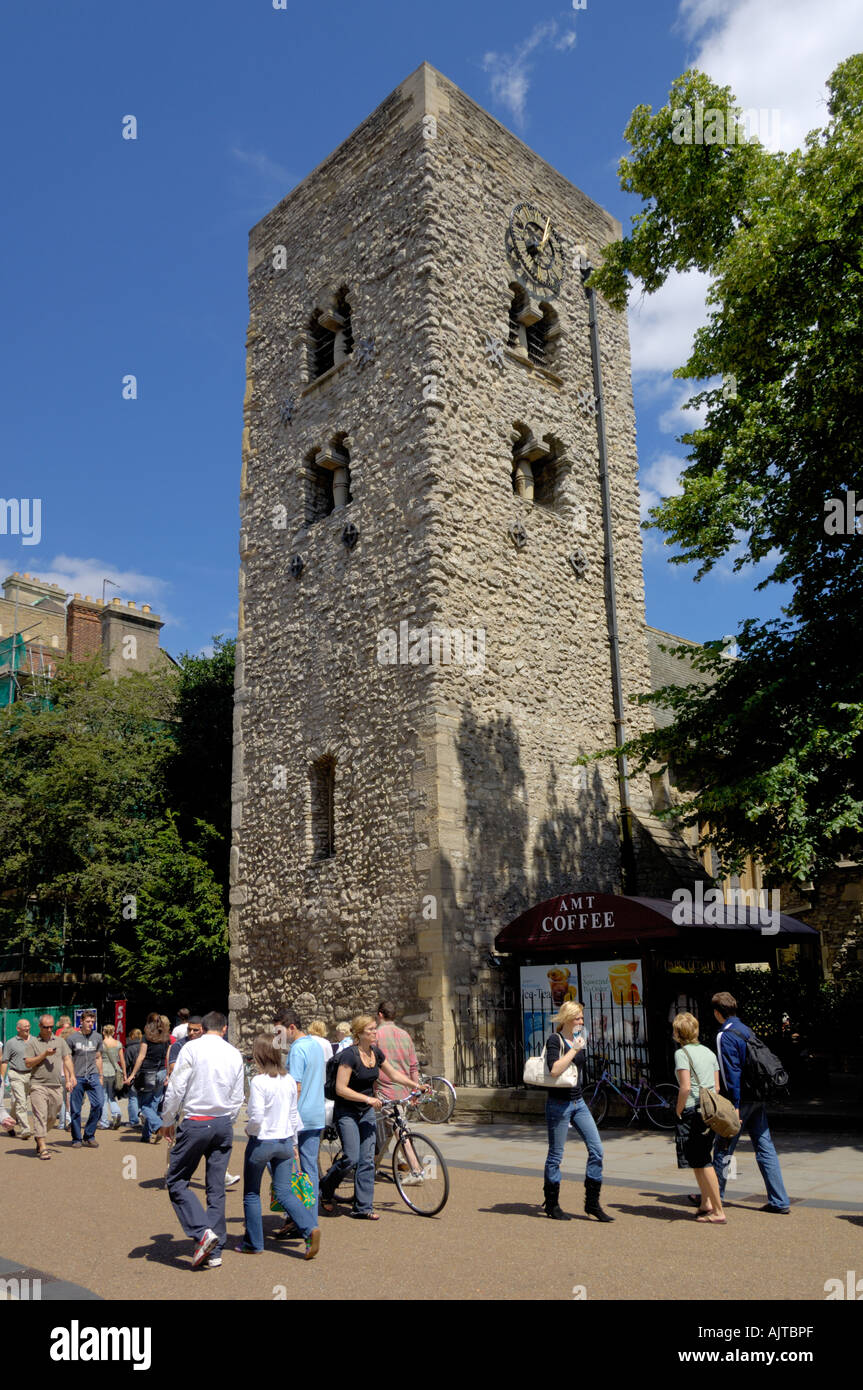 Saxon tower of St Michael at North Gate Oxford England Stock Photohttps://www.alamy.com/image-license-details/?v=1https://www.alamy.com/saxon-tower-of-st-michael-at-north-gate-oxford-england-image8460462.html
Saxon tower of St Michael at North Gate Oxford England Stock Photohttps://www.alamy.com/image-license-details/?v=1https://www.alamy.com/saxon-tower-of-st-michael-at-north-gate-oxford-england-image8460462.htmlRMAJTBPF–Saxon tower of St Michael at North Gate Oxford England
 GALLOWAY HOARD - The Galloway Hoard is a hoard of more than 100 Viking era gold, silver, glass, crystal, stone, and earthen objects discovered by a metal detectorist in Dumfries and Galloway in September 2000. This image shows decorative ceramic and clay items on temporary display at Kirkcudbright. Photographed with permission, October 2021. Stock Photohttps://www.alamy.com/image-license-details/?v=1https://www.alamy.com/galloway-hoard-the-galloway-hoard-is-a-hoard-of-more-than-100-viking-era-gold-silver-glass-crystal-stone-and-earthen-objects-discovered-by-a-metal-detectorist-in-dumfries-and-galloway-in-september-2000-this-image-shows-decorative-ceramic-and-clay-items-on-temporary-display-at-kirkcudbright-photographed-with-permission-october-2021-image447486448.html
GALLOWAY HOARD - The Galloway Hoard is a hoard of more than 100 Viking era gold, silver, glass, crystal, stone, and earthen objects discovered by a metal detectorist in Dumfries and Galloway in September 2000. This image shows decorative ceramic and clay items on temporary display at Kirkcudbright. Photographed with permission, October 2021. Stock Photohttps://www.alamy.com/image-license-details/?v=1https://www.alamy.com/galloway-hoard-the-galloway-hoard-is-a-hoard-of-more-than-100-viking-era-gold-silver-glass-crystal-stone-and-earthen-objects-discovered-by-a-metal-detectorist-in-dumfries-and-galloway-in-september-2000-this-image-shows-decorative-ceramic-and-clay-items-on-temporary-display-at-kirkcudbright-photographed-with-permission-october-2021-image447486448.htmlRM2H00NET–GALLOWAY HOARD - The Galloway Hoard is a hoard of more than 100 Viking era gold, silver, glass, crystal, stone, and earthen objects discovered by a metal detectorist in Dumfries and Galloway in September 2000. This image shows decorative ceramic and clay items on temporary display at Kirkcudbright. Photographed with permission, October 2021.
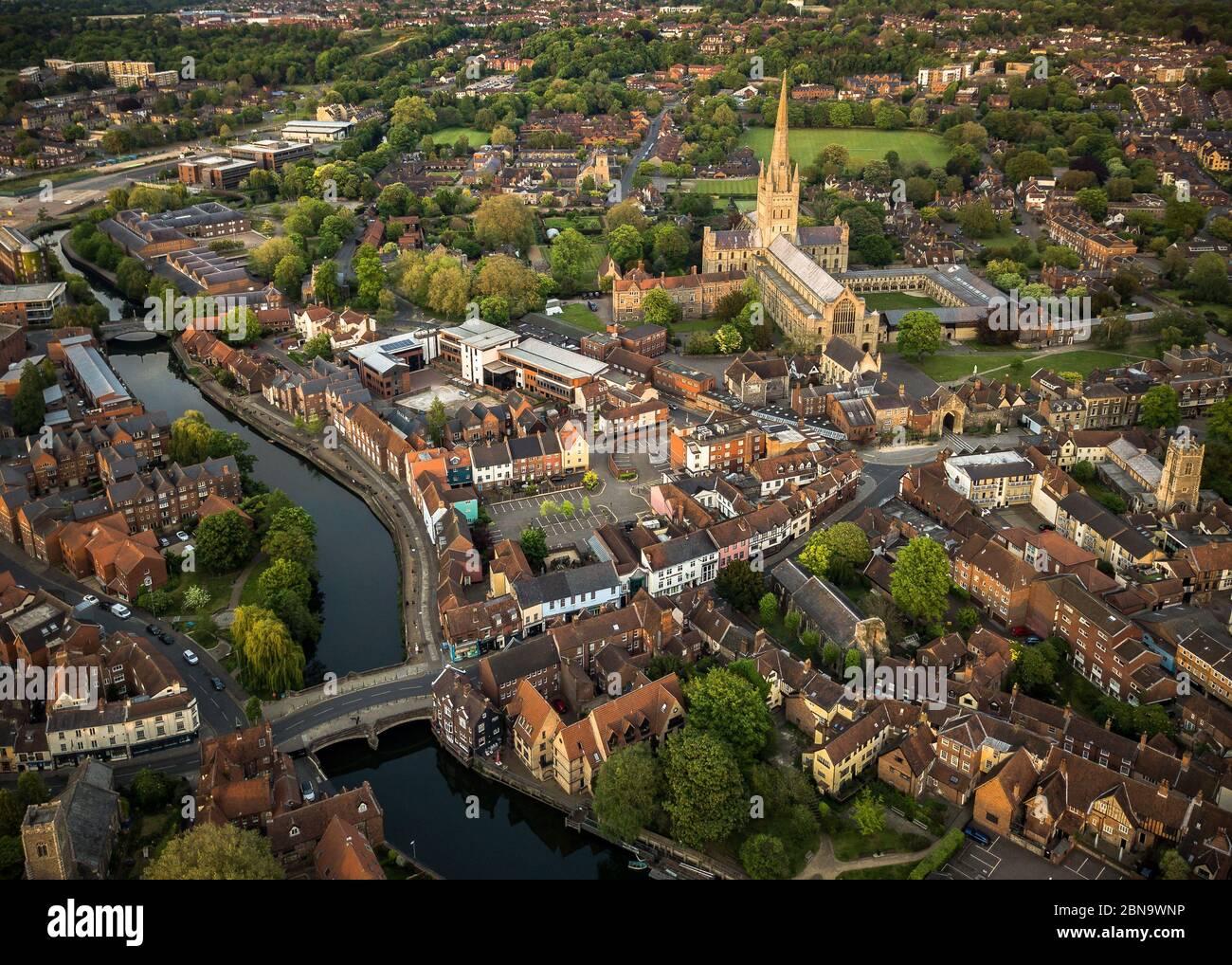 Fye Bridge, Ribs of Beef, Norwich Cathedral. Stock Photohttps://www.alamy.com/image-license-details/?v=1https://www.alamy.com/fye-bridge-ribs-of-beef-norwich-cathedral-image357332914.html
Fye Bridge, Ribs of Beef, Norwich Cathedral. Stock Photohttps://www.alamy.com/image-license-details/?v=1https://www.alamy.com/fye-bridge-ribs-of-beef-norwich-cathedral-image357332914.htmlRF2BN9WNP–Fye Bridge, Ribs of Beef, Norwich Cathedral.
 king alfred burn cake anglo saxon Wessex absent minded distracted thoughtful thinking legend story woman fire hearth history foo Stock Photohttps://www.alamy.com/image-license-details/?v=1https://www.alamy.com/king-alfred-burn-cake-anglo-saxon-wessex-absent-minded-distracted-image6357497.html
king alfred burn cake anglo saxon Wessex absent minded distracted thoughtful thinking legend story woman fire hearth history foo Stock Photohttps://www.alamy.com/image-license-details/?v=1https://www.alamy.com/king-alfred-burn-cake-anglo-saxon-wessex-absent-minded-distracted-image6357497.htmlRMA4W6RA–king alfred burn cake anglo saxon Wessex absent minded distracted thoughtful thinking legend story woman fire hearth history foo
 The Battle of Hastings, on 14 October 1066 Stock Photohttps://www.alamy.com/image-license-details/?v=1https://www.alamy.com/stock-photo-the-battle-of-hastings-on-14-october-1066-104325360.html
The Battle of Hastings, on 14 October 1066 Stock Photohttps://www.alamy.com/image-license-details/?v=1https://www.alamy.com/stock-photo-the-battle-of-hastings-on-14-october-1066-104325360.htmlRMG1MC1M–The Battle of Hastings, on 14 October 1066
 Anglo Saxon ship from the era before the Norman invasion, 11th century. Handcoloured copperplate engraving by Paul Weindl from Robert von Spalart's 'Historical Picture of the Costumes of the Principal People of Antiquity and of the Middle Ages,' Chez Collignon, Metz, 1810. Stock Photohttps://www.alamy.com/image-license-details/?v=1https://www.alamy.com/anglo-saxon-ship-from-the-era-before-the-norman-invasion-11th-century-handcoloured-copperplate-engraving-by-paul-weindl-from-robert-von-spalarts-historical-picture-of-the-costumes-of-the-principal-people-of-antiquity-and-of-the-middle-ages-chez-collignon-metz-1810-image331563725.html
Anglo Saxon ship from the era before the Norman invasion, 11th century. Handcoloured copperplate engraving by Paul Weindl from Robert von Spalart's 'Historical Picture of the Costumes of the Principal People of Antiquity and of the Middle Ages,' Chez Collignon, Metz, 1810. Stock Photohttps://www.alamy.com/image-license-details/?v=1https://www.alamy.com/anglo-saxon-ship-from-the-era-before-the-norman-invasion-11th-century-handcoloured-copperplate-engraving-by-paul-weindl-from-robert-von-spalarts-historical-picture-of-the-costumes-of-the-principal-people-of-antiquity-and-of-the-middle-ages-chez-collignon-metz-1810-image331563725.htmlRM2A7C0WH–Anglo Saxon ship from the era before the Norman invasion, 11th century. Handcoloured copperplate engraving by Paul Weindl from Robert von Spalart's 'Historical Picture of the Costumes of the Principal People of Antiquity and of the Middle Ages,' Chez Collignon, Metz, 1810.
 Anglo Saxon Britain. Silver Penny of Offa, King of Mercia. Victorian woodcut circa 1845. Stock Photohttps://www.alamy.com/image-license-details/?v=1https://www.alamy.com/anglo-saxon-britain-silver-penny-of-offa-king-of-mercia-victorian-image61954446.html
Anglo Saxon Britain. Silver Penny of Offa, King of Mercia. Victorian woodcut circa 1845. Stock Photohttps://www.alamy.com/image-license-details/?v=1https://www.alamy.com/anglo-saxon-britain-silver-penny-of-offa-king-of-mercia-victorian-image61954446.htmlRMDGP7EP–Anglo Saxon Britain. Silver Penny of Offa, King of Mercia. Victorian woodcut circa 1845.
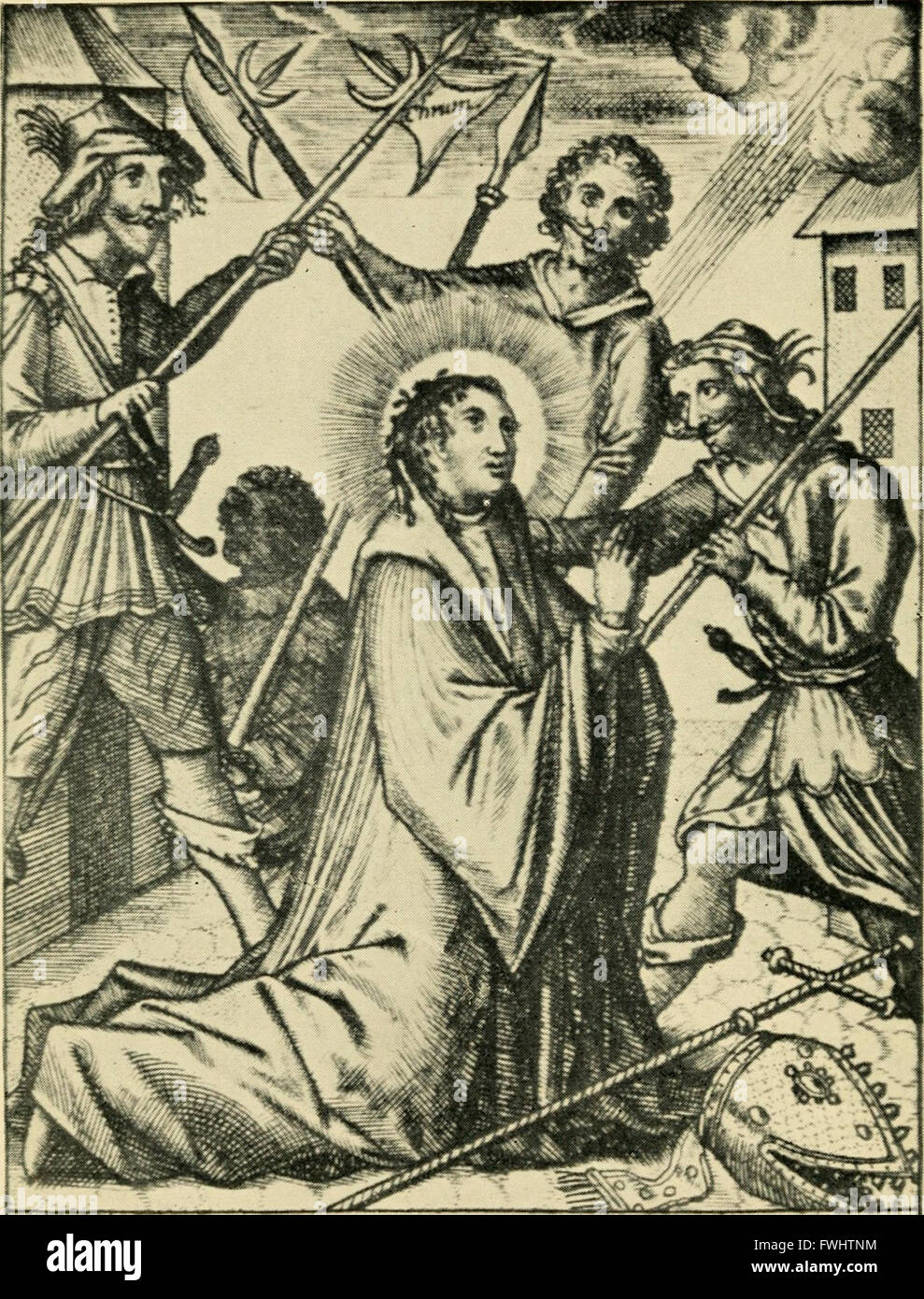 The saints and missionaries of the Anglo-Saxon era - First (and second) series (1897) Stock Photohttps://www.alamy.com/image-license-details/?v=1https://www.alamy.com/stock-photo-the-saints-and-missionaries-of-the-anglo-saxon-era-first-and-second-101810848.html
The saints and missionaries of the Anglo-Saxon era - First (and second) series (1897) Stock Photohttps://www.alamy.com/image-license-details/?v=1https://www.alamy.com/stock-photo-the-saints-and-missionaries-of-the-anglo-saxon-era-first-and-second-101810848.htmlRFFWHTNM–The saints and missionaries of the Anglo-Saxon era - First (and second) series (1897)
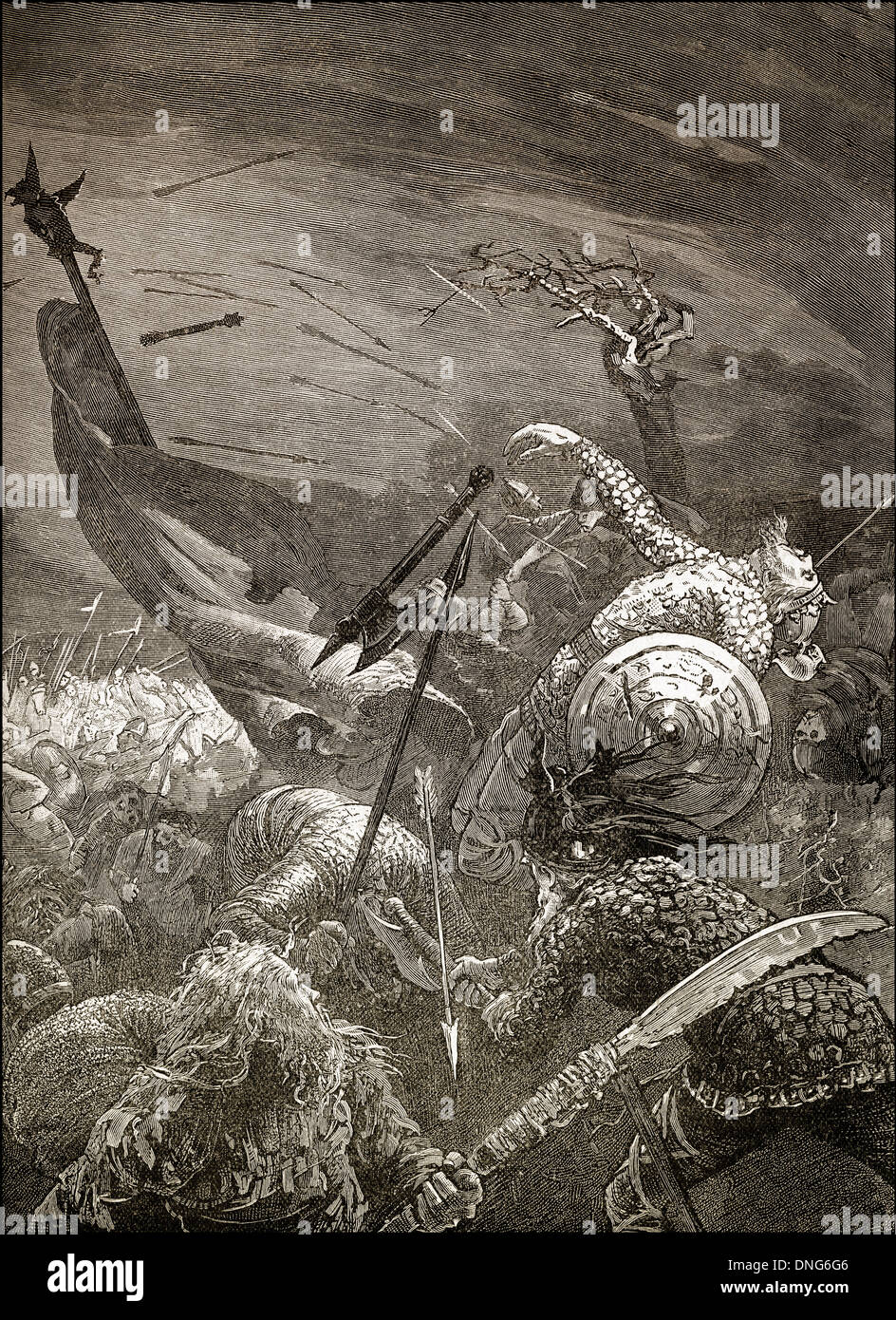 The death of Harold II or Harold Godwinson, c. 1022 - 1066, Battle of Hastings, 1066, the last Anglo-Saxon King of England Stock Photohttps://www.alamy.com/image-license-details/?v=1https://www.alamy.com/the-death-of-harold-ii-or-harold-godwinson-c-1022-1066-battle-of-hastings-image64895270.html
The death of Harold II or Harold Godwinson, c. 1022 - 1066, Battle of Hastings, 1066, the last Anglo-Saxon King of England Stock Photohttps://www.alamy.com/image-license-details/?v=1https://www.alamy.com/the-death-of-harold-ii-or-harold-godwinson-c-1022-1066-battle-of-hastings-image64895270.htmlRMDNG6G6–The death of Harold II or Harold Godwinson, c. 1022 - 1066, Battle of Hastings, 1066, the last Anglo-Saxon King of England
 Living historians portraying the Norman Saxon Middle period of British history - gown tunic draped couvrechef headrail Stock Photohttps://www.alamy.com/image-license-details/?v=1https://www.alamy.com/stock-photo-living-historians-portraying-the-norman-saxon-middle-period-of-british-76534603.html
Living historians portraying the Norman Saxon Middle period of British history - gown tunic draped couvrechef headrail Stock Photohttps://www.alamy.com/image-license-details/?v=1https://www.alamy.com/stock-photo-living-historians-portraying-the-norman-saxon-middle-period-of-british-76534603.htmlRMECECJK–Living historians portraying the Norman Saxon Middle period of British history - gown tunic draped couvrechef headrail
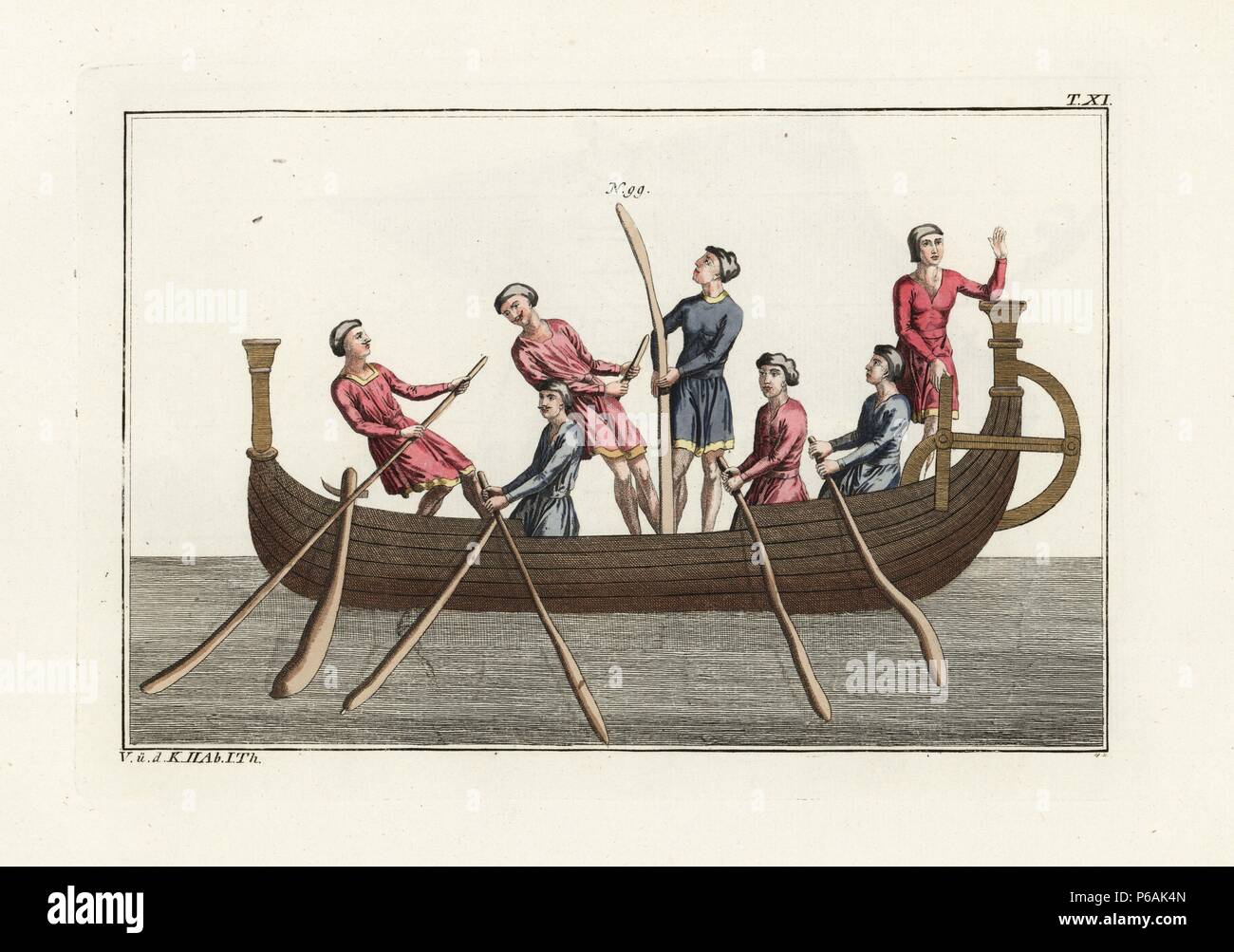 Anglo Saxon ship from the era before the Norman invasion, 11th century. Handcoloured copperplate engraving by Paul Weindl from Robert von Spalart's 'Historical Picture of the Costumes of the Principal People of Antiquity and of the Middle Ages,' Chez Collignon, Metz, 1810. Stock Photohttps://www.alamy.com/image-license-details/?v=1https://www.alamy.com/anglo-saxon-ship-from-the-era-before-the-norman-invasion-11th-century-handcoloured-copperplate-engraving-by-paul-weindl-from-robert-von-spalarts-historical-picture-of-the-costumes-of-the-principal-people-of-antiquity-and-of-the-middle-ages-chez-collignon-metz-1810-image210446901.html
Anglo Saxon ship from the era before the Norman invasion, 11th century. Handcoloured copperplate engraving by Paul Weindl from Robert von Spalart's 'Historical Picture of the Costumes of the Principal People of Antiquity and of the Middle Ages,' Chez Collignon, Metz, 1810. Stock Photohttps://www.alamy.com/image-license-details/?v=1https://www.alamy.com/anglo-saxon-ship-from-the-era-before-the-norman-invasion-11th-century-handcoloured-copperplate-engraving-by-paul-weindl-from-robert-von-spalarts-historical-picture-of-the-costumes-of-the-principal-people-of-antiquity-and-of-the-middle-ages-chez-collignon-metz-1810-image210446901.htmlRMP6AK4N–Anglo Saxon ship from the era before the Norman invasion, 11th century. Handcoloured copperplate engraving by Paul Weindl from Robert von Spalart's 'Historical Picture of the Costumes of the Principal People of Antiquity and of the Middle Ages,' Chez Collignon, Metz, 1810.
 Interior, St John the Baptist Church, Inglesham Stock Photohttps://www.alamy.com/image-license-details/?v=1https://www.alamy.com/interior-st-john-the-baptist-church-inglesham-image445352558.html
Interior, St John the Baptist Church, Inglesham Stock Photohttps://www.alamy.com/image-license-details/?v=1https://www.alamy.com/interior-st-john-the-baptist-church-inglesham-image445352558.htmlRF2GTFFME–Interior, St John the Baptist Church, Inglesham
 An Anglo-Saxon era stone cross in Eyam village - West face Stock Photohttps://www.alamy.com/image-license-details/?v=1https://www.alamy.com/an-anglo-saxon-era-stone-cross-in-eyam-village-west-face-image430610750.html
An Anglo-Saxon era stone cross in Eyam village - West face Stock Photohttps://www.alamy.com/image-license-details/?v=1https://www.alamy.com/an-anglo-saxon-era-stone-cross-in-eyam-village-west-face-image430610750.htmlRM2G0G0BA–An Anglo-Saxon era stone cross in Eyam village - West face
![. The saints and missionaries of the Anglo-Saxon era : First [and second] series. APR 24 1912 Logical sti^ Saints mtf Qissionanes of the ^Uifflo-jSa^on 6[ra- SECOND SERIES. BY THE/ REV. D. C. O. ADAMS, M.A., s. Johns college, oxford.saintsmissionari02adam Stock Photo . The saints and missionaries of the Anglo-Saxon era : First [and second] series. APR 24 1912 Logical sti^ Saints mtf Qissionanes of the ^Uifflo-jSa^on 6[ra- SECOND SERIES. BY THE/ REV. D. C. O. ADAMS, M.A., s. Johns college, oxford.saintsmissionari02adam Stock Photo](https://c8.alamy.com/comp/2AGATNH/the-saints-and-missionaries-of-the-anglo-saxon-era-first-and-second-series-apr-24-1912-logical-sti-saints-mtf-qissionanes-of-the-uifflo-jsaon-6-ra-second-series-by-the-rev-d-c-o-adams-ma-s-johns-college-oxfordsaintsmissionari02adam-2AGATNH.jpg) . The saints and missionaries of the Anglo-Saxon era : First [and second] series. APR 24 1912 Logical sti^ Saints mtf Qissionanes of the ^Uifflo-jSa^on 6[ra- SECOND SERIES. BY THE/ REV. D. C. O. ADAMS, M.A., s. Johns college, oxford.saintsmissionari02adam Stock Photohttps://www.alamy.com/image-license-details/?v=1https://www.alamy.com/the-saints-and-missionaries-of-the-anglo-saxon-era-first-and-second-series-apr-24-1912-logical-sti-saints-mtf-qissionanes-of-the-uifflo-jsaon-6-ra-second-series-by-the-rev-d-c-o-adams-ma-s-johns-college-oxfordsaintsmissionari02adam-image337070429.html
. The saints and missionaries of the Anglo-Saxon era : First [and second] series. APR 24 1912 Logical sti^ Saints mtf Qissionanes of the ^Uifflo-jSa^on 6[ra- SECOND SERIES. BY THE/ REV. D. C. O. ADAMS, M.A., s. Johns college, oxford.saintsmissionari02adam Stock Photohttps://www.alamy.com/image-license-details/?v=1https://www.alamy.com/the-saints-and-missionaries-of-the-anglo-saxon-era-first-and-second-series-apr-24-1912-logical-sti-saints-mtf-qissionanes-of-the-uifflo-jsaon-6-ra-second-series-by-the-rev-d-c-o-adams-ma-s-johns-college-oxfordsaintsmissionari02adam-image337070429.htmlRM2AGATNH–. The saints and missionaries of the Anglo-Saxon era : First [and second] series. APR 24 1912 Logical sti^ Saints mtf Qissionanes of the ^Uifflo-jSa^on 6[ra- SECOND SERIES. BY THE/ REV. D. C. O. ADAMS, M.A., s. Johns college, oxford.saintsmissionari02adam
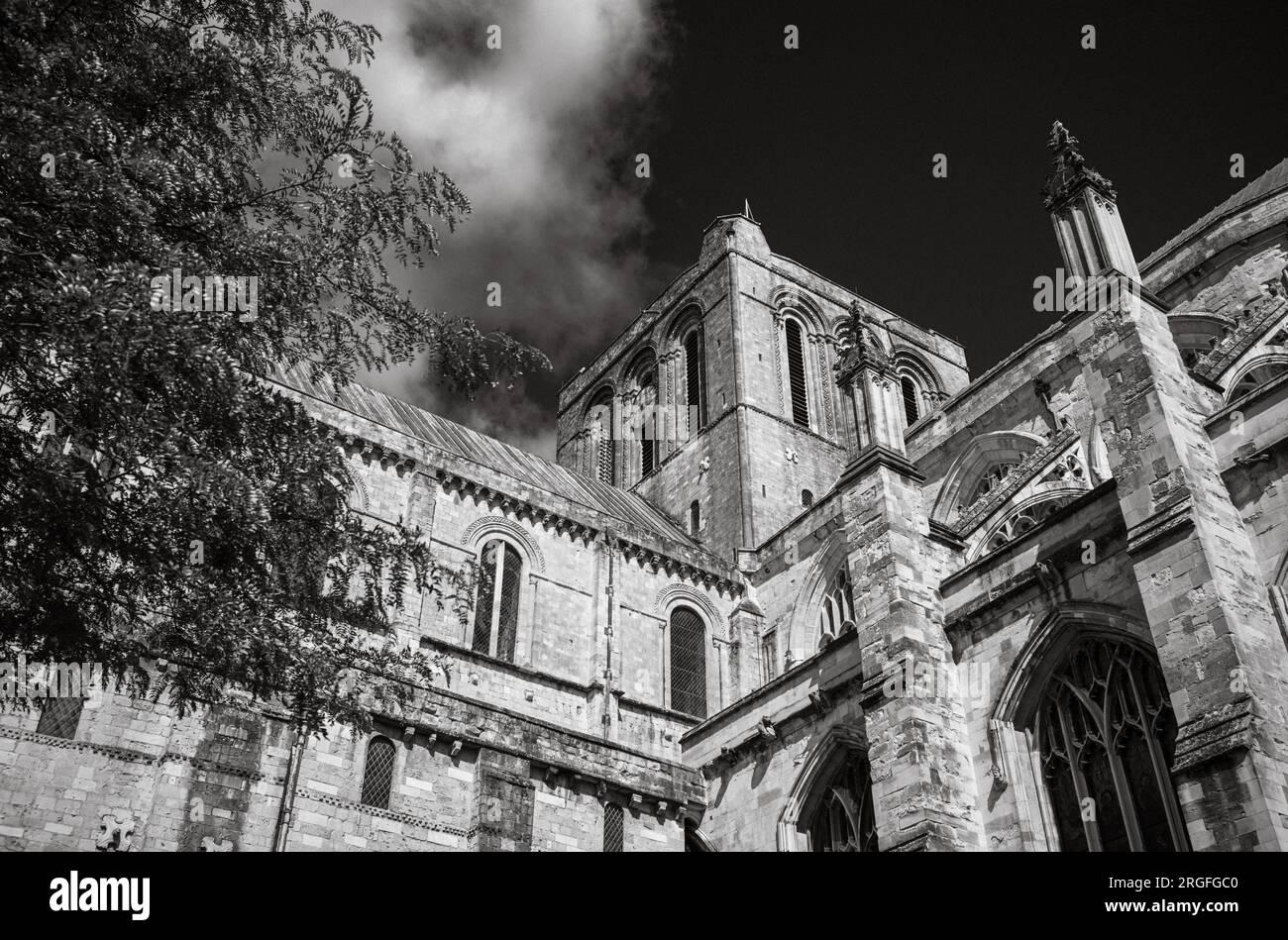 Looking up at the central tower of 1,000-year old and historic Norman-era Winchester Cathedral in Winchester, Hampshire, UK. Stock Photohttps://www.alamy.com/image-license-details/?v=1https://www.alamy.com/looking-up-at-the-central-tower-of-1000-year-old-and-historic-norman-era-winchester-cathedral-in-winchester-hampshire-uk-image560908432.html
Looking up at the central tower of 1,000-year old and historic Norman-era Winchester Cathedral in Winchester, Hampshire, UK. Stock Photohttps://www.alamy.com/image-license-details/?v=1https://www.alamy.com/looking-up-at-the-central-tower-of-1000-year-old-and-historic-norman-era-winchester-cathedral-in-winchester-hampshire-uk-image560908432.htmlRF2RGFGC0–Looking up at the central tower of 1,000-year old and historic Norman-era Winchester Cathedral in Winchester, Hampshire, UK.
 Fishing pots and Lindisfarne Castle on Holy Island, on 27th June 2019, on Lindisfarne Island, Northumberland, England. The Holy Island of Lindisfarne, also known simply as Holy Island, is an island off the northeast coast of England. Holy Island has a recorded history from the 6th century AD; it was an important centre of Celtic and Anglo-saxon Christianity. After the Viking invasions and the Norman conquest of England, a priory was reestablished. Stock Photohttps://www.alamy.com/image-license-details/?v=1https://www.alamy.com/fishing-pots-and-lindisfarne-castle-on-holy-island-on-27th-june-2019-on-lindisfarne-island-northumberland-england-the-holy-island-of-lindisfarne-also-known-simply-as-holy-island-is-an-island-off-the-northeast-coast-of-england-holy-island-has-a-recorded-history-from-the-6th-century-ad-it-was-an-important-centre-of-celtic-and-anglo-saxon-christianity-after-the-viking-invasions-and-the-norman-conquest-of-england-a-priory-was-reestablished-image258979578.html
Fishing pots and Lindisfarne Castle on Holy Island, on 27th June 2019, on Lindisfarne Island, Northumberland, England. The Holy Island of Lindisfarne, also known simply as Holy Island, is an island off the northeast coast of England. Holy Island has a recorded history from the 6th century AD; it was an important centre of Celtic and Anglo-saxon Christianity. After the Viking invasions and the Norman conquest of England, a priory was reestablished. Stock Photohttps://www.alamy.com/image-license-details/?v=1https://www.alamy.com/fishing-pots-and-lindisfarne-castle-on-holy-island-on-27th-june-2019-on-lindisfarne-island-northumberland-england-the-holy-island-of-lindisfarne-also-known-simply-as-holy-island-is-an-island-off-the-northeast-coast-of-england-holy-island-has-a-recorded-history-from-the-6th-century-ad-it-was-an-important-centre-of-celtic-and-anglo-saxon-christianity-after-the-viking-invasions-and-the-norman-conquest-of-england-a-priory-was-reestablished-image258979578.htmlRMW19F2J–Fishing pots and Lindisfarne Castle on Holy Island, on 27th June 2019, on Lindisfarne Island, Northumberland, England. The Holy Island of Lindisfarne, also known simply as Holy Island, is an island off the northeast coast of England. Holy Island has a recorded history from the 6th century AD; it was an important centre of Celtic and Anglo-saxon Christianity. After the Viking invasions and the Norman conquest of England, a priory was reestablished.
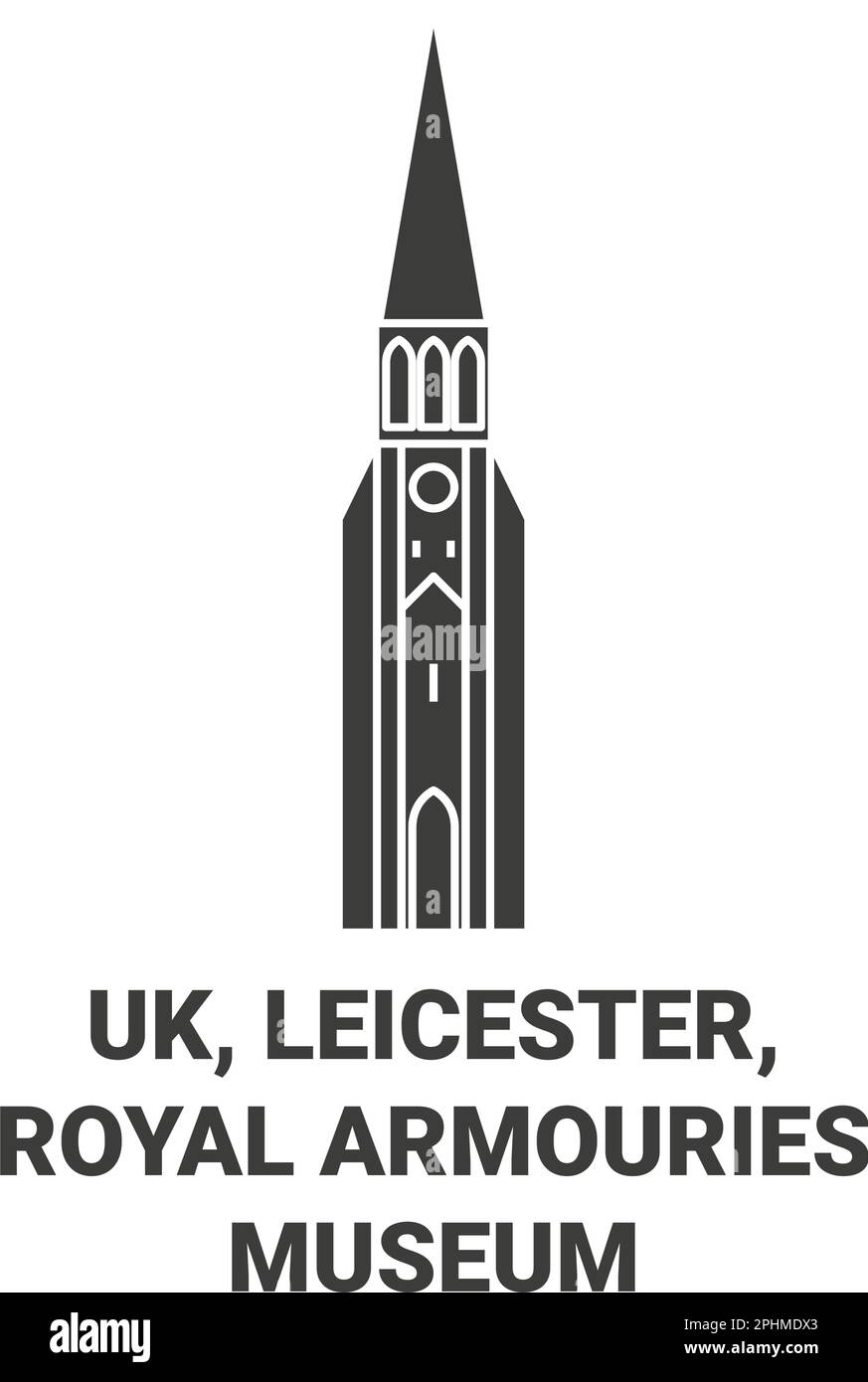 England, Leicester, Royal Armouries Museum travel landmark vector illustration Stock Vectorhttps://www.alamy.com/image-license-details/?v=1https://www.alamy.com/england-leicester-royal-armouries-museum-travel-landmark-vector-illustration-image544420523.html
England, Leicester, Royal Armouries Museum travel landmark vector illustration Stock Vectorhttps://www.alamy.com/image-license-details/?v=1https://www.alamy.com/england-leicester-royal-armouries-museum-travel-landmark-vector-illustration-image544420523.htmlRF2PHMDX3–England, Leicester, Royal Armouries Museum travel landmark vector illustration
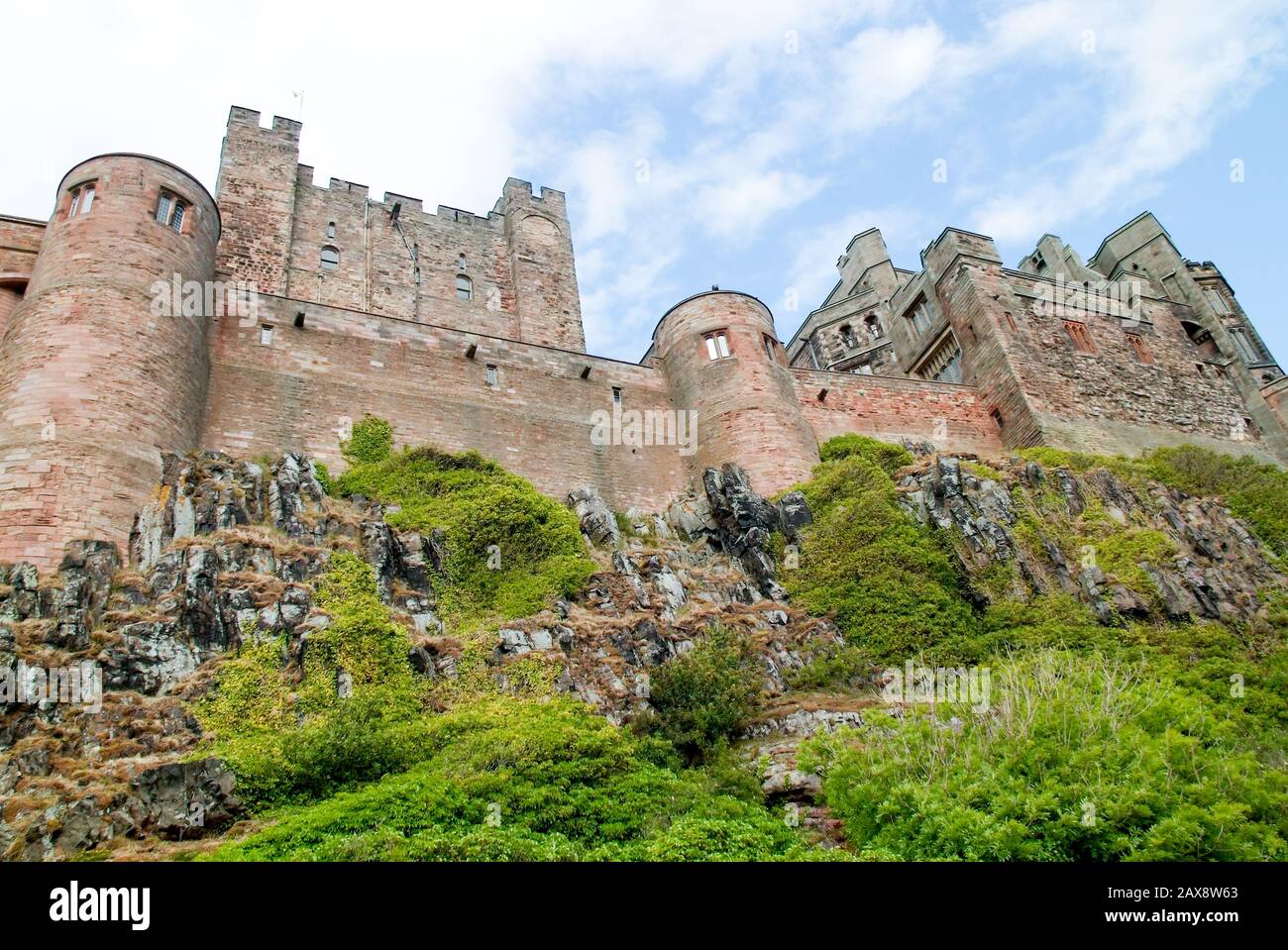 Bamburgh Castle an historical castle location in the north of england dating back to abglo-saxon era Stock Photohttps://www.alamy.com/image-license-details/?v=1https://www.alamy.com/bamburgh-castle-an-historical-castle-location-in-the-north-of-england-dating-back-to-abglo-saxon-era-image343173435.html
Bamburgh Castle an historical castle location in the north of england dating back to abglo-saxon era Stock Photohttps://www.alamy.com/image-license-details/?v=1https://www.alamy.com/bamburgh-castle-an-historical-castle-location-in-the-north-of-england-dating-back-to-abglo-saxon-era-image343173435.htmlRF2AX8W63–Bamburgh Castle an historical castle location in the north of england dating back to abglo-saxon era
 Saint Helen's Wharf is a noted beauty spot on the River Thames, just upstream of the medieval bridge at Abingdon-on-Thames. Its noted Saxon-era Saint Helens Church, and even earlier Christian places of worship have been at this location at the confluence of the Thames and Ock rivers since around 700 BCE, This is the beautiful wooden and iron door on the south side of the church. Stock Photohttps://www.alamy.com/image-license-details/?v=1https://www.alamy.com/saint-helens-wharf-is-a-noted-beauty-spot-on-the-river-thames-just-upstream-of-the-medieval-bridge-at-abingdon-on-thames-its-noted-saxon-era-saint-helens-church-and-even-earlier-christian-places-of-worship-have-been-at-this-location-at-the-confluence-of-the-thames-and-ock-rivers-since-around-700-bce-this-is-the-beautiful-wooden-and-iron-door-on-the-south-side-of-the-church-image617135555.html
Saint Helen's Wharf is a noted beauty spot on the River Thames, just upstream of the medieval bridge at Abingdon-on-Thames. Its noted Saxon-era Saint Helens Church, and even earlier Christian places of worship have been at this location at the confluence of the Thames and Ock rivers since around 700 BCE, This is the beautiful wooden and iron door on the south side of the church. Stock Photohttps://www.alamy.com/image-license-details/?v=1https://www.alamy.com/saint-helens-wharf-is-a-noted-beauty-spot-on-the-river-thames-just-upstream-of-the-medieval-bridge-at-abingdon-on-thames-its-noted-saxon-era-saint-helens-church-and-even-earlier-christian-places-of-worship-have-been-at-this-location-at-the-confluence-of-the-thames-and-ock-rivers-since-around-700-bce-this-is-the-beautiful-wooden-and-iron-door-on-the-south-side-of-the-church-image617135555.htmlRM2XT0XKF–Saint Helen's Wharf is a noted beauty spot on the River Thames, just upstream of the medieval bridge at Abingdon-on-Thames. Its noted Saxon-era Saint Helens Church, and even earlier Christian places of worship have been at this location at the confluence of the Thames and Ock rivers since around 700 BCE, This is the beautiful wooden and iron door on the south side of the church.
 Saxon tower of St Michael at North Gate Oxford England Stock Photohttps://www.alamy.com/image-license-details/?v=1https://www.alamy.com/saxon-tower-of-st-michael-at-north-gate-oxford-england-image8460464.html
Saxon tower of St Michael at North Gate Oxford England Stock Photohttps://www.alamy.com/image-license-details/?v=1https://www.alamy.com/saxon-tower-of-st-michael-at-north-gate-oxford-england-image8460464.htmlRMAJTBR1–Saxon tower of St Michael at North Gate Oxford England
 The noted Saxon-era Saint Helens Church in Abingdon is a local landmark, visible from the River Thames and miles around. A Christian place of worship Stock Photohttps://www.alamy.com/image-license-details/?v=1https://www.alamy.com/the-noted-saxon-era-saint-helens-church-in-abingdon-is-a-local-landmark-visible-from-the-river-thames-and-miles-around-a-christian-place-of-worship-image476030289.html
The noted Saxon-era Saint Helens Church in Abingdon is a local landmark, visible from the River Thames and miles around. A Christian place of worship Stock Photohttps://www.alamy.com/image-license-details/?v=1https://www.alamy.com/the-noted-saxon-era-saint-helens-church-in-abingdon-is-a-local-landmark-visible-from-the-river-thames-and-miles-around-a-christian-place-of-worship-image476030289.htmlRM2JJD1DN–The noted Saxon-era Saint Helens Church in Abingdon is a local landmark, visible from the River Thames and miles around. A Christian place of worship
 GALLOWAY HOARD - The Galloway Hoard is a hoard of more than 100 Viking era gold, silver, glass, crystal, stone, and earthen objects discovered by a metal detectorist in Dumfries and Galloway in September 2000. This image shows silver scrap, flattened armbands, ingots on temporary display at Kirkcudbright. Photographed with permission, October 2021. Stock Photohttps://www.alamy.com/image-license-details/?v=1https://www.alamy.com/galloway-hoard-the-galloway-hoard-is-a-hoard-of-more-than-100-viking-era-gold-silver-glass-crystal-stone-and-earthen-objects-discovered-by-a-metal-detectorist-in-dumfries-and-galloway-in-september-2000-this-image-shows-silver-scrap-flattened-armbands-ingots-on-temporary-display-at-kirkcudbright-photographed-with-permission-october-2021-image447486841.html
GALLOWAY HOARD - The Galloway Hoard is a hoard of more than 100 Viking era gold, silver, glass, crystal, stone, and earthen objects discovered by a metal detectorist in Dumfries and Galloway in September 2000. This image shows silver scrap, flattened armbands, ingots on temporary display at Kirkcudbright. Photographed with permission, October 2021. Stock Photohttps://www.alamy.com/image-license-details/?v=1https://www.alamy.com/galloway-hoard-the-galloway-hoard-is-a-hoard-of-more-than-100-viking-era-gold-silver-glass-crystal-stone-and-earthen-objects-discovered-by-a-metal-detectorist-in-dumfries-and-galloway-in-september-2000-this-image-shows-silver-scrap-flattened-armbands-ingots-on-temporary-display-at-kirkcudbright-photographed-with-permission-october-2021-image447486841.htmlRM2H00P0W–GALLOWAY HOARD - The Galloway Hoard is a hoard of more than 100 Viking era gold, silver, glass, crystal, stone, and earthen objects discovered by a metal detectorist in Dumfries and Galloway in September 2000. This image shows silver scrap, flattened armbands, ingots on temporary display at Kirkcudbright. Photographed with permission, October 2021.
 king alfred student scientist anglo saxon court woman child royal monarch England English regal experiment light wax candle tabl Stock Photohttps://www.alamy.com/image-license-details/?v=1https://www.alamy.com/king-alfred-student-scientist-anglo-saxon-court-woman-child-royal-image6357299.html
king alfred student scientist anglo saxon court woman child royal monarch England English regal experiment light wax candle tabl Stock Photohttps://www.alamy.com/image-license-details/?v=1https://www.alamy.com/king-alfred-student-scientist-anglo-saxon-court-woman-child-royal-image6357299.htmlRMA4W5R4–king alfred student scientist anglo saxon court woman child royal monarch England English regal experiment light wax candle tabl
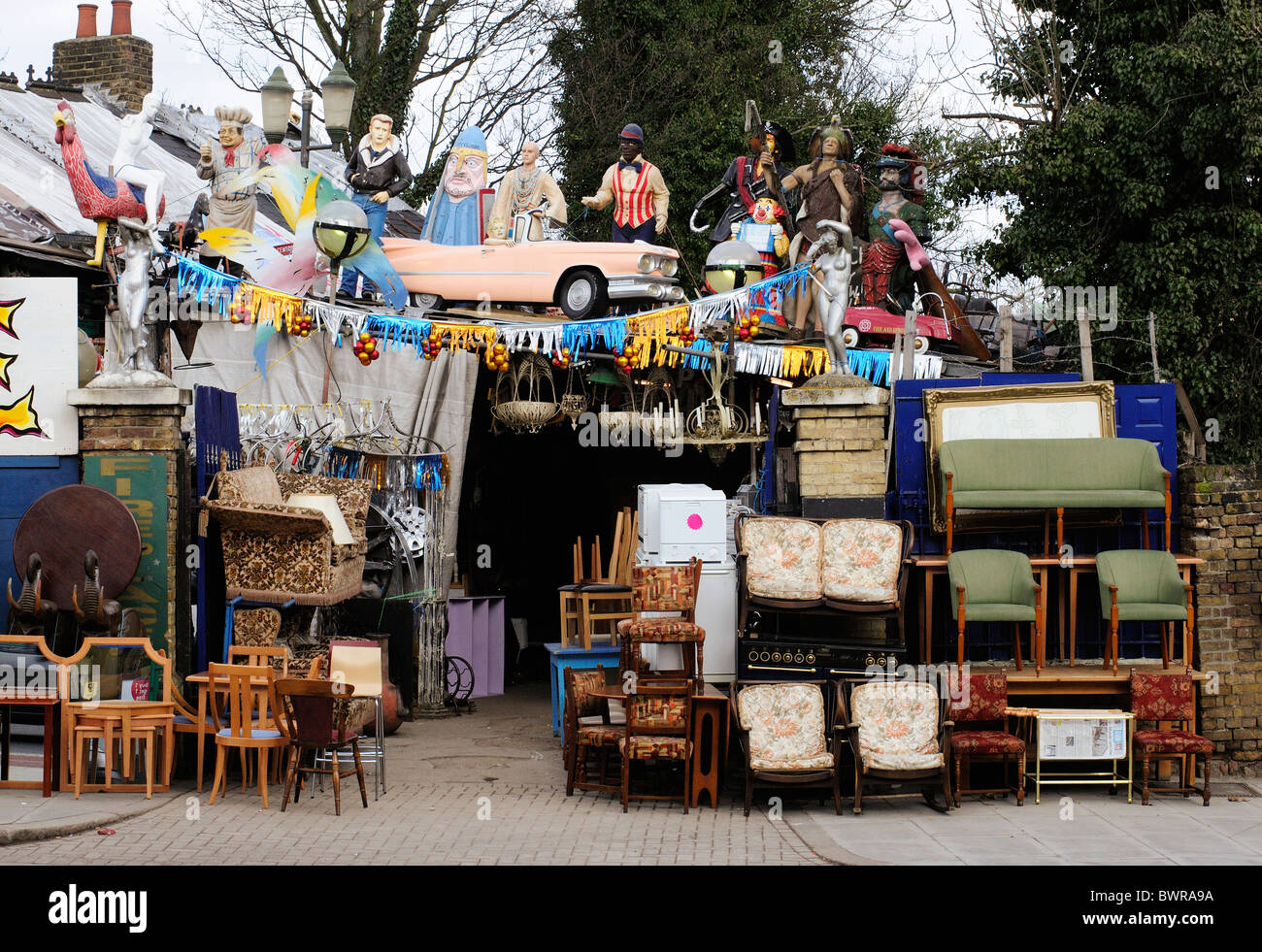 Aladdin's Cave Junk shop and reclamation yard and secondhand furniture shop, Lewisham way, London Stock Photohttps://www.alamy.com/image-license-details/?v=1https://www.alamy.com/stock-photo-aladdins-cave-junk-shop-and-reclamation-yard-and-secondhand-furniture-33089766.html
Aladdin's Cave Junk shop and reclamation yard and secondhand furniture shop, Lewisham way, London Stock Photohttps://www.alamy.com/image-license-details/?v=1https://www.alamy.com/stock-photo-aladdins-cave-junk-shop-and-reclamation-yard-and-secondhand-furniture-33089766.htmlRFBWRA9A–Aladdin's Cave Junk shop and reclamation yard and secondhand furniture shop, Lewisham way, London
 Anglo Saxon ship with sails and shields from the era before the Norman invasion, 11th century. Handcoloured copperplate engraving by Paul Weindl from Robert von Spalart's 'Historical Picture of the Costumes of the Principal People of Antiquity and of the Middle Ages,' Chez Collignon, Metz, 1810. Stock Photohttps://www.alamy.com/image-license-details/?v=1https://www.alamy.com/anglo-saxon-ship-with-sails-and-shields-from-the-era-before-the-norman-invasion-11th-century-handcoloured-copperplate-engraving-by-paul-weindl-from-robert-von-spalarts-historical-picture-of-the-costumes-of-the-principal-people-of-antiquity-and-of-the-middle-ages-chez-collignon-metz-1810-image331563733.html
Anglo Saxon ship with sails and shields from the era before the Norman invasion, 11th century. Handcoloured copperplate engraving by Paul Weindl from Robert von Spalart's 'Historical Picture of the Costumes of the Principal People of Antiquity and of the Middle Ages,' Chez Collignon, Metz, 1810. Stock Photohttps://www.alamy.com/image-license-details/?v=1https://www.alamy.com/anglo-saxon-ship-with-sails-and-shields-from-the-era-before-the-norman-invasion-11th-century-handcoloured-copperplate-engraving-by-paul-weindl-from-robert-von-spalarts-historical-picture-of-the-costumes-of-the-principal-people-of-antiquity-and-of-the-middle-ages-chez-collignon-metz-1810-image331563733.htmlRM2A7C0WW–Anglo Saxon ship with sails and shields from the era before the Norman invasion, 11th century. Handcoloured copperplate engraving by Paul Weindl from Robert von Spalart's 'Historical Picture of the Costumes of the Principal People of Antiquity and of the Middle Ages,' Chez Collignon, Metz, 1810.
 Anglo Saxon Britain. Boar hunting in Anglo-Saxon Britain. Victorian woodcut circa 1845. Stock Photohttps://www.alamy.com/image-license-details/?v=1https://www.alamy.com/anglo-saxon-britain-boar-hunting-in-anglo-saxon-britain-victorian-image61954437.html
Anglo Saxon Britain. Boar hunting in Anglo-Saxon Britain. Victorian woodcut circa 1845. Stock Photohttps://www.alamy.com/image-license-details/?v=1https://www.alamy.com/anglo-saxon-britain-boar-hunting-in-anglo-saxon-britain-victorian-image61954437.htmlRMDGP7ED–Anglo Saxon Britain. Boar hunting in Anglo-Saxon Britain. Victorian woodcut circa 1845.
 The saints and missionaries of the Anglo-Saxon era - First (and second) series (1897) Stock Photohttps://www.alamy.com/image-license-details/?v=1https://www.alamy.com/stock-photo-the-saints-and-missionaries-of-the-anglo-saxon-era-first-and-second-101810846.html
The saints and missionaries of the Anglo-Saxon era - First (and second) series (1897) Stock Photohttps://www.alamy.com/image-license-details/?v=1https://www.alamy.com/stock-photo-the-saints-and-missionaries-of-the-anglo-saxon-era-first-and-second-101810846.htmlRFFWHTNJ–The saints and missionaries of the Anglo-Saxon era - First (and second) series (1897)
 Treaty of Hengist or Hengest and Horsa or Hors with Vortigern, Vortiger or Vortigen, a 5th-century warlord in Britain, a leading Stock Photohttps://www.alamy.com/image-license-details/?v=1https://www.alamy.com/treaty-of-hengist-or-hengest-and-horsa-or-hors-with-vortigern-vortiger-image64895108.html
Treaty of Hengist or Hengest and Horsa or Hors with Vortigern, Vortiger or Vortigen, a 5th-century warlord in Britain, a leading Stock Photohttps://www.alamy.com/image-license-details/?v=1https://www.alamy.com/treaty-of-hengist-or-hengest-and-horsa-or-hors-with-vortigern-vortiger-image64895108.htmlRMDNG6AC–Treaty of Hengist or Hengest and Horsa or Hors with Vortigern, Vortiger or Vortigen, a 5th-century warlord in Britain, a leading
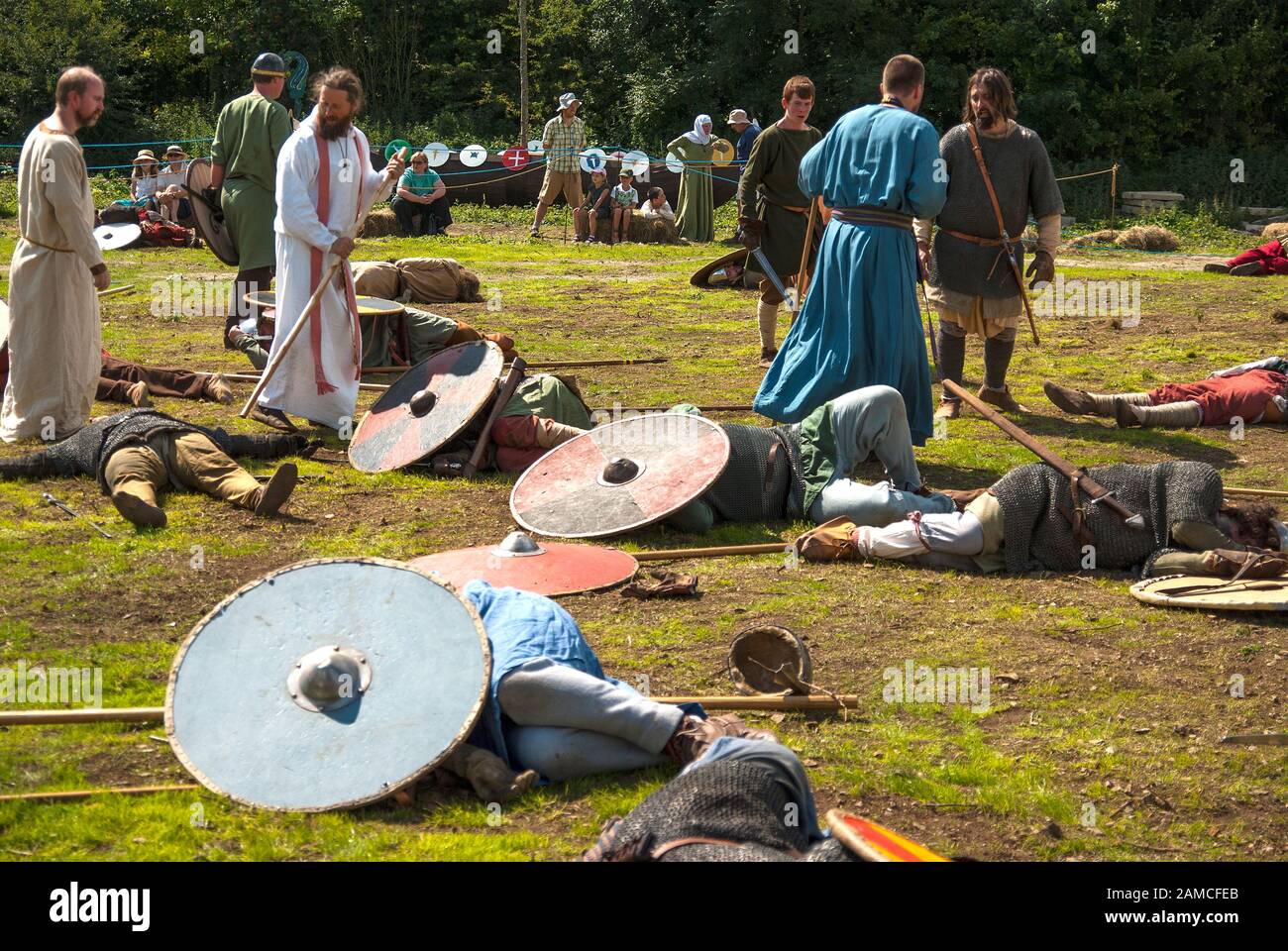 Anglo Saxon battlefield re-enactment scene Stock Photohttps://www.alamy.com/image-license-details/?v=1https://www.alamy.com/anglo-saxon-battlefield-re-enactment-scene-image339565699.html
Anglo Saxon battlefield re-enactment scene Stock Photohttps://www.alamy.com/image-license-details/?v=1https://www.alamy.com/anglo-saxon-battlefield-re-enactment-scene-image339565699.htmlRF2AMCFEB–Anglo Saxon battlefield re-enactment scene
 Anglo Saxon ship with sails and shields from the era before the Norman invasion, 11th century. Handcoloured copperplate engraving by Paul Weindl from Robert von Spalart's 'Historical Picture of the Costumes of the Principal People of Antiquity and of the Middle Ages,' Chez Collignon, Metz, 1810. Stock Photohttps://www.alamy.com/image-license-details/?v=1https://www.alamy.com/anglo-saxon-ship-with-sails-and-shields-from-the-era-before-the-norman-invasion-11th-century-handcoloured-copperplate-engraving-by-paul-weindl-from-robert-von-spalarts-historical-picture-of-the-costumes-of-the-principal-people-of-antiquity-and-of-the-middle-ages-chez-collignon-metz-1810-image210457734.html
Anglo Saxon ship with sails and shields from the era before the Norman invasion, 11th century. Handcoloured copperplate engraving by Paul Weindl from Robert von Spalart's 'Historical Picture of the Costumes of the Principal People of Antiquity and of the Middle Ages,' Chez Collignon, Metz, 1810. Stock Photohttps://www.alamy.com/image-license-details/?v=1https://www.alamy.com/anglo-saxon-ship-with-sails-and-shields-from-the-era-before-the-norman-invasion-11th-century-handcoloured-copperplate-engraving-by-paul-weindl-from-robert-von-spalarts-historical-picture-of-the-costumes-of-the-principal-people-of-antiquity-and-of-the-middle-ages-chez-collignon-metz-1810-image210457734.htmlRMP6B4YJ–Anglo Saxon ship with sails and shields from the era before the Norman invasion, 11th century. Handcoloured copperplate engraving by Paul Weindl from Robert von Spalart's 'Historical Picture of the Costumes of the Principal People of Antiquity and of the Middle Ages,' Chez Collignon, Metz, 1810.
 Vintage harmonium, St John the Baptist Church, Inglesham Stock Photohttps://www.alamy.com/image-license-details/?v=1https://www.alamy.com/vintage-harmonium-st-john-the-baptist-church-inglesham-image445352561.html
Vintage harmonium, St John the Baptist Church, Inglesham Stock Photohttps://www.alamy.com/image-license-details/?v=1https://www.alamy.com/vintage-harmonium-st-john-the-baptist-church-inglesham-image445352561.htmlRF2GTFFMH–Vintage harmonium, St John the Baptist Church, Inglesham
 An Anglo-Saxon era stone cross in Eyam village - South edge Stock Photohttps://www.alamy.com/image-license-details/?v=1https://www.alamy.com/an-anglo-saxon-era-stone-cross-in-eyam-village-south-edge-image430610786.html
An Anglo-Saxon era stone cross in Eyam village - South edge Stock Photohttps://www.alamy.com/image-license-details/?v=1https://www.alamy.com/an-anglo-saxon-era-stone-cross-in-eyam-village-south-edge-image430610786.htmlRM2G0G0CJ–An Anglo-Saxon era stone cross in Eyam village - South edge
![. The saints and missionaries of the Anglo-Saxon era : First [and second] series. people seemed very friendly, and morethan ordinary success attended their efforts for theirconversion. So they passed through the country toDockum, which is on the north coast of Friesland.Here S. Boniface determined to make some littlestay, and he appointed a day when all his newconverts (which were some thousands in number)should gather together for their Confirmation. Thisday was looked forward to with the happiestanticipations, and the intermediate time was spentin making preparations for the accommodation of Stock Photo . The saints and missionaries of the Anglo-Saxon era : First [and second] series. people seemed very friendly, and morethan ordinary success attended their efforts for theirconversion. So they passed through the country toDockum, which is on the north coast of Friesland.Here S. Boniface determined to make some littlestay, and he appointed a day when all his newconverts (which were some thousands in number)should gather together for their Confirmation. Thisday was looked forward to with the happiestanticipations, and the intermediate time was spentin making preparations for the accommodation of Stock Photo](https://c8.alamy.com/comp/2AGARC1/the-saints-and-missionaries-of-the-anglo-saxon-era-first-and-second-series-people-seemed-very-friendly-and-morethan-ordinary-success-attended-their-efforts-for-theirconversion-so-they-passed-through-the-country-todockum-which-is-on-the-north-coast-of-frieslandhere-s-boniface-determined-to-make-some-littlestay-and-he-appointed-a-day-when-all-his-newconverts-which-were-some-thousands-in-numbershould-gather-together-for-their-confirmation-thisday-was-looked-forward-to-with-the-happiestanticipations-and-the-intermediate-time-was-spentin-making-preparations-for-the-accommodation-of-2AGARC1.jpg) . The saints and missionaries of the Anglo-Saxon era : First [and second] series. people seemed very friendly, and morethan ordinary success attended their efforts for theirconversion. So they passed through the country toDockum, which is on the north coast of Friesland.Here S. Boniface determined to make some littlestay, and he appointed a day when all his newconverts (which were some thousands in number)should gather together for their Confirmation. Thisday was looked forward to with the happiestanticipations, and the intermediate time was spentin making preparations for the accommodation of Stock Photohttps://www.alamy.com/image-license-details/?v=1https://www.alamy.com/the-saints-and-missionaries-of-the-anglo-saxon-era-first-and-second-series-people-seemed-very-friendly-and-morethan-ordinary-success-attended-their-efforts-for-theirconversion-so-they-passed-through-the-country-todockum-which-is-on-the-north-coast-of-frieslandhere-s-boniface-determined-to-make-some-littlestay-and-he-appointed-a-day-when-all-his-newconverts-which-were-some-thousands-in-numbershould-gather-together-for-their-confirmation-thisday-was-looked-forward-to-with-the-happiestanticipations-and-the-intermediate-time-was-spentin-making-preparations-for-the-accommodation-of-image337069377.html
. The saints and missionaries of the Anglo-Saxon era : First [and second] series. people seemed very friendly, and morethan ordinary success attended their efforts for theirconversion. So they passed through the country toDockum, which is on the north coast of Friesland.Here S. Boniface determined to make some littlestay, and he appointed a day when all his newconverts (which were some thousands in number)should gather together for their Confirmation. Thisday was looked forward to with the happiestanticipations, and the intermediate time was spentin making preparations for the accommodation of Stock Photohttps://www.alamy.com/image-license-details/?v=1https://www.alamy.com/the-saints-and-missionaries-of-the-anglo-saxon-era-first-and-second-series-people-seemed-very-friendly-and-morethan-ordinary-success-attended-their-efforts-for-theirconversion-so-they-passed-through-the-country-todockum-which-is-on-the-north-coast-of-frieslandhere-s-boniface-determined-to-make-some-littlestay-and-he-appointed-a-day-when-all-his-newconverts-which-were-some-thousands-in-numbershould-gather-together-for-their-confirmation-thisday-was-looked-forward-to-with-the-happiestanticipations-and-the-intermediate-time-was-spentin-making-preparations-for-the-accommodation-of-image337069377.htmlRM2AGARC1–. The saints and missionaries of the Anglo-Saxon era : First [and second] series. people seemed very friendly, and morethan ordinary success attended their efforts for theirconversion. So they passed through the country toDockum, which is on the north coast of Friesland.Here S. Boniface determined to make some littlestay, and he appointed a day when all his newconverts (which were some thousands in number)should gather together for their Confirmation. Thisday was looked forward to with the happiestanticipations, and the intermediate time was spentin making preparations for the accommodation of
 The Battle of Hastings, on 14 October 1066, From British Battles on Land and Sea, by James Grant Stock Photohttps://www.alamy.com/image-license-details/?v=1https://www.alamy.com/the-battle-of-hastings-on-14-october-1066-from-british-battles-on-land-and-sea-by-james-grant-image213384721.html
The Battle of Hastings, on 14 October 1066, From British Battles on Land and Sea, by James Grant Stock Photohttps://www.alamy.com/image-license-details/?v=1https://www.alamy.com/the-battle-of-hastings-on-14-october-1066-from-british-battles-on-land-and-sea-by-james-grant-image213384721.htmlRMPB4EAW–The Battle of Hastings, on 14 October 1066, From British Battles on Land and Sea, by James Grant
 Looking up at the central tower of 1,000-year old and historic Norman-era Winchester Cathedral in Winchester, Hampshire, UK. Stock Photohttps://www.alamy.com/image-license-details/?v=1https://www.alamy.com/looking-up-at-the-central-tower-of-1000-year-old-and-historic-norman-era-winchester-cathedral-in-winchester-hampshire-uk-image560908733.html
Looking up at the central tower of 1,000-year old and historic Norman-era Winchester Cathedral in Winchester, Hampshire, UK. Stock Photohttps://www.alamy.com/image-license-details/?v=1https://www.alamy.com/looking-up-at-the-central-tower-of-1000-year-old-and-historic-norman-era-winchester-cathedral-in-winchester-hampshire-uk-image560908733.htmlRF2RGFGPN–Looking up at the central tower of 1,000-year old and historic Norman-era Winchester Cathedral in Winchester, Hampshire, UK.
 Wild flowers and a solitary walker in the western dunes on Holy Island, on 27th June 2019, on Lindisfarne Island, Northumberland, England. The Holy Island of Lindisfarne, also known simply as Holy Island, is an island off the northeast coast of England. Holy Island has a recorded history from the 6th century AD; it was an important centre of Celtic and Anglo-saxon Christianity. After the Viking invasions and the Norman conquest of England, a priory was reestablished. Stock Photohttps://www.alamy.com/image-license-details/?v=1https://www.alamy.com/wild-flowers-and-a-solitary-walker-in-the-western-dunes-on-holy-island-on-27th-june-2019-on-lindisfarne-island-northumberland-england-the-holy-island-of-lindisfarne-also-known-simply-as-holy-island-is-an-island-off-the-northeast-coast-of-england-holy-island-has-a-recorded-history-from-the-6th-century-ad-it-was-an-important-centre-of-celtic-and-anglo-saxon-christianity-after-the-viking-invasions-and-the-norman-conquest-of-england-a-priory-was-reestablished-image258979466.html
Wild flowers and a solitary walker in the western dunes on Holy Island, on 27th June 2019, on Lindisfarne Island, Northumberland, England. The Holy Island of Lindisfarne, also known simply as Holy Island, is an island off the northeast coast of England. Holy Island has a recorded history from the 6th century AD; it was an important centre of Celtic and Anglo-saxon Christianity. After the Viking invasions and the Norman conquest of England, a priory was reestablished. Stock Photohttps://www.alamy.com/image-license-details/?v=1https://www.alamy.com/wild-flowers-and-a-solitary-walker-in-the-western-dunes-on-holy-island-on-27th-june-2019-on-lindisfarne-island-northumberland-england-the-holy-island-of-lindisfarne-also-known-simply-as-holy-island-is-an-island-off-the-northeast-coast-of-england-holy-island-has-a-recorded-history-from-the-6th-century-ad-it-was-an-important-centre-of-celtic-and-anglo-saxon-christianity-after-the-viking-invasions-and-the-norman-conquest-of-england-a-priory-was-reestablished-image258979466.htmlRMW19EXJ–Wild flowers and a solitary walker in the western dunes on Holy Island, on 27th June 2019, on Lindisfarne Island, Northumberland, England. The Holy Island of Lindisfarne, also known simply as Holy Island, is an island off the northeast coast of England. Holy Island has a recorded history from the 6th century AD; it was an important centre of Celtic and Anglo-saxon Christianity. After the Viking invasions and the Norman conquest of England, a priory was reestablished.
 Edmund, King of England, Martyr; Presentation of the Virgin; St. Columba; St. Cecil. Stock Photohttps://www.alamy.com/image-license-details/?v=1https://www.alamy.com/edmund-king-of-england-martyr-presentation-of-the-virgin-st-columba-st-cecil-image433081854.html
Edmund, King of England, Martyr; Presentation of the Virgin; St. Columba; St. Cecil. Stock Photohttps://www.alamy.com/image-license-details/?v=1https://www.alamy.com/edmund-king-of-england-martyr-presentation-of-the-virgin-st-columba-st-cecil-image433081854.htmlRM2G4GG92–Edmund, King of England, Martyr; Presentation of the Virgin; St. Columba; St. Cecil.
 Norwich Cathedral, Aerial Landscape. Stock Photohttps://www.alamy.com/image-license-details/?v=1https://www.alamy.com/norwich-cathedral-aerial-landscape-image357332779.html
Norwich Cathedral, Aerial Landscape. Stock Photohttps://www.alamy.com/image-license-details/?v=1https://www.alamy.com/norwich-cathedral-aerial-landscape-image357332779.htmlRF2BN9WGY–Norwich Cathedral, Aerial Landscape.
 Dover Castle, kent, england, uk Stock Photohttps://www.alamy.com/image-license-details/?v=1https://www.alamy.com/dover-castle-kent-england-uk-image600813596.html
Dover Castle, kent, england, uk Stock Photohttps://www.alamy.com/image-license-details/?v=1https://www.alamy.com/dover-castle-kent-england-uk-image600813596.htmlRF2WWDBTC–Dover Castle, kent, england, uk
 The noted Saxon-era Saint Helens Church in Abingdon is a local landmark, visible from the River Thames and miles around. A Christian place of worship Stock Photohttps://www.alamy.com/image-license-details/?v=1https://www.alamy.com/the-noted-saxon-era-saint-helens-church-in-abingdon-is-a-local-landmark-visible-from-the-river-thames-and-miles-around-a-christian-place-of-worship-image476030291.html
The noted Saxon-era Saint Helens Church in Abingdon is a local landmark, visible from the River Thames and miles around. A Christian place of worship Stock Photohttps://www.alamy.com/image-license-details/?v=1https://www.alamy.com/the-noted-saxon-era-saint-helens-church-in-abingdon-is-a-local-landmark-visible-from-the-river-thames-and-miles-around-a-christian-place-of-worship-image476030291.htmlRM2JJD1DR–The noted Saxon-era Saint Helens Church in Abingdon is a local landmark, visible from the River Thames and miles around. A Christian place of worship
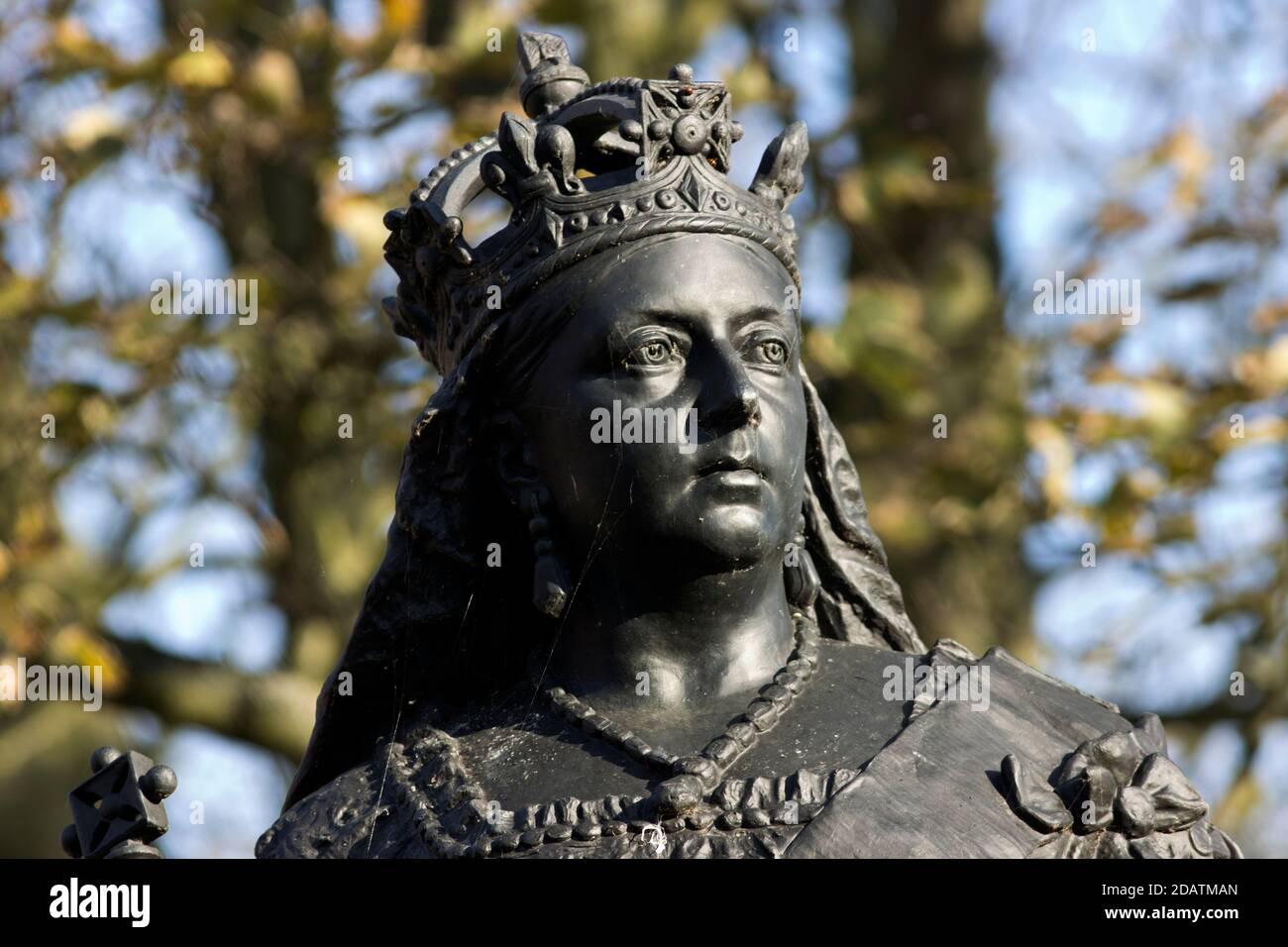 Detail of a bronze statue of Queen Victoria in front of Scarborough Town Hall. Few towns in the British Isles have no commemorative statuary of her Stock Photohttps://www.alamy.com/image-license-details/?v=1https://www.alamy.com/detail-of-a-bronze-statue-of-queen-victoria-in-front-of-scarborough-town-hall-few-towns-in-the-british-isles-have-no-commemorative-statuary-of-her-image385317485.html
Detail of a bronze statue of Queen Victoria in front of Scarborough Town Hall. Few towns in the British Isles have no commemorative statuary of her Stock Photohttps://www.alamy.com/image-license-details/?v=1https://www.alamy.com/detail-of-a-bronze-statue-of-queen-victoria-in-front-of-scarborough-town-hall-few-towns-in-the-british-isles-have-no-commemorative-statuary-of-her-image385317485.htmlRM2DATMAN–Detail of a bronze statue of Queen Victoria in front of Scarborough Town Hall. Few towns in the British Isles have no commemorative statuary of her
 king alfred student child study book anglo saxon court woman child royal monarch England English regal lecturn teach read liter Stock Photohttps://www.alamy.com/image-license-details/?v=1https://www.alamy.com/king-alfred-student-child-study-book-anglo-saxon-court-woman-child-image6357294.html
king alfred student child study book anglo saxon court woman child royal monarch England English regal lecturn teach read liter Stock Photohttps://www.alamy.com/image-license-details/?v=1https://www.alamy.com/king-alfred-student-child-study-book-anglo-saxon-court-woman-child-image6357294.htmlRMA4W5PF–king alfred student child study book anglo saxon court woman child royal monarch England English regal lecturn teach read liter
 Most of the houses of Old Town Scarborough date back to the late Georgian and early Victorian era when Scarborough was booming as a resort town Stock Photohttps://www.alamy.com/image-license-details/?v=1https://www.alamy.com/most-of-the-houses-of-old-town-scarborough-date-back-to-the-late-georgian-and-early-victorian-era-when-scarborough-was-booming-as-a-resort-town-image453987385.html
Most of the houses of Old Town Scarborough date back to the late Georgian and early Victorian era when Scarborough was booming as a resort town Stock Photohttps://www.alamy.com/image-license-details/?v=1https://www.alamy.com/most-of-the-houses-of-old-town-scarborough-date-back-to-the-late-georgian-and-early-victorian-era-when-scarborough-was-booming-as-a-resort-town-image453987385.htmlRM2HAGWF5–Most of the houses of Old Town Scarborough date back to the late Georgian and early Victorian era when Scarborough was booming as a resort town
 Tara Brooch Drogheda Celtic Anglo Saxon Ancient art jewelry pin Irish pseudo-penannular silver gilt Stock Photohttps://www.alamy.com/image-license-details/?v=1https://www.alamy.com/stock-photo-tara-brooch-drogheda-celtic-anglo-saxon-ancient-art-jewelry-pin-irish-77583515.html
Tara Brooch Drogheda Celtic Anglo Saxon Ancient art jewelry pin Irish pseudo-penannular silver gilt Stock Photohttps://www.alamy.com/image-license-details/?v=1https://www.alamy.com/stock-photo-tara-brooch-drogheda-celtic-anglo-saxon-ancient-art-jewelry-pin-irish-77583515.htmlRFEE66FR–Tara Brooch Drogheda Celtic Anglo Saxon Ancient art jewelry pin Irish pseudo-penannular silver gilt
 Anglo Saxon Britain. Consecration of a Saxon Church. Victorian woodcut circa 1845. Stock Photohttps://www.alamy.com/image-license-details/?v=1https://www.alamy.com/anglo-saxon-britain-consecration-of-a-saxon-church-victorian-woodcut-image61893630.html
Anglo Saxon Britain. Consecration of a Saxon Church. Victorian woodcut circa 1845. Stock Photohttps://www.alamy.com/image-license-details/?v=1https://www.alamy.com/anglo-saxon-britain-consecration-of-a-saxon-church-victorian-woodcut-image61893630.htmlRMDGKDXP–Anglo Saxon Britain. Consecration of a Saxon Church. Victorian woodcut circa 1845.
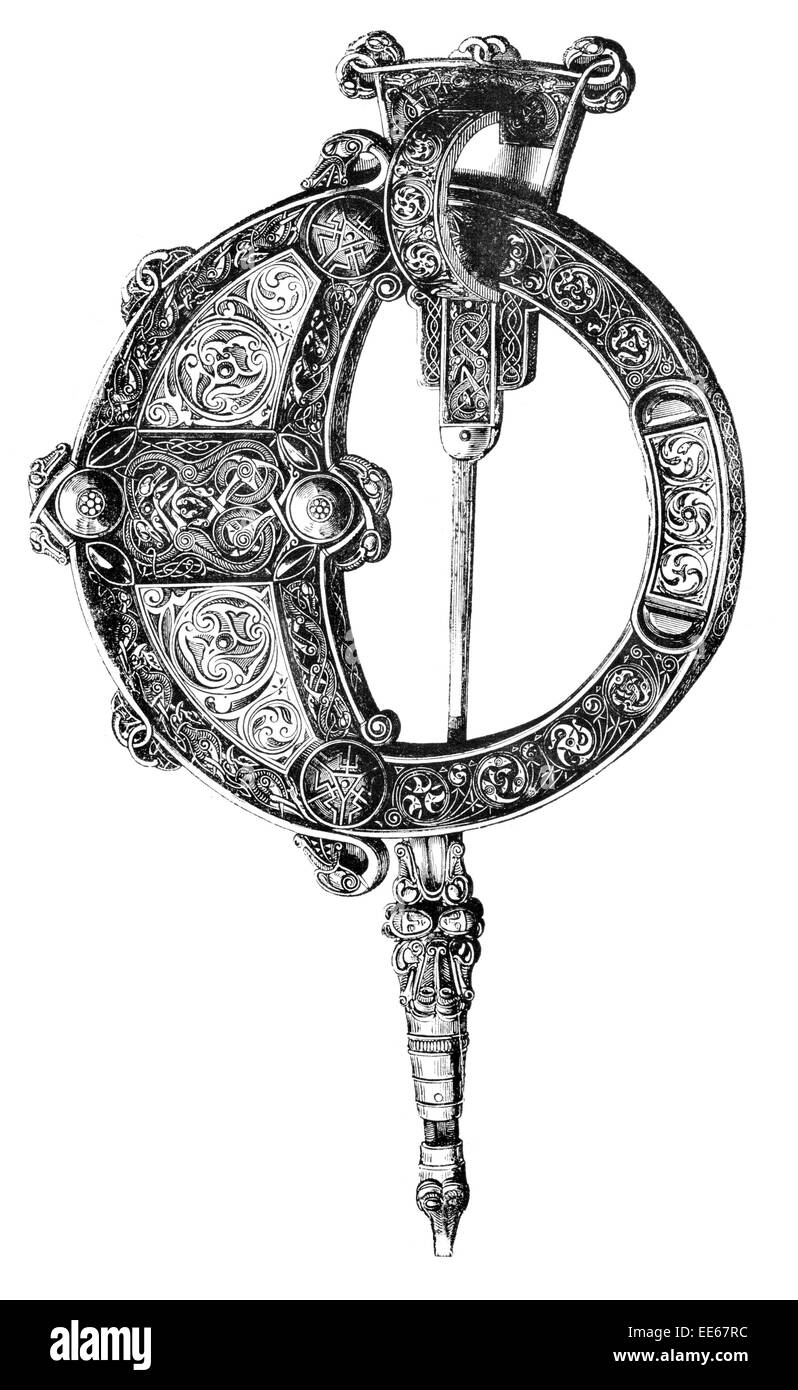 Tara Brooch Back Drogheda Celtic Anglo Saxon Ancient art jewelry pin Irish pseudo-penannular silver gilt Stock Photohttps://www.alamy.com/image-license-details/?v=1https://www.alamy.com/stock-photo-tara-brooch-back-drogheda-celtic-anglo-saxon-ancient-art-jewelry-pin-77584512.html
Tara Brooch Back Drogheda Celtic Anglo Saxon Ancient art jewelry pin Irish pseudo-penannular silver gilt Stock Photohttps://www.alamy.com/image-license-details/?v=1https://www.alamy.com/stock-photo-tara-brooch-back-drogheda-celtic-anglo-saxon-ancient-art-jewelry-pin-77584512.htmlRFEE67RC–Tara Brooch Back Drogheda Celtic Anglo Saxon Ancient art jewelry pin Irish pseudo-penannular silver gilt
 The saints and missionaries of the Anglo-Saxon era - First (and second) series (1897) Stock Photohttps://www.alamy.com/image-license-details/?v=1https://www.alamy.com/stock-photo-the-saints-and-missionaries-of-the-anglo-saxon-era-first-and-second-101810845.html
The saints and missionaries of the Anglo-Saxon era - First (and second) series (1897) Stock Photohttps://www.alamy.com/image-license-details/?v=1https://www.alamy.com/stock-photo-the-saints-and-missionaries-of-the-anglo-saxon-era-first-and-second-101810845.htmlRFFWHTNH–The saints and missionaries of the Anglo-Saxon era - First (and second) series (1897)
 Bill Wyman demonstrates metal detection in a field in Suffolk. Stock Photohttps://www.alamy.com/image-license-details/?v=1https://www.alamy.com/stock-photo-bill-wyman-demonstrates-metal-detection-in-a-field-in-suffolk-12683899.html
Bill Wyman demonstrates metal detection in a field in Suffolk. Stock Photohttps://www.alamy.com/image-license-details/?v=1https://www.alamy.com/stock-photo-bill-wyman-demonstrates-metal-detection-in-a-field-in-suffolk-12683899.htmlRMAAPTAM–Bill Wyman demonstrates metal detection in a field in Suffolk.
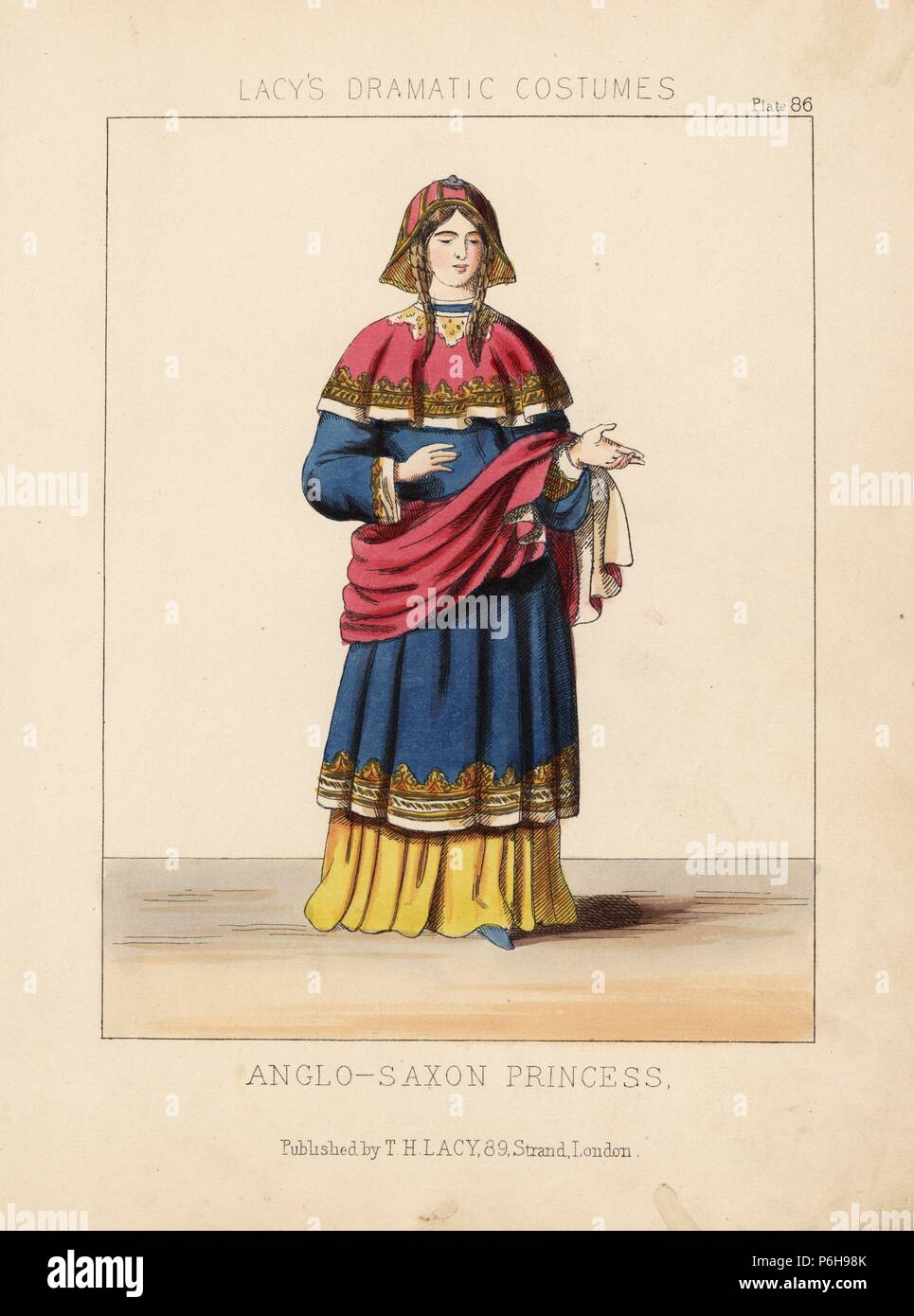 Costume of an Anglo-Saxon princess. Handcoloured lithograph from Thomas Hailes Lacy's 'Female Costumes Historical, National and Dramatic in 200 Plates,' London, 1865. Lacy (1809-1873) was a British actor, playwright, theatrical manager and publisher. Stock Photohttps://www.alamy.com/image-license-details/?v=1https://www.alamy.com/costume-of-an-anglo-saxon-princess-handcoloured-lithograph-from-thomas-hailes-lacys-female-costumes-historical-national-and-dramatic-in-200-plates-london-1865-lacy-1809-1873-was-a-british-actor-playwright-theatrical-manager-and-publisher-image210592835.html
Costume of an Anglo-Saxon princess. Handcoloured lithograph from Thomas Hailes Lacy's 'Female Costumes Historical, National and Dramatic in 200 Plates,' London, 1865. Lacy (1809-1873) was a British actor, playwright, theatrical manager and publisher. Stock Photohttps://www.alamy.com/image-license-details/?v=1https://www.alamy.com/costume-of-an-anglo-saxon-princess-handcoloured-lithograph-from-thomas-hailes-lacys-female-costumes-historical-national-and-dramatic-in-200-plates-london-1865-lacy-1809-1873-was-a-british-actor-playwright-theatrical-manager-and-publisher-image210592835.htmlRMP6H98K–Costume of an Anglo-Saxon princess. Handcoloured lithograph from Thomas Hailes Lacy's 'Female Costumes Historical, National and Dramatic in 200 Plates,' London, 1865. Lacy (1809-1873) was a British actor, playwright, theatrical manager and publisher.
 Victorian era vernicular rail tram and Grand Hotel Stock Photohttps://www.alamy.com/image-license-details/?v=1https://www.alamy.com/victorian-era-vernicular-rail-tram-and-grand-hotel-image5375362.html
Victorian era vernicular rail tram and Grand Hotel Stock Photohttps://www.alamy.com/image-license-details/?v=1https://www.alamy.com/victorian-era-vernicular-rail-tram-and-grand-hotel-image5375362.htmlRMAW4N83–Victorian era vernicular rail tram and Grand Hotel
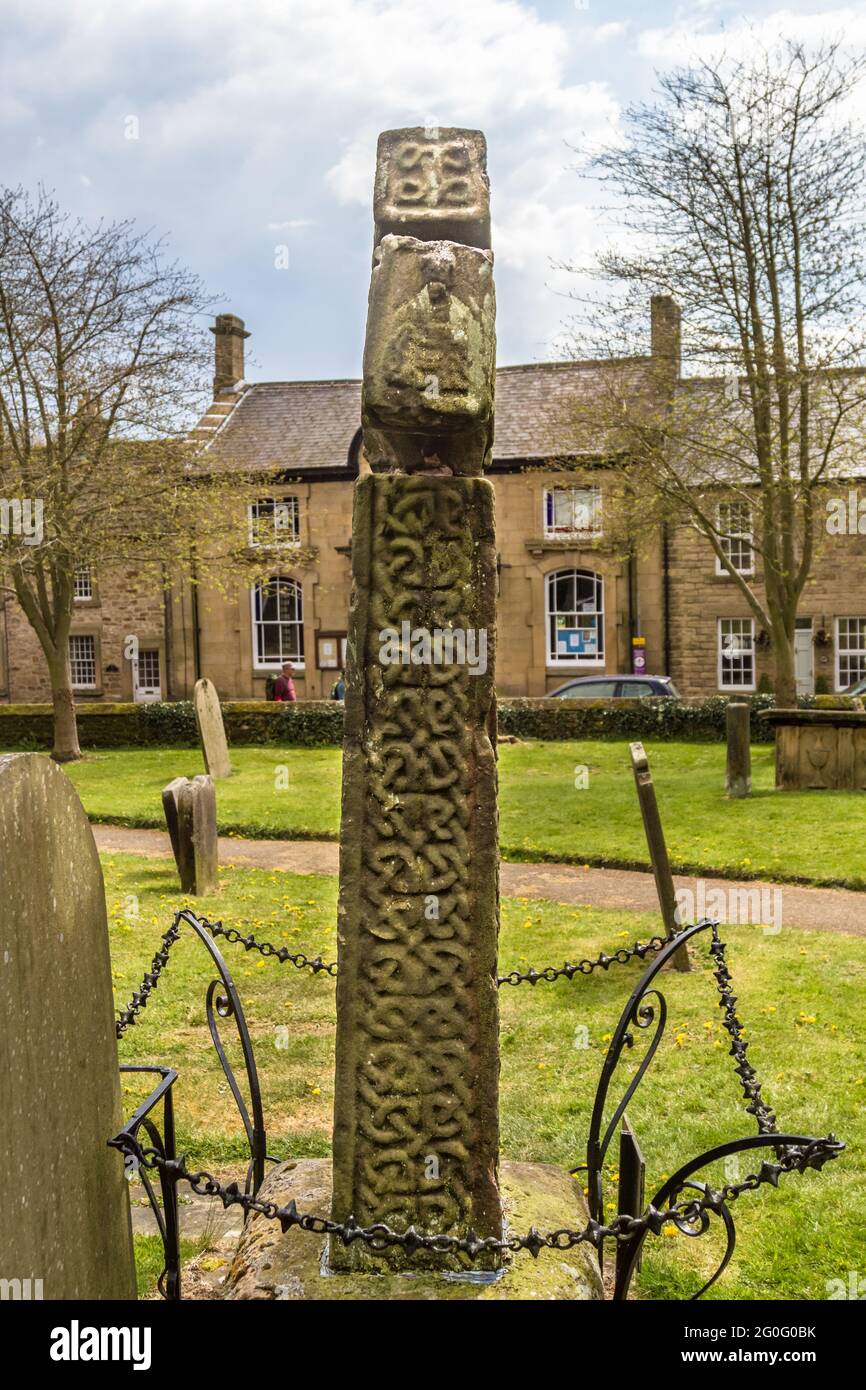 An Anglo-Saxon era stone cross in Eyam village - North edge Stock Photohttps://www.alamy.com/image-license-details/?v=1https://www.alamy.com/an-anglo-saxon-era-stone-cross-in-eyam-village-north-edge-image430610759.html
An Anglo-Saxon era stone cross in Eyam village - North edge Stock Photohttps://www.alamy.com/image-license-details/?v=1https://www.alamy.com/an-anglo-saxon-era-stone-cross-in-eyam-village-north-edge-image430610759.htmlRM2G0G0BK–An Anglo-Saxon era stone cross in Eyam village - North edge
![. The saints and missionaries of the Anglo-Saxon era : First [and second] series. nt of controversy was the observance of the LordsDay. The Scots hitherto had paid no attention to this, but had donetheir ordinary work on Sundays as on other days of the week. TheQueen reproved them for this, shewing from Scripture and from theprecepts of the Church that Christians were bound to do honour tothat day, and to abstain from their ordinary work. In this matter, weare told, the Queen was most successful, for the Scots henceforthbegan to reverence the Lords Day, so that no one would carry any burden on Stock Photo . The saints and missionaries of the Anglo-Saxon era : First [and second] series. nt of controversy was the observance of the LordsDay. The Scots hitherto had paid no attention to this, but had donetheir ordinary work on Sundays as on other days of the week. TheQueen reproved them for this, shewing from Scripture and from theprecepts of the Church that Christians were bound to do honour tothat day, and to abstain from their ordinary work. In this matter, weare told, the Queen was most successful, for the Scots henceforthbegan to reverence the Lords Day, so that no one would carry any burden on Stock Photo](https://c8.alamy.com/comp/2AGAHK5/the-saints-and-missionaries-of-the-anglo-saxon-era-first-and-second-series-nt-of-controversy-was-the-observance-of-the-lordsday-the-scots-hitherto-had-paid-no-attention-to-this-but-had-donetheir-ordinary-work-on-sundays-as-on-other-days-of-the-week-thequeen-reproved-them-for-this-shewing-from-scripture-and-from-theprecepts-of-the-church-that-christians-were-bound-to-do-honour-tothat-day-and-to-abstain-from-their-ordinary-work-in-this-matter-weare-told-the-queen-was-most-successful-for-the-scots-henceforthbegan-to-reverence-the-lords-day-so-that-no-one-would-carry-any-burden-on-2AGAHK5.jpg) . The saints and missionaries of the Anglo-Saxon era : First [and second] series. nt of controversy was the observance of the LordsDay. The Scots hitherto had paid no attention to this, but had donetheir ordinary work on Sundays as on other days of the week. TheQueen reproved them for this, shewing from Scripture and from theprecepts of the Church that Christians were bound to do honour tothat day, and to abstain from their ordinary work. In this matter, weare told, the Queen was most successful, for the Scots henceforthbegan to reverence the Lords Day, so that no one would carry any burden on Stock Photohttps://www.alamy.com/image-license-details/?v=1https://www.alamy.com/the-saints-and-missionaries-of-the-anglo-saxon-era-first-and-second-series-nt-of-controversy-was-the-observance-of-the-lordsday-the-scots-hitherto-had-paid-no-attention-to-this-but-had-donetheir-ordinary-work-on-sundays-as-on-other-days-of-the-week-thequeen-reproved-them-for-this-shewing-from-scripture-and-from-theprecepts-of-the-church-that-christians-were-bound-to-do-honour-tothat-day-and-to-abstain-from-their-ordinary-work-in-this-matter-weare-told-the-queen-was-most-successful-for-the-scots-henceforthbegan-to-reverence-the-lords-day-so-that-no-one-would-carry-any-burden-on-image337064873.html
. The saints and missionaries of the Anglo-Saxon era : First [and second] series. nt of controversy was the observance of the LordsDay. The Scots hitherto had paid no attention to this, but had donetheir ordinary work on Sundays as on other days of the week. TheQueen reproved them for this, shewing from Scripture and from theprecepts of the Church that Christians were bound to do honour tothat day, and to abstain from their ordinary work. In this matter, weare told, the Queen was most successful, for the Scots henceforthbegan to reverence the Lords Day, so that no one would carry any burden on Stock Photohttps://www.alamy.com/image-license-details/?v=1https://www.alamy.com/the-saints-and-missionaries-of-the-anglo-saxon-era-first-and-second-series-nt-of-controversy-was-the-observance-of-the-lordsday-the-scots-hitherto-had-paid-no-attention-to-this-but-had-donetheir-ordinary-work-on-sundays-as-on-other-days-of-the-week-thequeen-reproved-them-for-this-shewing-from-scripture-and-from-theprecepts-of-the-church-that-christians-were-bound-to-do-honour-tothat-day-and-to-abstain-from-their-ordinary-work-in-this-matter-weare-told-the-queen-was-most-successful-for-the-scots-henceforthbegan-to-reverence-the-lords-day-so-that-no-one-would-carry-any-burden-on-image337064873.htmlRM2AGAHK5–. The saints and missionaries of the Anglo-Saxon era : First [and second] series. nt of controversy was the observance of the LordsDay. The Scots hitherto had paid no attention to this, but had donetheir ordinary work on Sundays as on other days of the week. TheQueen reproved them for this, shewing from Scripture and from theprecepts of the Church that Christians were bound to do honour tothat day, and to abstain from their ordinary work. In this matter, weare told, the Queen was most successful, for the Scots henceforthbegan to reverence the Lords Day, so that no one would carry any burden on
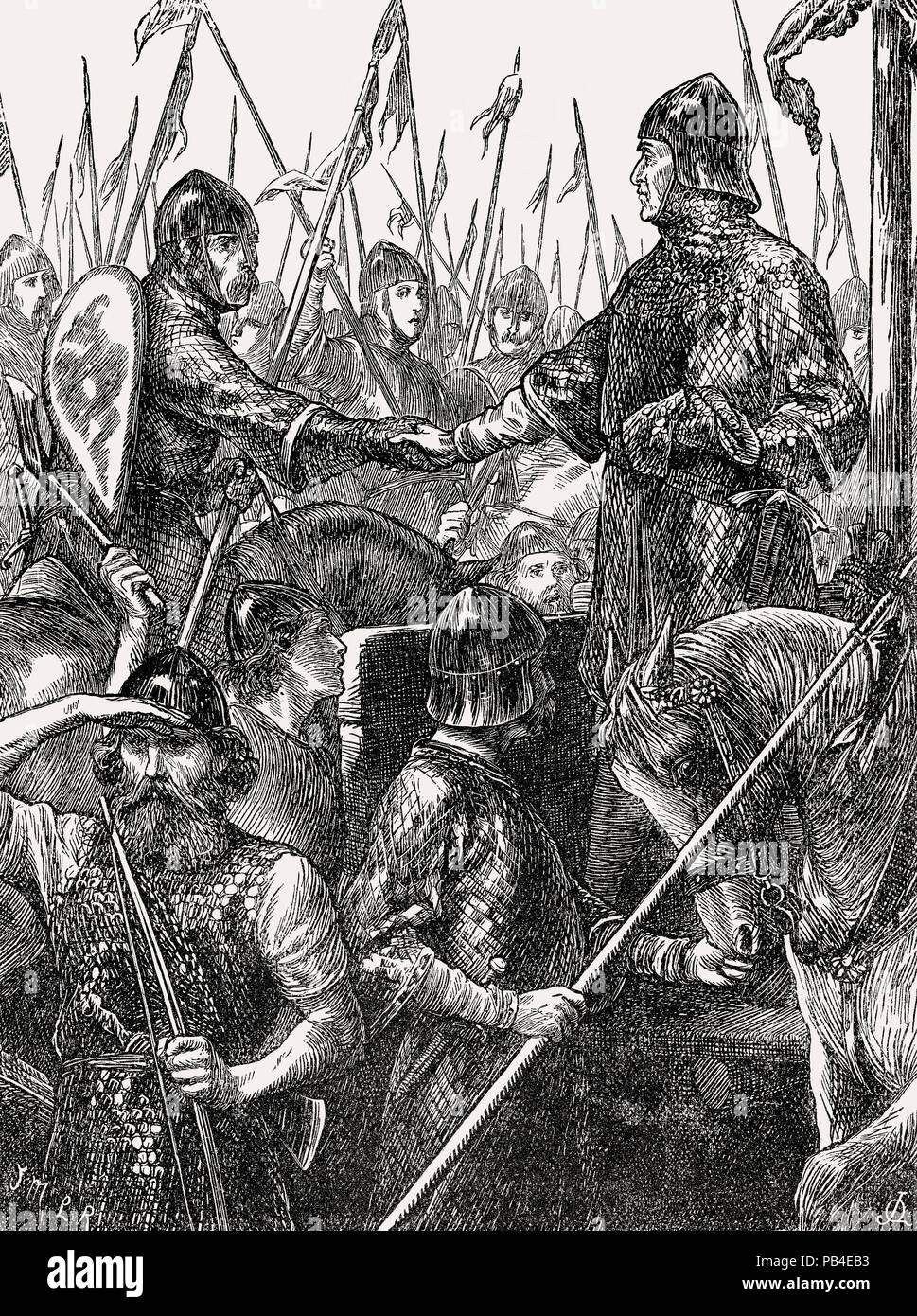 Walter Espec and William le Gros, the Earl of Albemarle, at the Battle of the Standard, 1138, From British Battles on Land and Sea, by James Grant Stock Photohttps://www.alamy.com/image-license-details/?v=1https://www.alamy.com/walter-espec-and-william-le-gros-the-earl-of-albemarle-at-the-battle-of-the-standard-1138-from-british-battles-on-land-and-sea-by-james-grant-image213384727.html
Walter Espec and William le Gros, the Earl of Albemarle, at the Battle of the Standard, 1138, From British Battles on Land and Sea, by James Grant Stock Photohttps://www.alamy.com/image-license-details/?v=1https://www.alamy.com/walter-espec-and-william-le-gros-the-earl-of-albemarle-at-the-battle-of-the-standard-1138-from-british-battles-on-land-and-sea-by-james-grant-image213384727.htmlRMPB4EB3–Walter Espec and William le Gros, the Earl of Albemarle, at the Battle of the Standard, 1138, From British Battles on Land and Sea, by James Grant
 Looking up at the central tower of 1,000-year old and historic Norman-era Winchester Cathedral in Winchester, Hampshire, UK. Stock Photohttps://www.alamy.com/image-license-details/?v=1https://www.alamy.com/looking-up-at-the-central-tower-of-1000-year-old-and-historic-norman-era-winchester-cathedral-in-winchester-hampshire-uk-image560908440.html
Looking up at the central tower of 1,000-year old and historic Norman-era Winchester Cathedral in Winchester, Hampshire, UK. Stock Photohttps://www.alamy.com/image-license-details/?v=1https://www.alamy.com/looking-up-at-the-central-tower-of-1000-year-old-and-historic-norman-era-winchester-cathedral-in-winchester-hampshire-uk-image560908440.htmlRF2RGFGC8–Looking up at the central tower of 1,000-year old and historic Norman-era Winchester Cathedral in Winchester, Hampshire, UK.
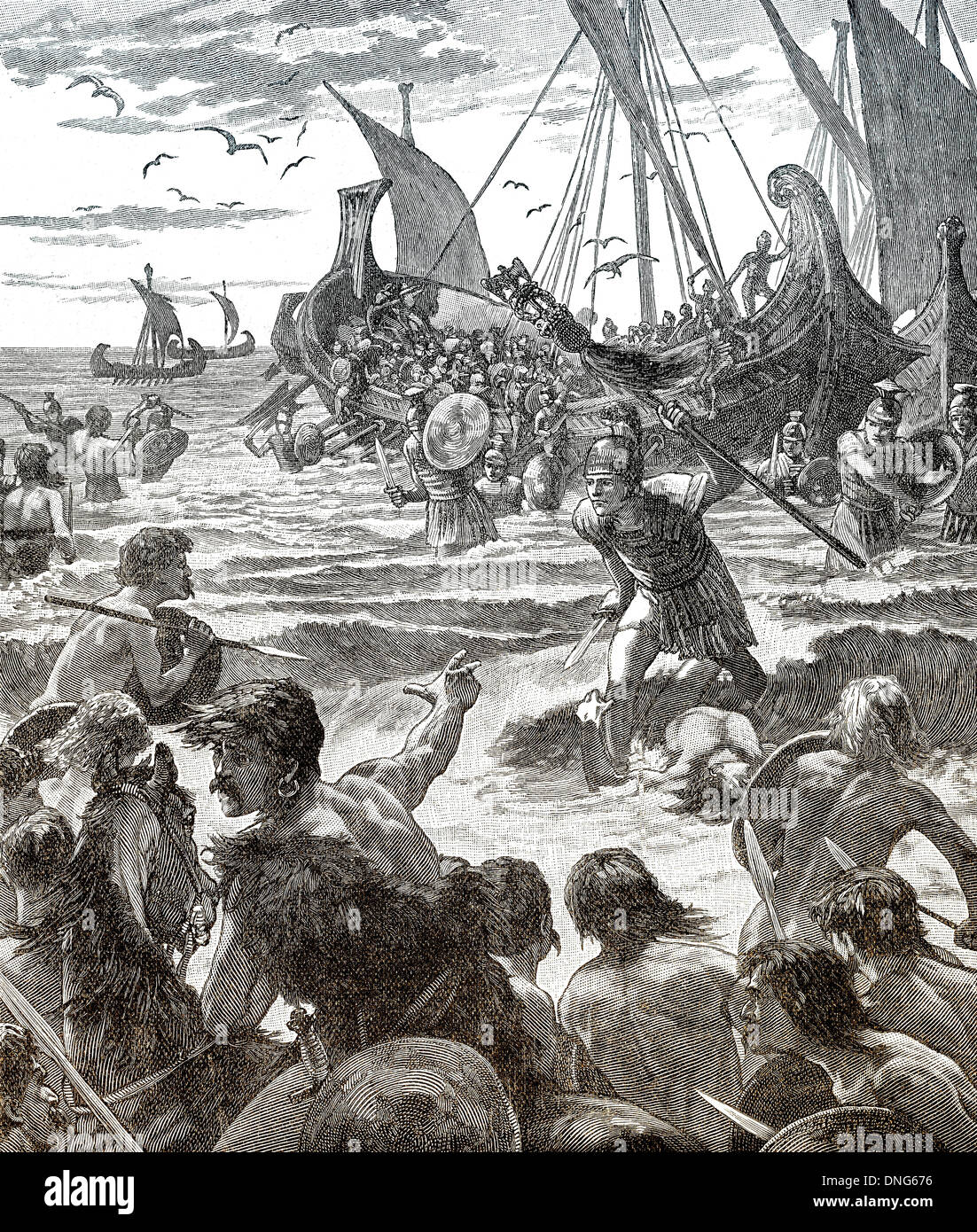 The Roman invasion in Kent, England, first Century Stock Photohttps://www.alamy.com/image-license-details/?v=1https://www.alamy.com/the-roman-invasion-in-kent-england-first-century-image64895018.html
The Roman invasion in Kent, England, first Century Stock Photohttps://www.alamy.com/image-license-details/?v=1https://www.alamy.com/the-roman-invasion-in-kent-england-first-century-image64895018.htmlRMDNG676–The Roman invasion in Kent, England, first Century
 The statue of St. Aidan of Lindisfarne by the artist kathleen Parbury (1958) and the ruined walls of Lindisfarne priory, on Holy Island, on 27th June 2019, on Lindisfarne Island, Northumberland, England. The Holy Island of Lindisfarne, also known simply as Holy Island, is an island off the northeast coast of England. Holy Island has a recorded history from the 6th century AD; it was an important centre of Celtic and Anglo-saxon Christianity. After the Viking invasions and the Norman conquest of England, a priory was reestablished. Stock Photohttps://www.alamy.com/image-license-details/?v=1https://www.alamy.com/the-statue-of-st-aidan-of-lindisfarne-by-the-artist-kathleen-parbury-1958-and-the-ruined-walls-of-lindisfarne-priory-on-holy-island-on-27th-june-2019-on-lindisfarne-island-northumberland-england-the-holy-island-of-lindisfarne-also-known-simply-as-holy-island-is-an-island-off-the-northeast-coast-of-england-holy-island-has-a-recorded-history-from-the-6th-century-ad-it-was-an-important-centre-of-celtic-and-anglo-saxon-christianity-after-the-viking-invasions-and-the-norman-conquest-of-england-a-priory-was-reestablished-image258979471.html
The statue of St. Aidan of Lindisfarne by the artist kathleen Parbury (1958) and the ruined walls of Lindisfarne priory, on Holy Island, on 27th June 2019, on Lindisfarne Island, Northumberland, England. The Holy Island of Lindisfarne, also known simply as Holy Island, is an island off the northeast coast of England. Holy Island has a recorded history from the 6th century AD; it was an important centre of Celtic and Anglo-saxon Christianity. After the Viking invasions and the Norman conquest of England, a priory was reestablished. Stock Photohttps://www.alamy.com/image-license-details/?v=1https://www.alamy.com/the-statue-of-st-aidan-of-lindisfarne-by-the-artist-kathleen-parbury-1958-and-the-ruined-walls-of-lindisfarne-priory-on-holy-island-on-27th-june-2019-on-lindisfarne-island-northumberland-england-the-holy-island-of-lindisfarne-also-known-simply-as-holy-island-is-an-island-off-the-northeast-coast-of-england-holy-island-has-a-recorded-history-from-the-6th-century-ad-it-was-an-important-centre-of-celtic-and-anglo-saxon-christianity-after-the-viking-invasions-and-the-norman-conquest-of-england-a-priory-was-reestablished-image258979471.htmlRMW19EXR–The statue of St. Aidan of Lindisfarne by the artist kathleen Parbury (1958) and the ruined walls of Lindisfarne priory, on Holy Island, on 27th June 2019, on Lindisfarne Island, Northumberland, England. The Holy Island of Lindisfarne, also known simply as Holy Island, is an island off the northeast coast of England. Holy Island has a recorded history from the 6th century AD; it was an important centre of Celtic and Anglo-saxon Christianity. After the Viking invasions and the Norman conquest of England, a priory was reestablished.
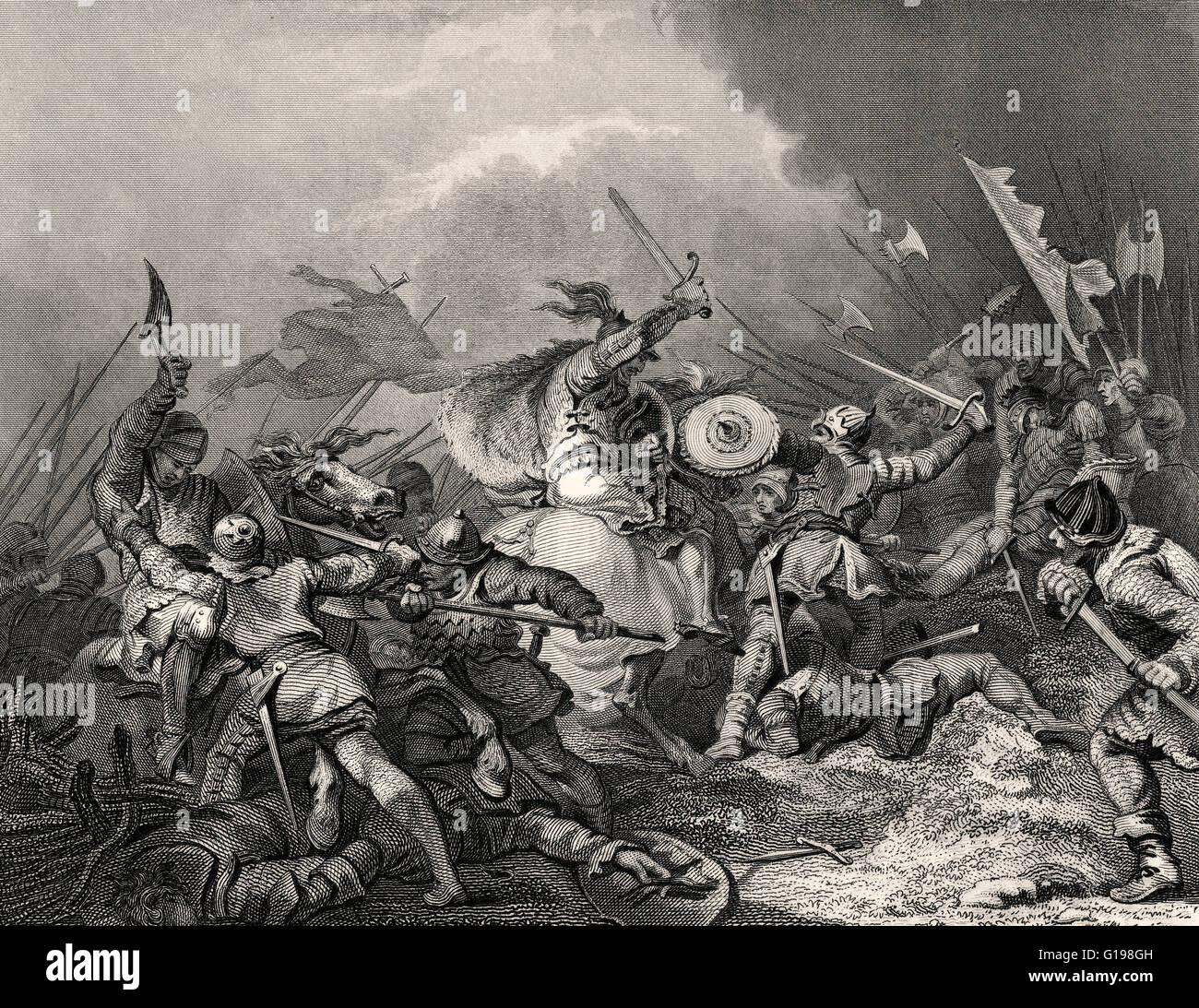 The Battle of Hastings, on 14 October 1066 Stock Photohttps://www.alamy.com/image-license-details/?v=1https://www.alamy.com/stock-photo-the-battle-of-hastings-on-14-october-1066-104081169.html
The Battle of Hastings, on 14 October 1066 Stock Photohttps://www.alamy.com/image-license-details/?v=1https://www.alamy.com/stock-photo-the-battle-of-hastings-on-14-october-1066-104081169.htmlRMG198GH–The Battle of Hastings, on 14 October 1066
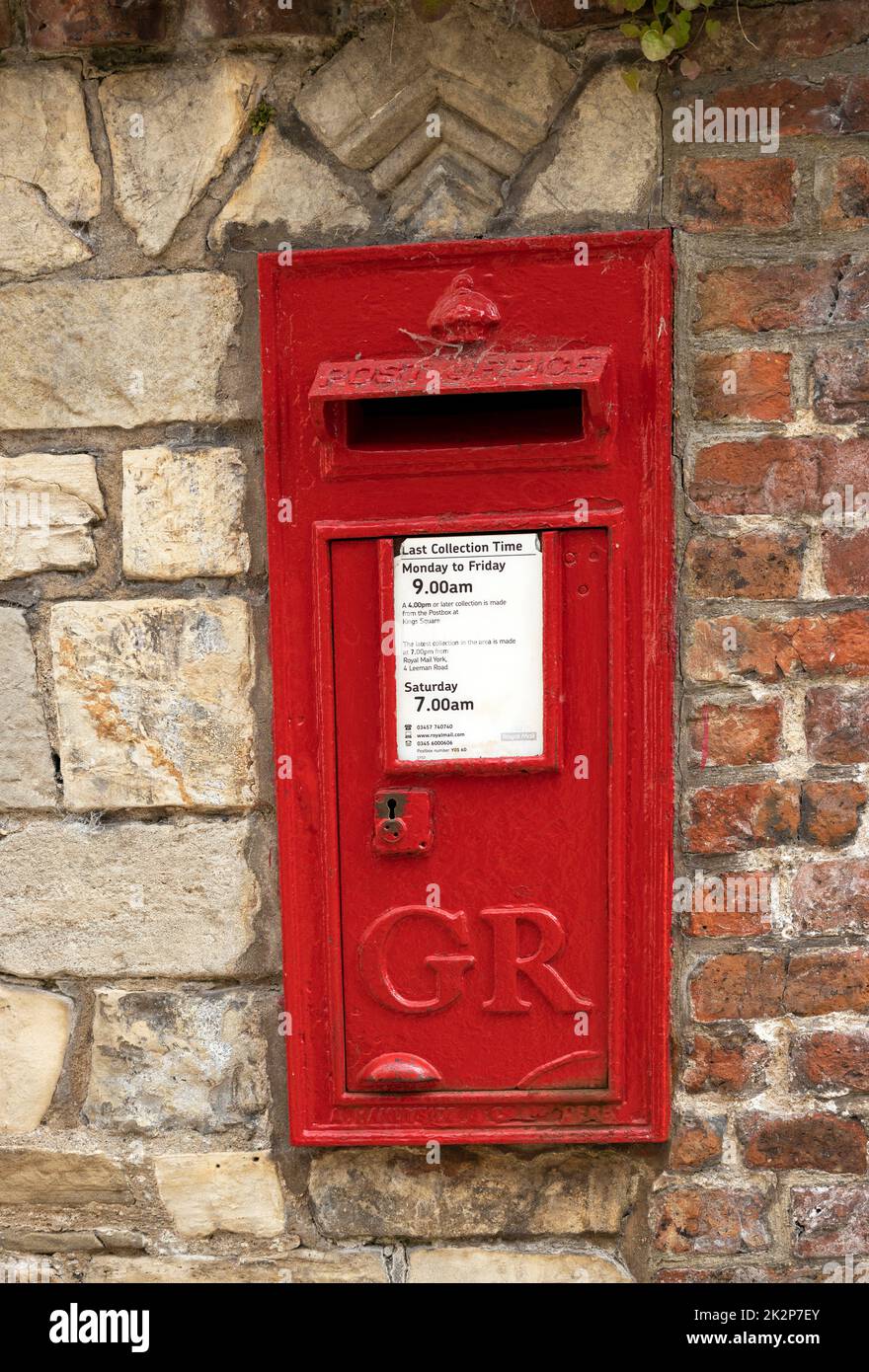 An old wall mounted postbox from the reign of King George, the late Queen's father is still in daily use next to York Minster. Stock Photohttps://www.alamy.com/image-license-details/?v=1https://www.alamy.com/an-old-wall-mounted-postbox-from-the-reign-of-king-george-the-late-queens-father-is-still-in-daily-use-next-to-york-minster-image483608467.html
An old wall mounted postbox from the reign of King George, the late Queen's father is still in daily use next to York Minster. Stock Photohttps://www.alamy.com/image-license-details/?v=1https://www.alamy.com/an-old-wall-mounted-postbox-from-the-reign-of-king-george-the-late-queens-father-is-still-in-daily-use-next-to-york-minster-image483608467.htmlRM2K2P7EY–An old wall mounted postbox from the reign of King George, the late Queen's father is still in daily use next to York Minster.
 The noted Saxon-era Saint Helens Church in Abingdon is a local landmark, visible from the River Thames and miles around. A Christian place of worship Stock Photohttps://www.alamy.com/image-license-details/?v=1https://www.alamy.com/the-noted-saxon-era-saint-helens-church-in-abingdon-is-a-local-landmark-visible-from-the-river-thames-and-miles-around-a-christian-place-of-worship-image476030278.html
The noted Saxon-era Saint Helens Church in Abingdon is a local landmark, visible from the River Thames and miles around. A Christian place of worship Stock Photohttps://www.alamy.com/image-license-details/?v=1https://www.alamy.com/the-noted-saxon-era-saint-helens-church-in-abingdon-is-a-local-landmark-visible-from-the-river-thames-and-miles-around-a-christian-place-of-worship-image476030278.htmlRM2JJD1DA–The noted Saxon-era Saint Helens Church in Abingdon is a local landmark, visible from the River Thames and miles around. A Christian place of worship
 The Roman massacre of the Celtic Druids on the Isle of Anglesey in 61 AD Stock Photohttps://www.alamy.com/image-license-details/?v=1https://www.alamy.com/stock-photo-the-roman-massacre-of-the-celtic-druids-on-the-isle-of-anglesey-in-104226408.html
The Roman massacre of the Celtic Druids on the Isle of Anglesey in 61 AD Stock Photohttps://www.alamy.com/image-license-details/?v=1https://www.alamy.com/stock-photo-the-roman-massacre-of-the-celtic-druids-on-the-isle-of-anglesey-in-104226408.htmlRMG1FWRM–The Roman massacre of the Celtic Druids on the Isle of Anglesey in 61 AD
 Somerton /ˈsʌmərtən/ is a town and civil parish in the English county of Somerset, England.The Butter Cross and Marrket Square, and The White Hart Stock Photohttps://www.alamy.com/image-license-details/?v=1https://www.alamy.com/somerton-smrtn-is-a-town-and-civil-parish-in-the-english-county-of-somerset-englandthe-butter-cross-and-marrket-square-and-the-white-hart-image243000078.html
Somerton /ˈsʌmərtən/ is a town and civil parish in the English county of Somerset, England.The Butter Cross and Marrket Square, and The White Hart Stock Photohttps://www.alamy.com/image-license-details/?v=1https://www.alamy.com/somerton-smrtn-is-a-town-and-civil-parish-in-the-english-county-of-somerset-englandthe-butter-cross-and-marrket-square-and-the-white-hart-image243000078.htmlRFT39H26–Somerton /ˈsʌmərtən/ is a town and civil parish in the English county of Somerset, England.The Butter Cross and Marrket Square, and The White Hart
 Anglo Saxon Britain. Doorway from the Palace of Westminster. Victorian woodcut circa 1845. Stock Photohttps://www.alamy.com/image-license-details/?v=1https://www.alamy.com/anglo-saxon-britain-doorway-from-the-palace-of-westminster-victorian-image61893598.html
Anglo Saxon Britain. Doorway from the Palace of Westminster. Victorian woodcut circa 1845. Stock Photohttps://www.alamy.com/image-license-details/?v=1https://www.alamy.com/anglo-saxon-britain-doorway-from-the-palace-of-westminster-victorian-image61893598.htmlRMDGKDWJ–Anglo Saxon Britain. Doorway from the Palace of Westminster. Victorian woodcut circa 1845.
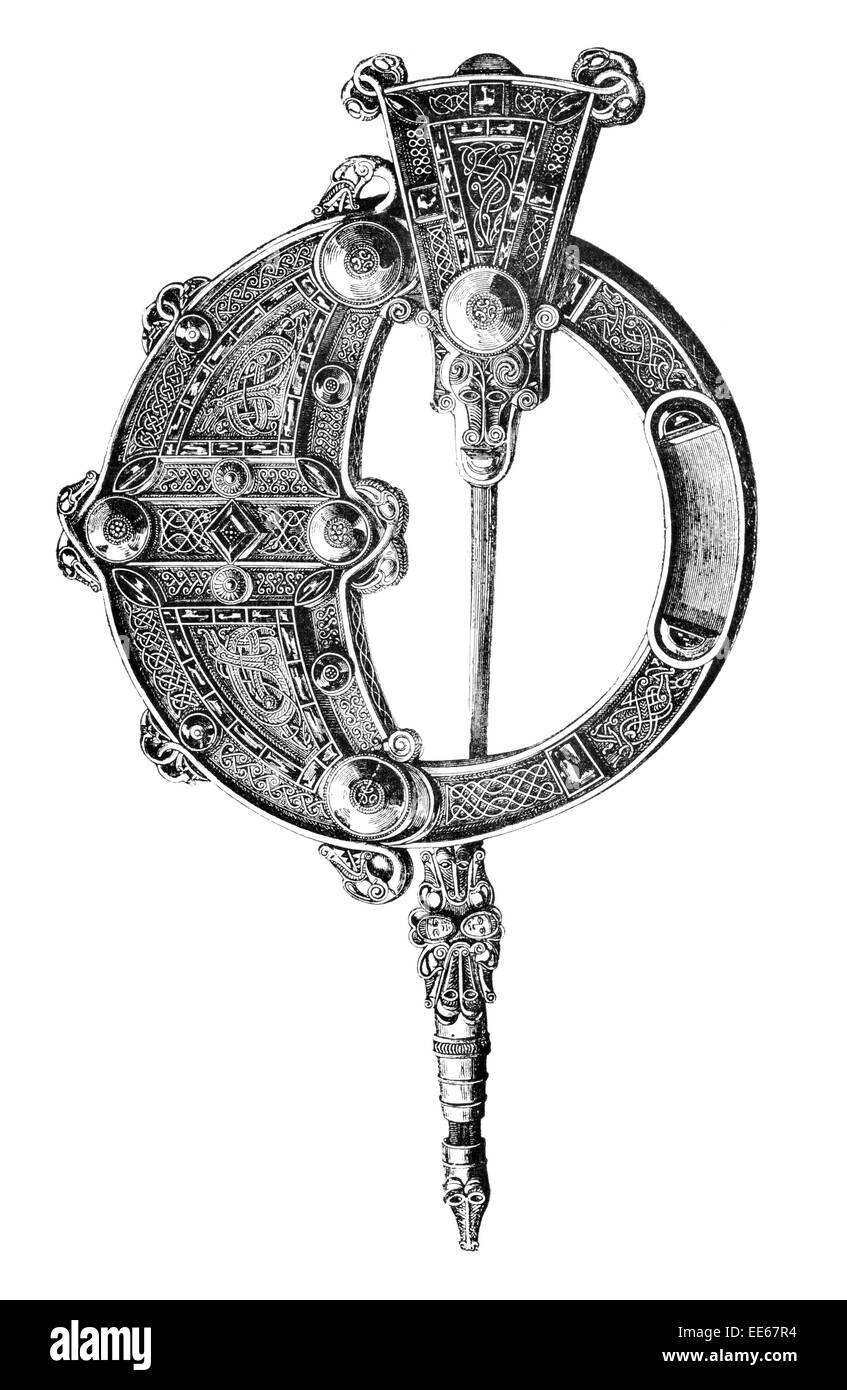 Tara Brooch Front Drogheda Celtic Anglo Saxon Ancient art jewelry pin Irish pseudo-penannular silver gilt Stock Photohttps://www.alamy.com/image-license-details/?v=1https://www.alamy.com/stock-photo-tara-brooch-front-drogheda-celtic-anglo-saxon-ancient-art-jewelry-77584504.html
Tara Brooch Front Drogheda Celtic Anglo Saxon Ancient art jewelry pin Irish pseudo-penannular silver gilt Stock Photohttps://www.alamy.com/image-license-details/?v=1https://www.alamy.com/stock-photo-tara-brooch-front-drogheda-celtic-anglo-saxon-ancient-art-jewelry-77584504.htmlRFEE67R4–Tara Brooch Front Drogheda Celtic Anglo Saxon Ancient art jewelry pin Irish pseudo-penannular silver gilt
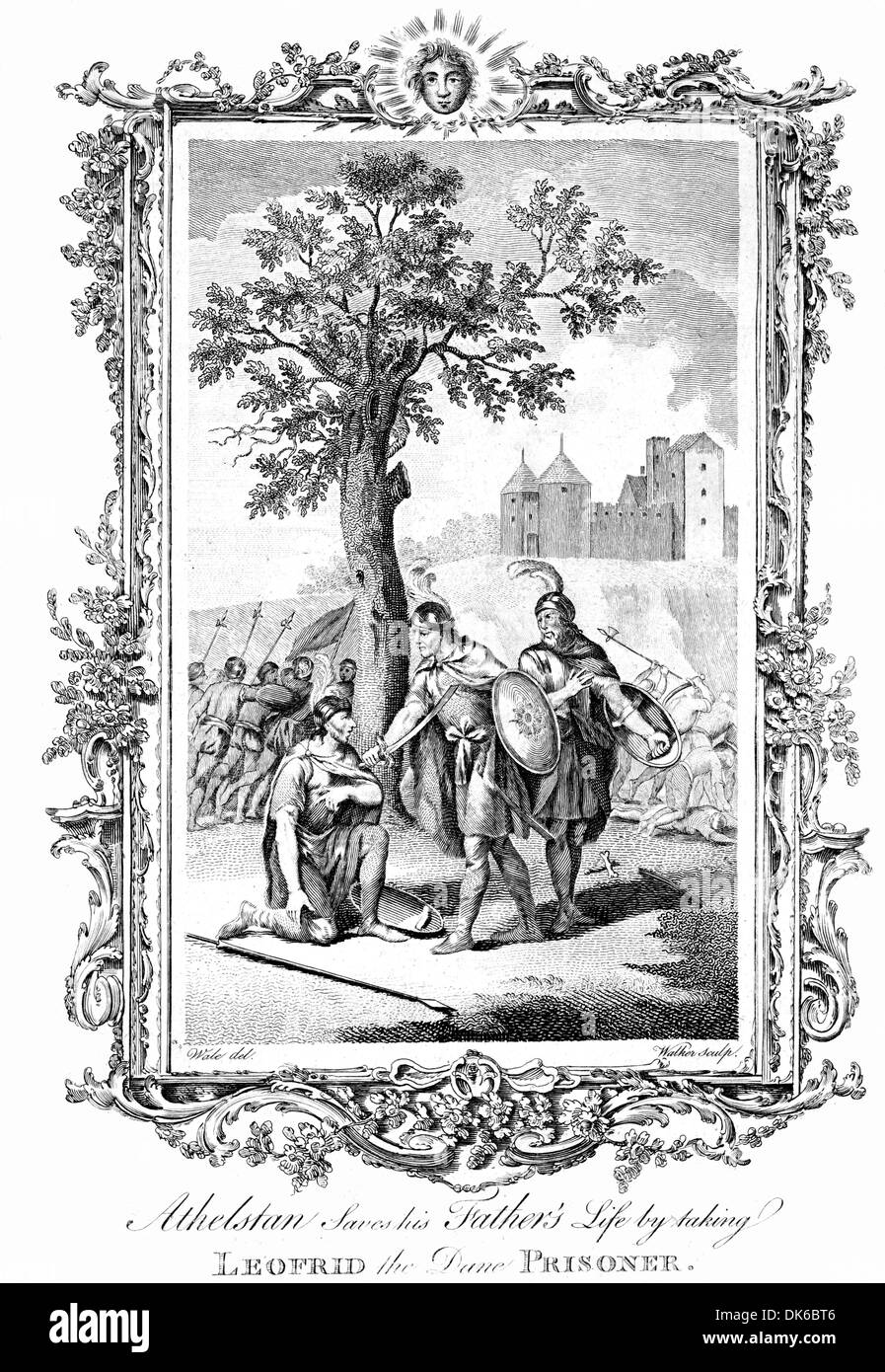 Athelstan Saves his Father’s Life by taking Leofrid the Dane Prisoner Stock Photohttps://www.alamy.com/image-license-details/?v=1https://www.alamy.com/athelstan-saves-his-fathers-life-by-taking-leofrid-the-dane-prisoner-image63450582.html
Athelstan Saves his Father’s Life by taking Leofrid the Dane Prisoner Stock Photohttps://www.alamy.com/image-license-details/?v=1https://www.alamy.com/athelstan-saves-his-fathers-life-by-taking-leofrid-the-dane-prisoner-image63450582.htmlRMDK6BT6–Athelstan Saves his Father’s Life by taking Leofrid the Dane Prisoner
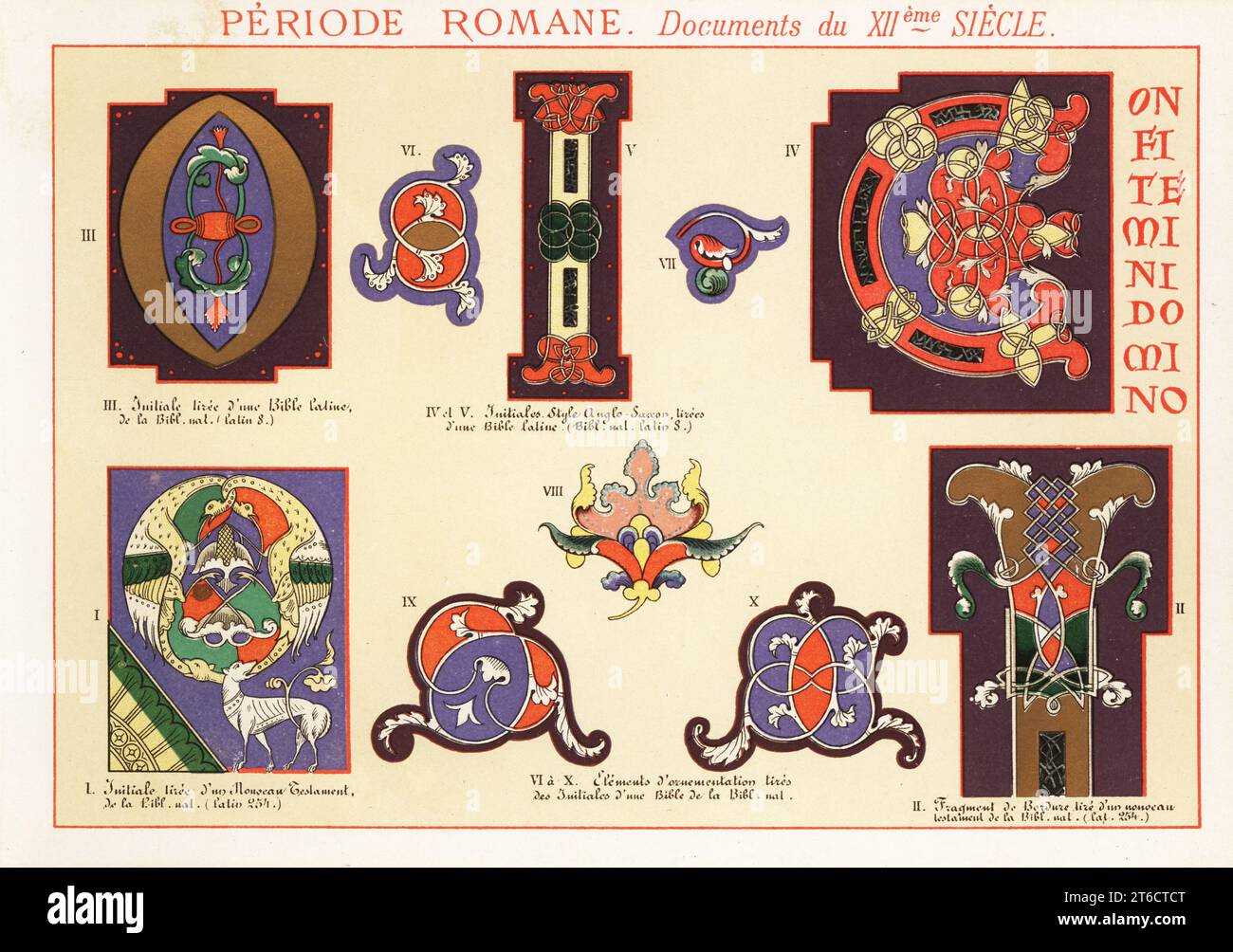 Initials, Anglo-Saxon initials, design elements from documents of the Roman period, 12th century. Taken from a New Testament and a Bible. I,II Nouveau Testament Latin 254, III-V Bible Latin 8, VI-X Bible. Chromolithograph designed and lithographed by Ernst Guillot from Elements dOrnementation pour lEnluminure (Elements of Ornamentation for Illumination), Renouard, Paris, 1890. Stock Photohttps://www.alamy.com/image-license-details/?v=1https://www.alamy.com/initials-anglo-saxon-initials-design-elements-from-documents-of-the-roman-period-12th-century-taken-from-a-new-testament-and-a-bible-iii-nouveau-testament-latin-254-iii-v-bible-latin-8-vi-x-bible-chromolithograph-designed-and-lithographed-by-ernst-guillot-from-elements-dornementation-pour-lenluminure-elements-of-ornamentation-for-illumination-renouard-paris-1890-image571912680.html
Initials, Anglo-Saxon initials, design elements from documents of the Roman period, 12th century. Taken from a New Testament and a Bible. I,II Nouveau Testament Latin 254, III-V Bible Latin 8, VI-X Bible. Chromolithograph designed and lithographed by Ernst Guillot from Elements dOrnementation pour lEnluminure (Elements of Ornamentation for Illumination), Renouard, Paris, 1890. Stock Photohttps://www.alamy.com/image-license-details/?v=1https://www.alamy.com/initials-anglo-saxon-initials-design-elements-from-documents-of-the-roman-period-12th-century-taken-from-a-new-testament-and-a-bible-iii-nouveau-testament-latin-254-iii-v-bible-latin-8-vi-x-bible-chromolithograph-designed-and-lithographed-by-ernst-guillot-from-elements-dornementation-pour-lenluminure-elements-of-ornamentation-for-illumination-renouard-paris-1890-image571912680.htmlRM2T6CTCT–Initials, Anglo-Saxon initials, design elements from documents of the Roman period, 12th century. Taken from a New Testament and a Bible. I,II Nouveau Testament Latin 254, III-V Bible Latin 8, VI-X Bible. Chromolithograph designed and lithographed by Ernst Guillot from Elements dOrnementation pour lEnluminure (Elements of Ornamentation for Illumination), Renouard, Paris, 1890.
 Bill Wyman demonstrates metal detection in a field in Suffolk. Stock Photohttps://www.alamy.com/image-license-details/?v=1https://www.alamy.com/stock-photo-bill-wyman-demonstrates-metal-detection-in-a-field-in-suffolk-12685245.html
Bill Wyman demonstrates metal detection in a field in Suffolk. Stock Photohttps://www.alamy.com/image-license-details/?v=1https://www.alamy.com/stock-photo-bill-wyman-demonstrates-metal-detection-in-a-field-in-suffolk-12685245.htmlRMAAR0AP–Bill Wyman demonstrates metal detection in a field in Suffolk.
![. The saints and missionaries of the Anglo-Saxon era : First [and second] series. of the Church. Thatnight he went to bed at the usual time, and rose, aswas his custom, at midnight, for Nocturns in theChurch, where he remained after the Service inprivate prayer till the morning dawned. Then hewent to the chamber where his pensioners wereawaiting him, and washed their feet. When all hadbeen completed—and they, before leaving, were bowingtheir thanks—he suddenly fell down and expired attheir feet. Thus this holy man, faithful to the end,passed through death into life whilst engaged inministering Stock Photo . The saints and missionaries of the Anglo-Saxon era : First [and second] series. of the Church. Thatnight he went to bed at the usual time, and rose, aswas his custom, at midnight, for Nocturns in theChurch, where he remained after the Service inprivate prayer till the morning dawned. Then hewent to the chamber where his pensioners wereawaiting him, and washed their feet. When all hadbeen completed—and they, before leaving, were bowingtheir thanks—he suddenly fell down and expired attheir feet. Thus this holy man, faithful to the end,passed through death into life whilst engaged inministering Stock Photo](https://c8.alamy.com/comp/2AGAMP5/the-saints-and-missionaries-of-the-anglo-saxon-era-first-and-second-series-of-the-church-thatnight-he-went-to-bed-at-the-usual-time-and-rose-aswas-his-custom-at-midnight-for-nocturns-in-thechurch-where-he-remained-after-the-service-inprivate-prayer-till-the-morning-dawned-then-hewent-to-the-chamber-where-his-pensioners-wereawaiting-him-and-washed-their-feet-when-all-hadbeen-completedand-they-before-leaving-were-bowingtheir-thankshe-suddenly-fell-down-and-expired-attheir-feet-thus-this-holy-man-faithful-to-the-endpassed-through-death-into-life-whilst-engaged-inministering-2AGAMP5.jpg) . The saints and missionaries of the Anglo-Saxon era : First [and second] series. of the Church. Thatnight he went to bed at the usual time, and rose, aswas his custom, at midnight, for Nocturns in theChurch, where he remained after the Service inprivate prayer till the morning dawned. Then hewent to the chamber where his pensioners wereawaiting him, and washed their feet. When all hadbeen completed—and they, before leaving, were bowingtheir thanks—he suddenly fell down and expired attheir feet. Thus this holy man, faithful to the end,passed through death into life whilst engaged inministering Stock Photohttps://www.alamy.com/image-license-details/?v=1https://www.alamy.com/the-saints-and-missionaries-of-the-anglo-saxon-era-first-and-second-series-of-the-church-thatnight-he-went-to-bed-at-the-usual-time-and-rose-aswas-his-custom-at-midnight-for-nocturns-in-thechurch-where-he-remained-after-the-service-inprivate-prayer-till-the-morning-dawned-then-hewent-to-the-chamber-where-his-pensioners-wereawaiting-him-and-washed-their-feet-when-all-hadbeen-completedand-they-before-leaving-were-bowingtheir-thankshe-suddenly-fell-down-and-expired-attheir-feet-thus-this-holy-man-faithful-to-the-endpassed-through-death-into-life-whilst-engaged-inministering-image337067309.html
. The saints and missionaries of the Anglo-Saxon era : First [and second] series. of the Church. Thatnight he went to bed at the usual time, and rose, aswas his custom, at midnight, for Nocturns in theChurch, where he remained after the Service inprivate prayer till the morning dawned. Then hewent to the chamber where his pensioners wereawaiting him, and washed their feet. When all hadbeen completed—and they, before leaving, were bowingtheir thanks—he suddenly fell down and expired attheir feet. Thus this holy man, faithful to the end,passed through death into life whilst engaged inministering Stock Photohttps://www.alamy.com/image-license-details/?v=1https://www.alamy.com/the-saints-and-missionaries-of-the-anglo-saxon-era-first-and-second-series-of-the-church-thatnight-he-went-to-bed-at-the-usual-time-and-rose-aswas-his-custom-at-midnight-for-nocturns-in-thechurch-where-he-remained-after-the-service-inprivate-prayer-till-the-morning-dawned-then-hewent-to-the-chamber-where-his-pensioners-wereawaiting-him-and-washed-their-feet-when-all-hadbeen-completedand-they-before-leaving-were-bowingtheir-thankshe-suddenly-fell-down-and-expired-attheir-feet-thus-this-holy-man-faithful-to-the-endpassed-through-death-into-life-whilst-engaged-inministering-image337067309.htmlRM2AGAMP5–. The saints and missionaries of the Anglo-Saxon era : First [and second] series. of the Church. Thatnight he went to bed at the usual time, and rose, aswas his custom, at midnight, for Nocturns in theChurch, where he remained after the Service inprivate prayer till the morning dawned. Then hewent to the chamber where his pensioners wereawaiting him, and washed their feet. When all hadbeen completed—and they, before leaving, were bowingtheir thanks—he suddenly fell down and expired attheir feet. Thus this holy man, faithful to the end,passed through death into life whilst engaged inministering
 Looking up at the central tower of 1,000-year old and historic Norman-era Winchester Cathedral in Winchester, Hampshire, UK. Stock Photohttps://www.alamy.com/image-license-details/?v=1https://www.alamy.com/looking-up-at-the-central-tower-of-1000-year-old-and-historic-norman-era-winchester-cathedral-in-winchester-hampshire-uk-image560638728.html
Looking up at the central tower of 1,000-year old and historic Norman-era Winchester Cathedral in Winchester, Hampshire, UK. Stock Photohttps://www.alamy.com/image-license-details/?v=1https://www.alamy.com/looking-up-at-the-central-tower-of-1000-year-old-and-historic-norman-era-winchester-cathedral-in-winchester-hampshire-uk-image560638728.htmlRF2RG38BM–Looking up at the central tower of 1,000-year old and historic Norman-era Winchester Cathedral in Winchester, Hampshire, UK.